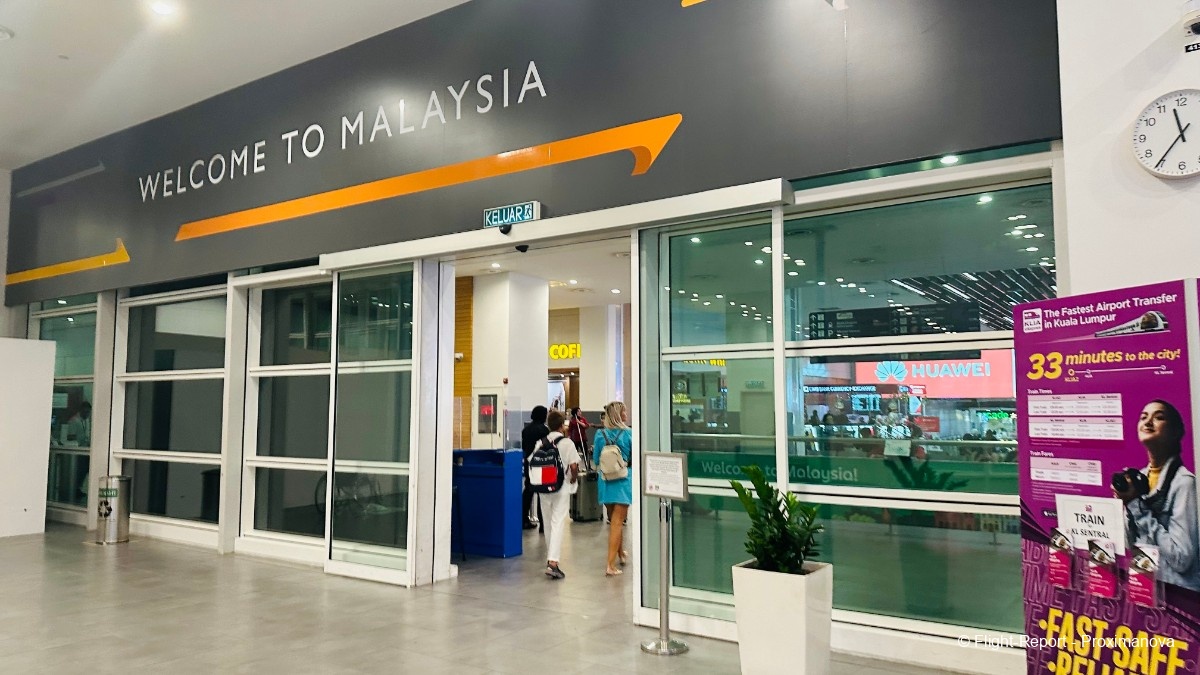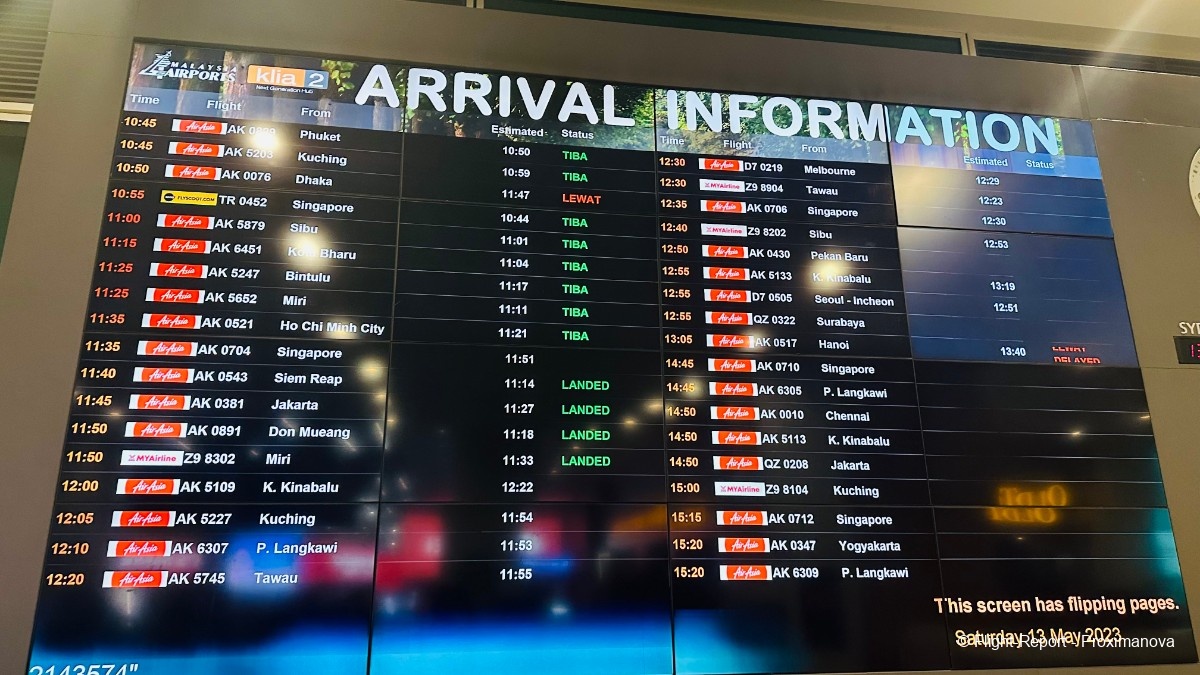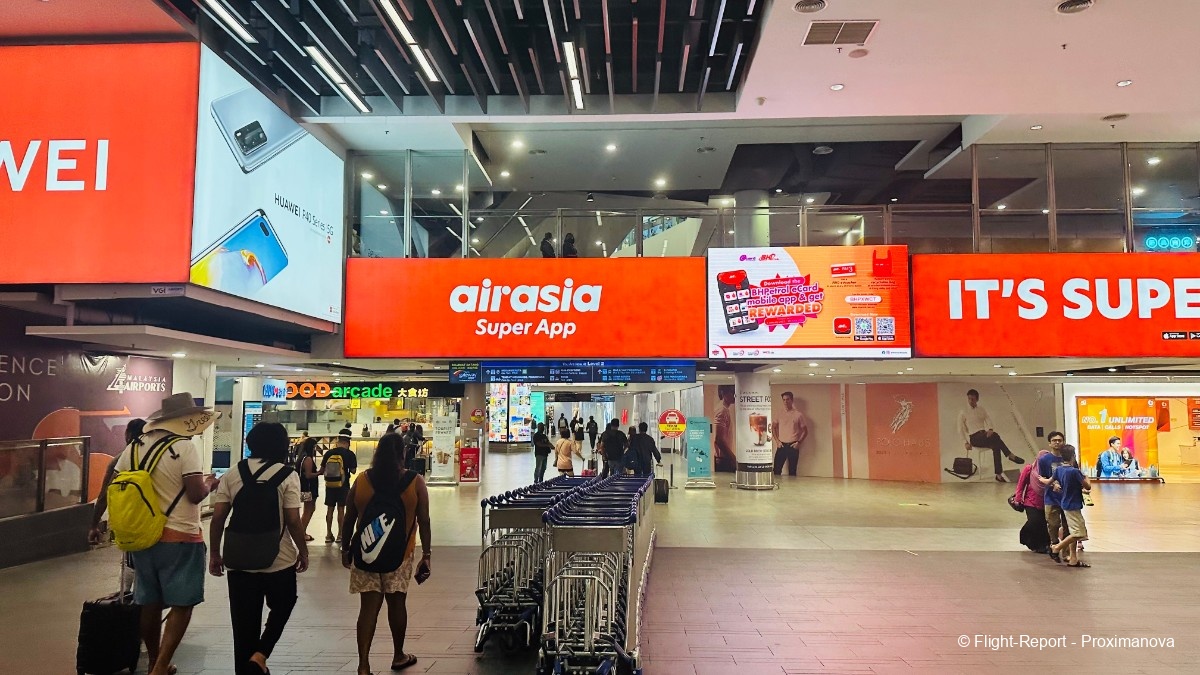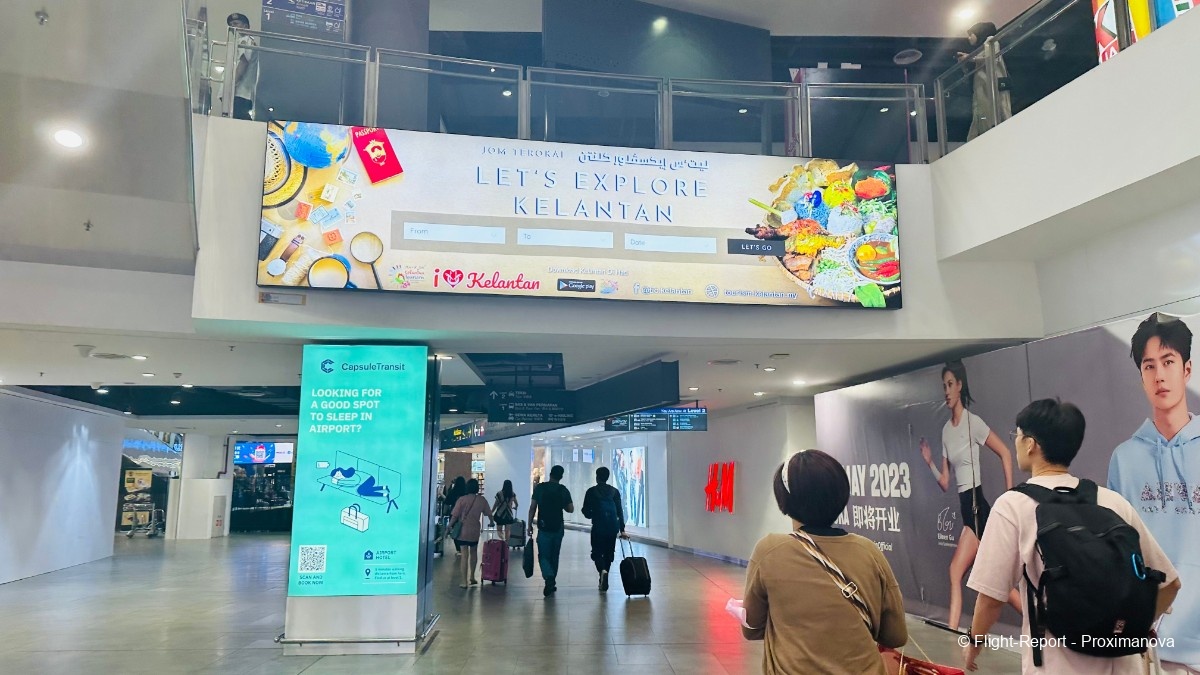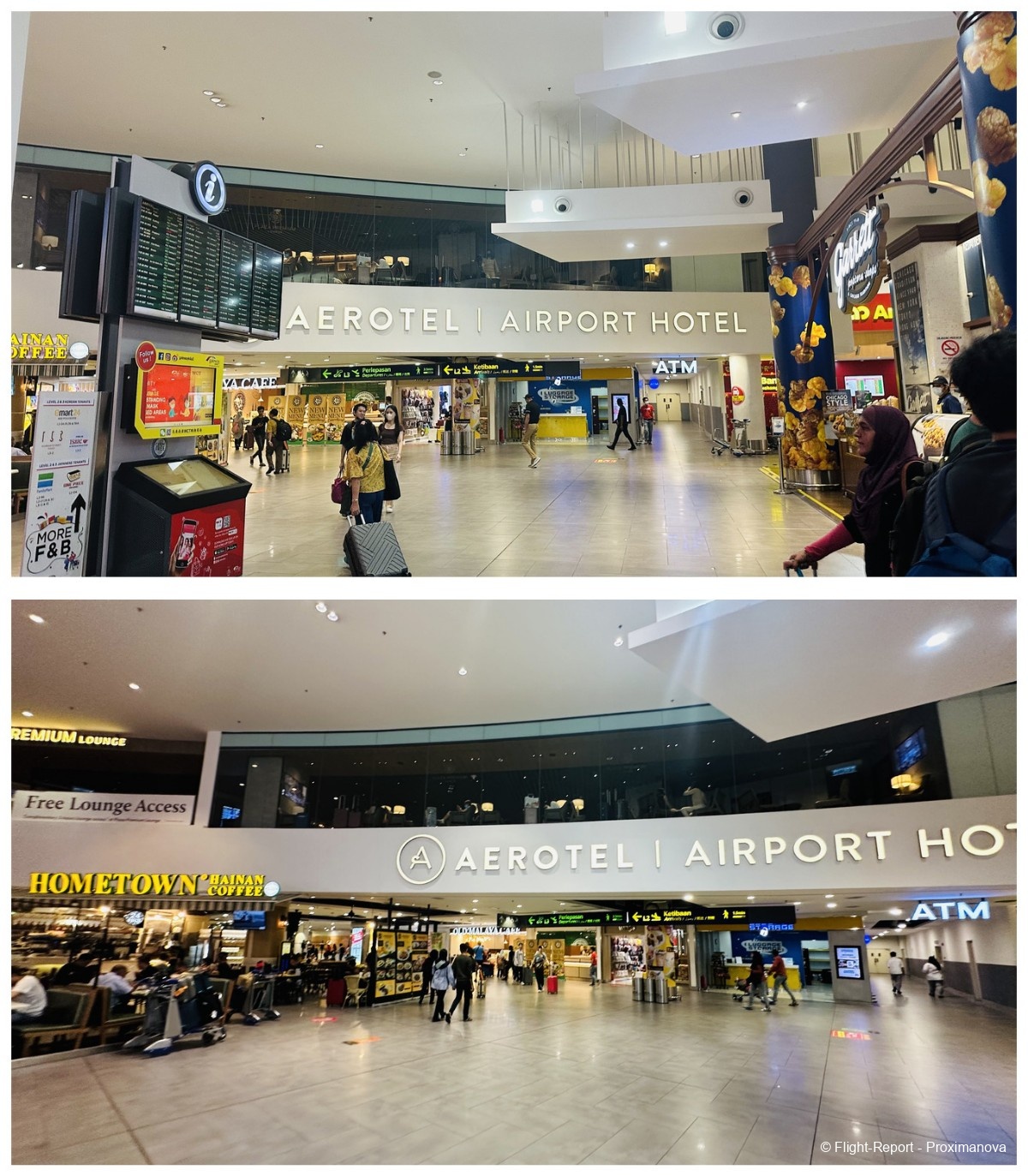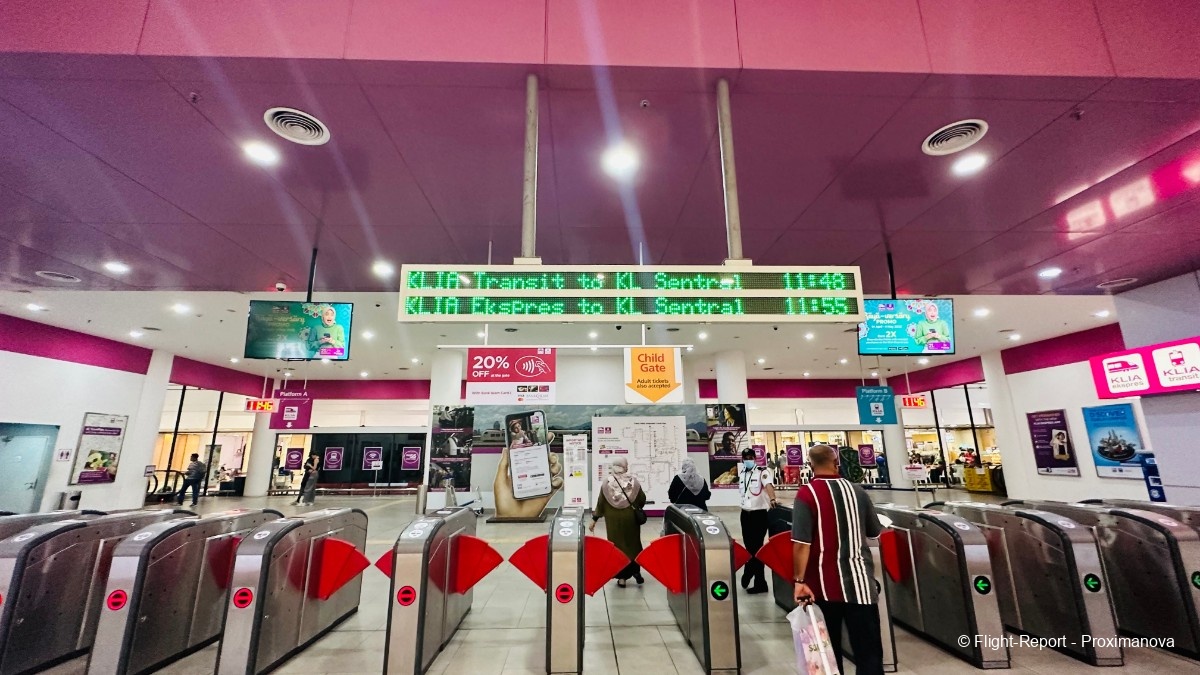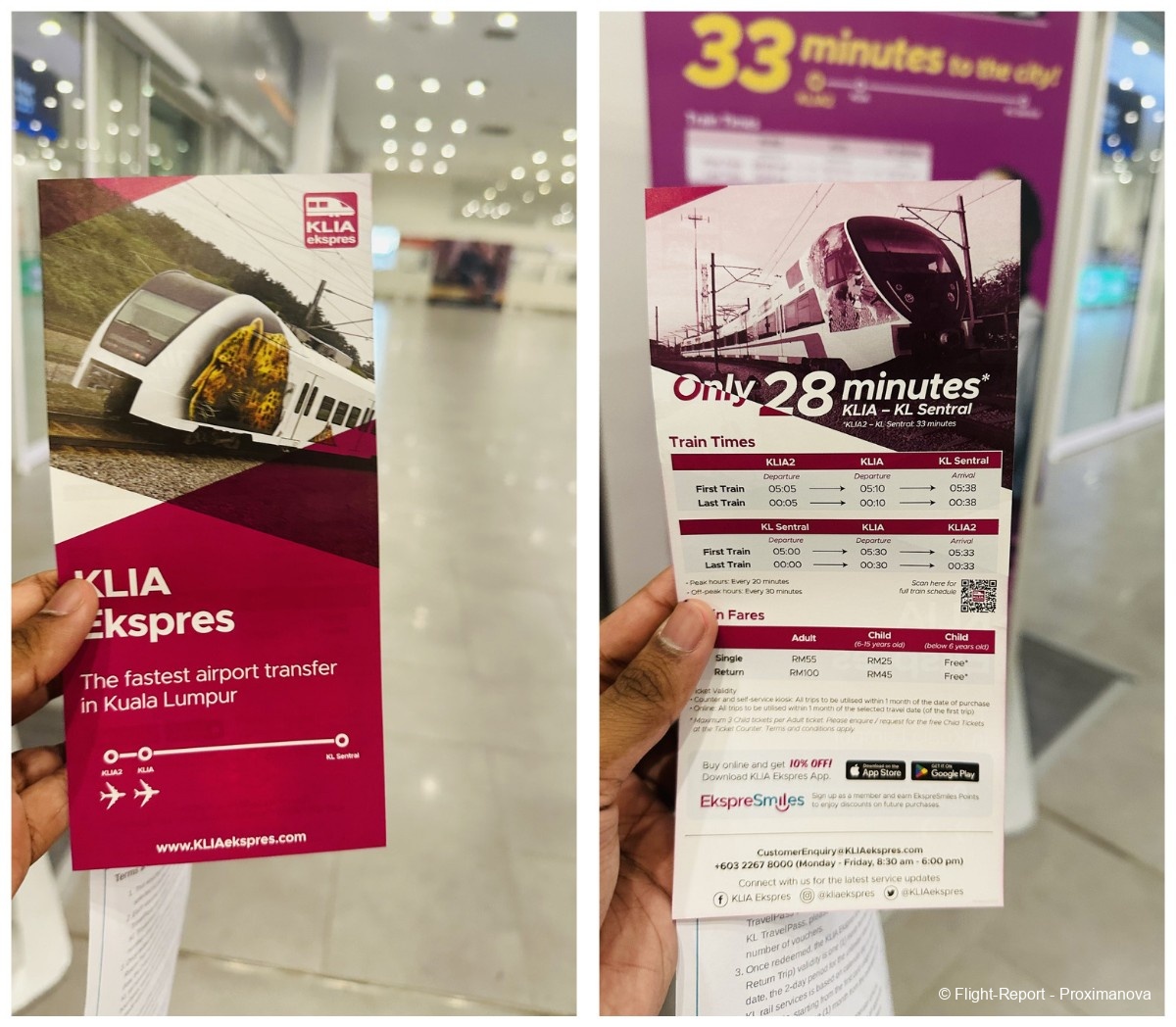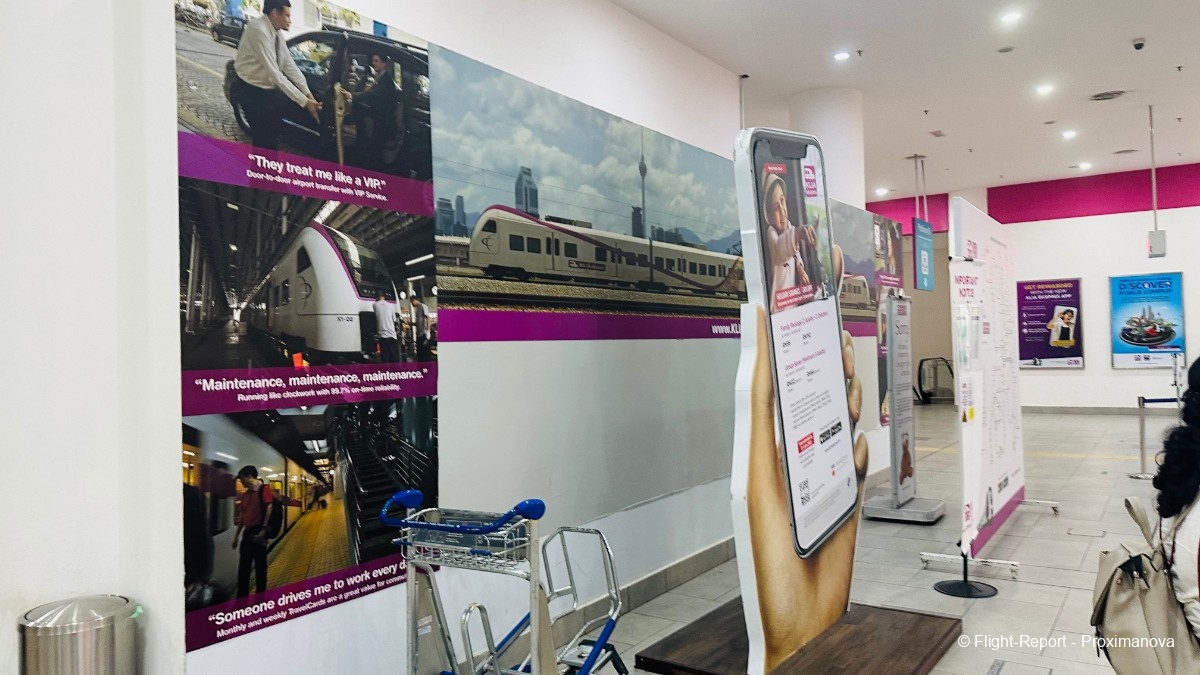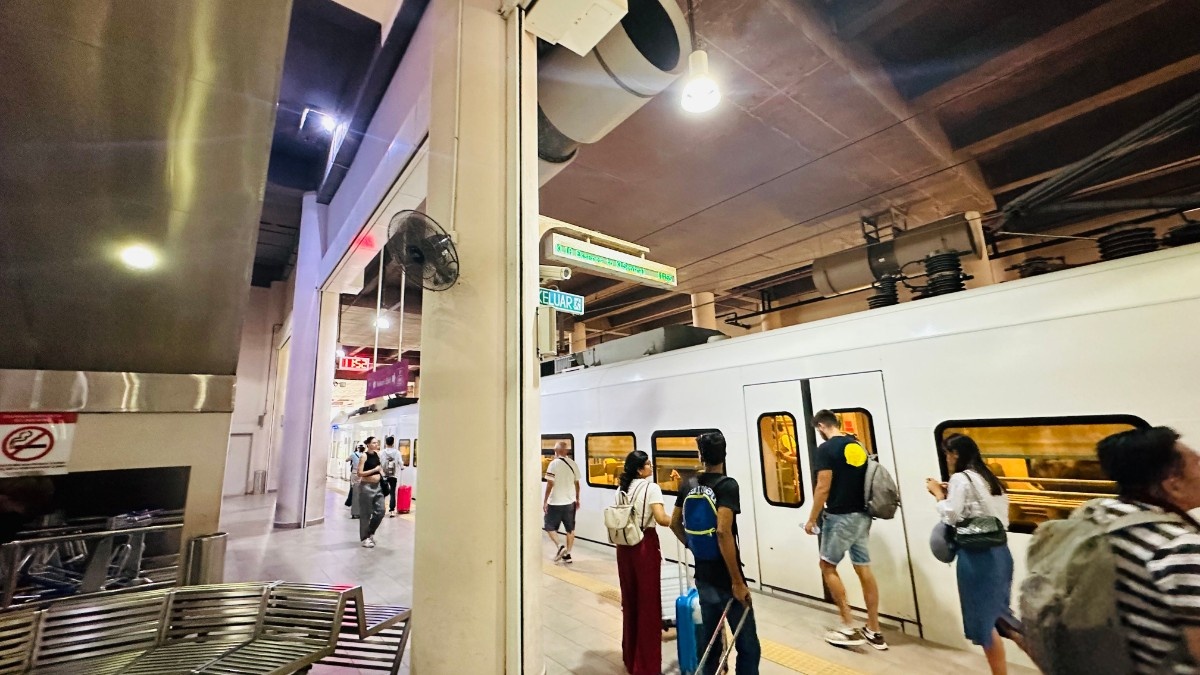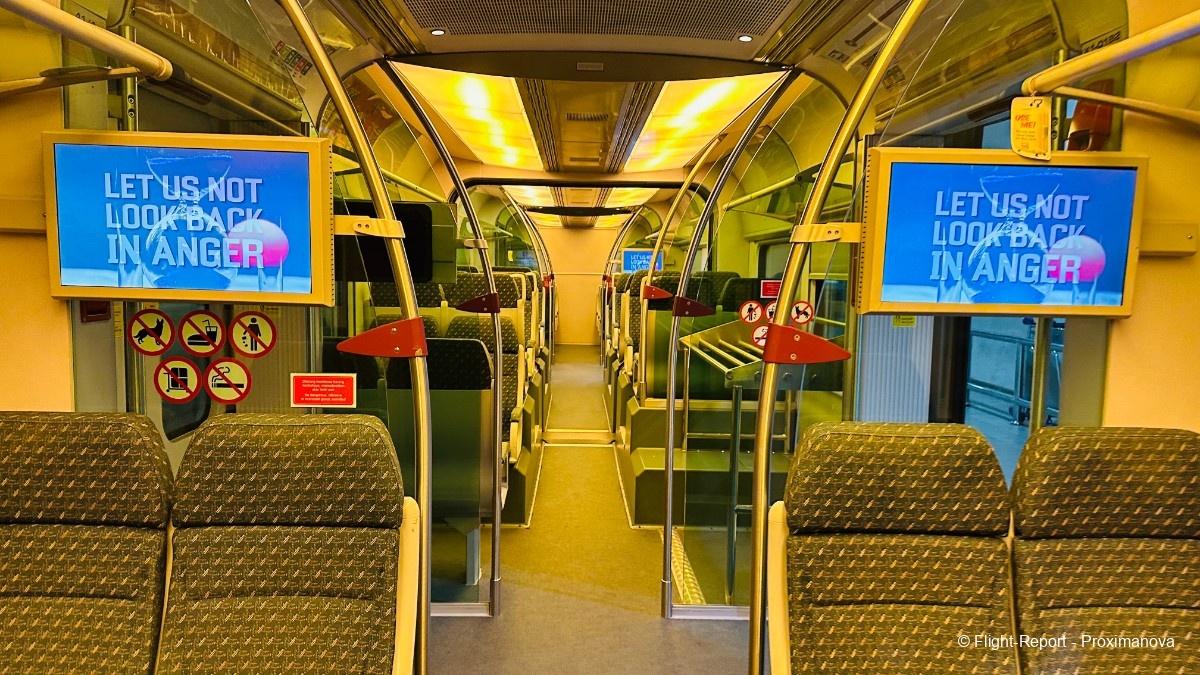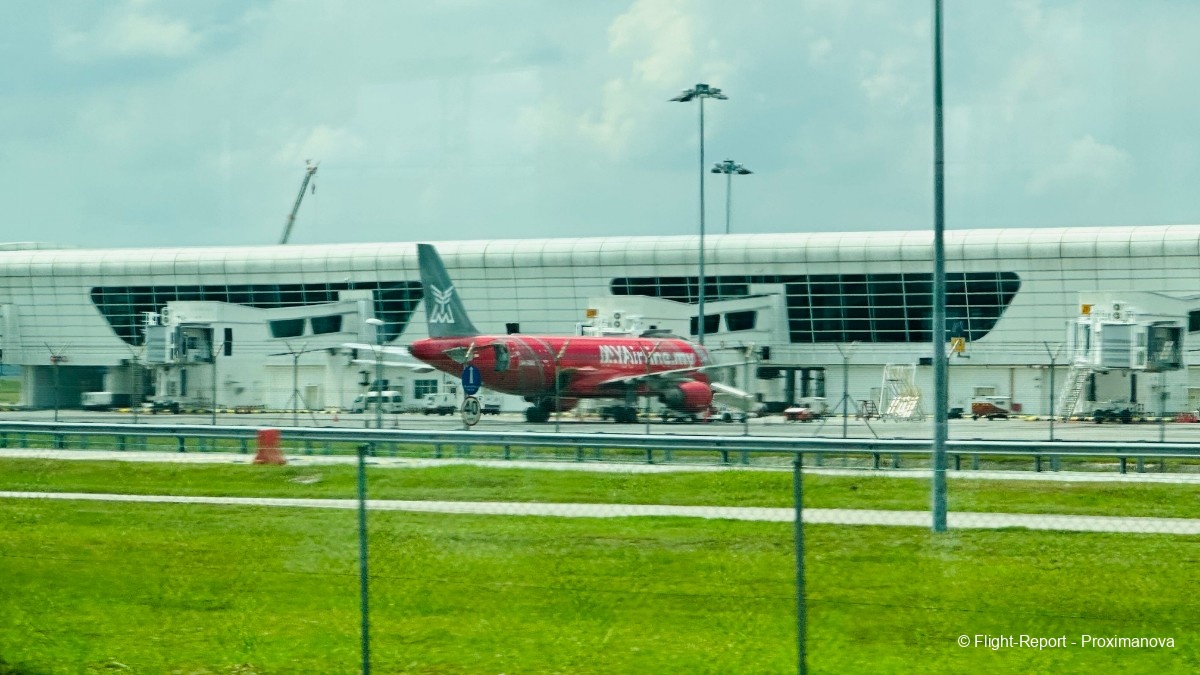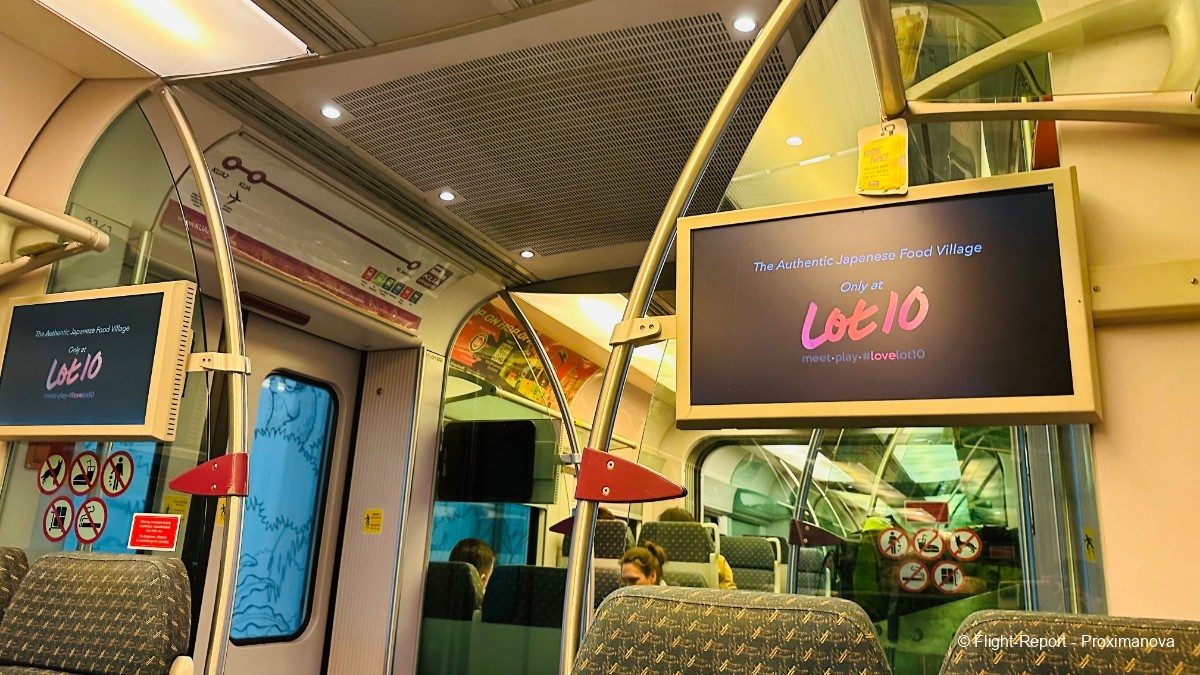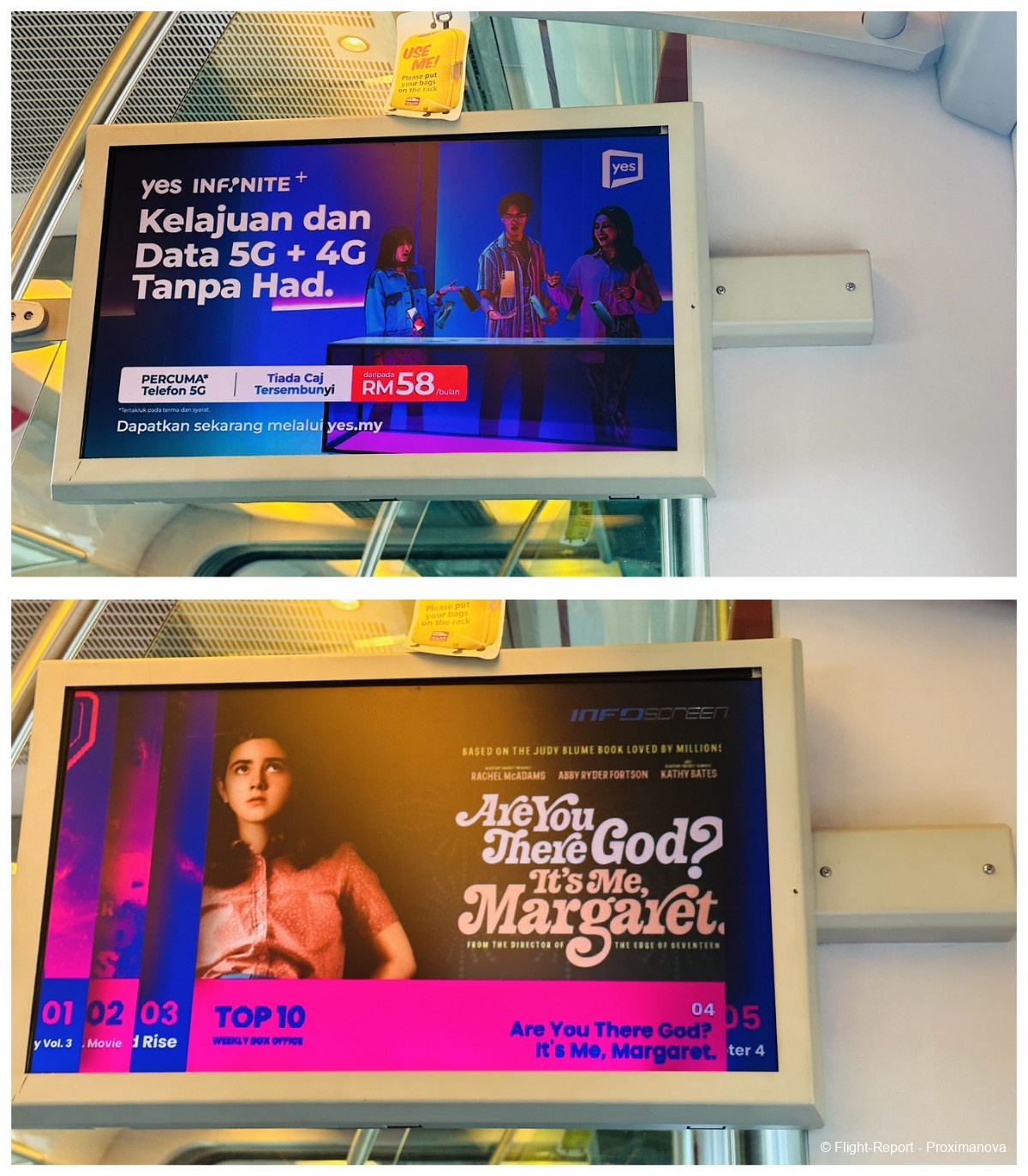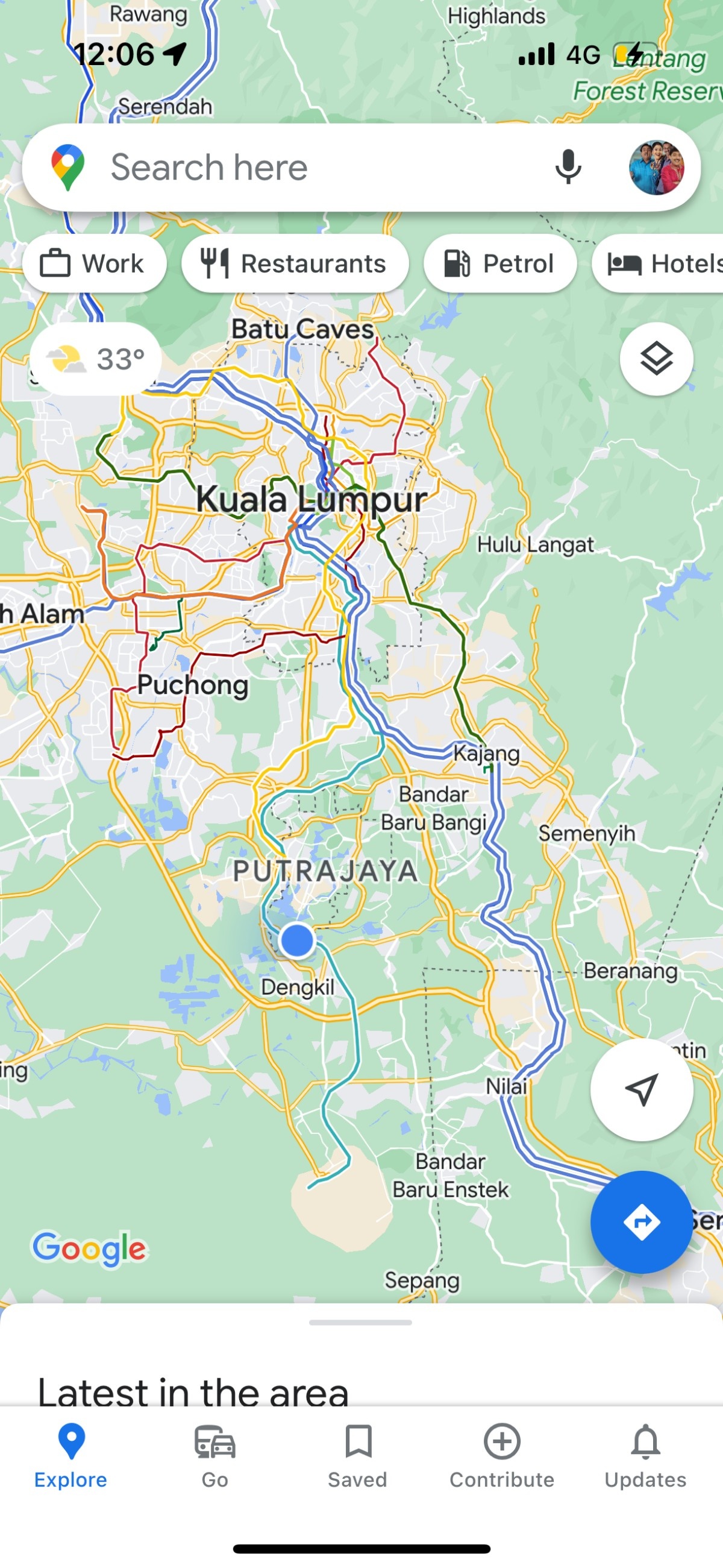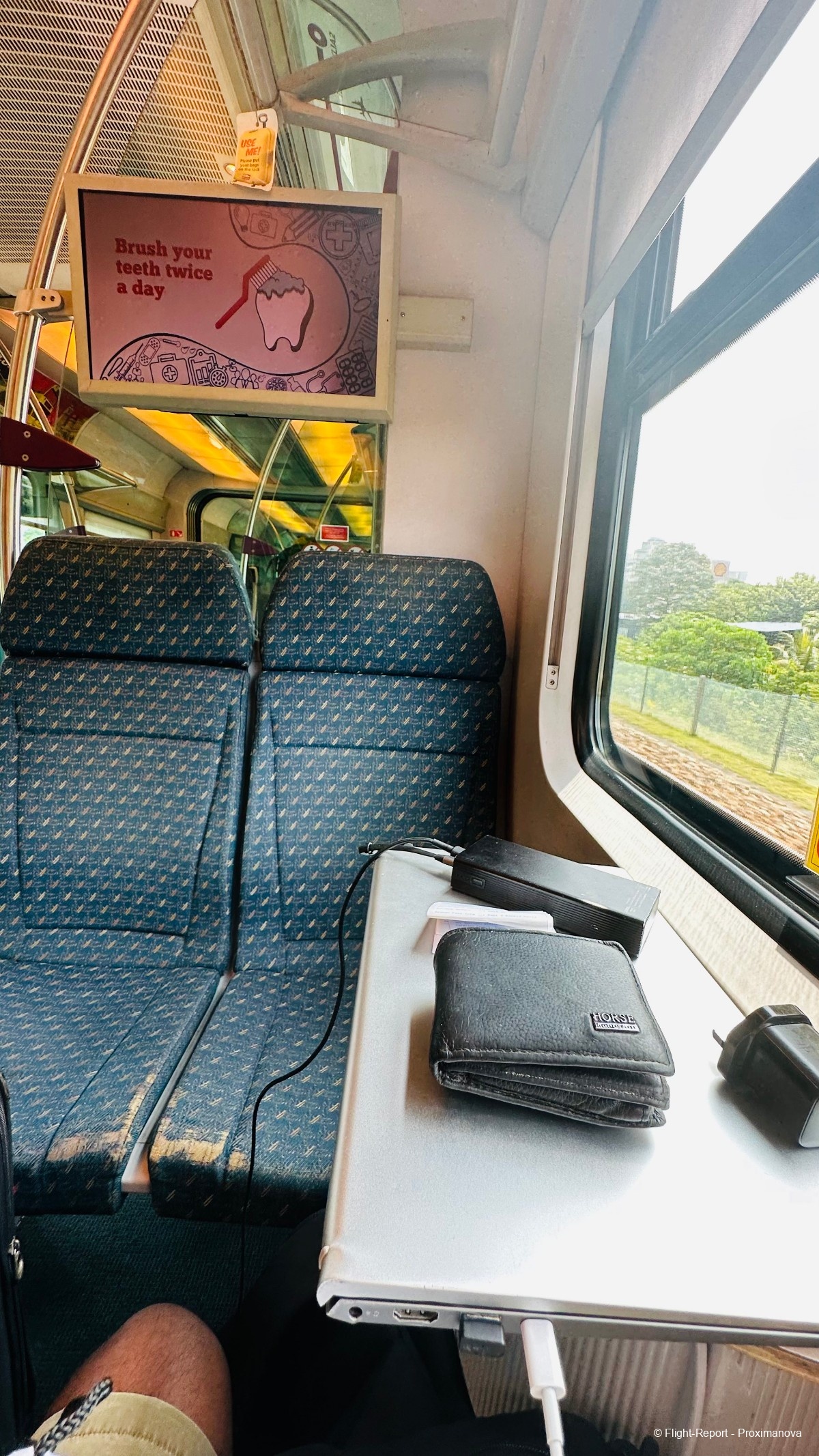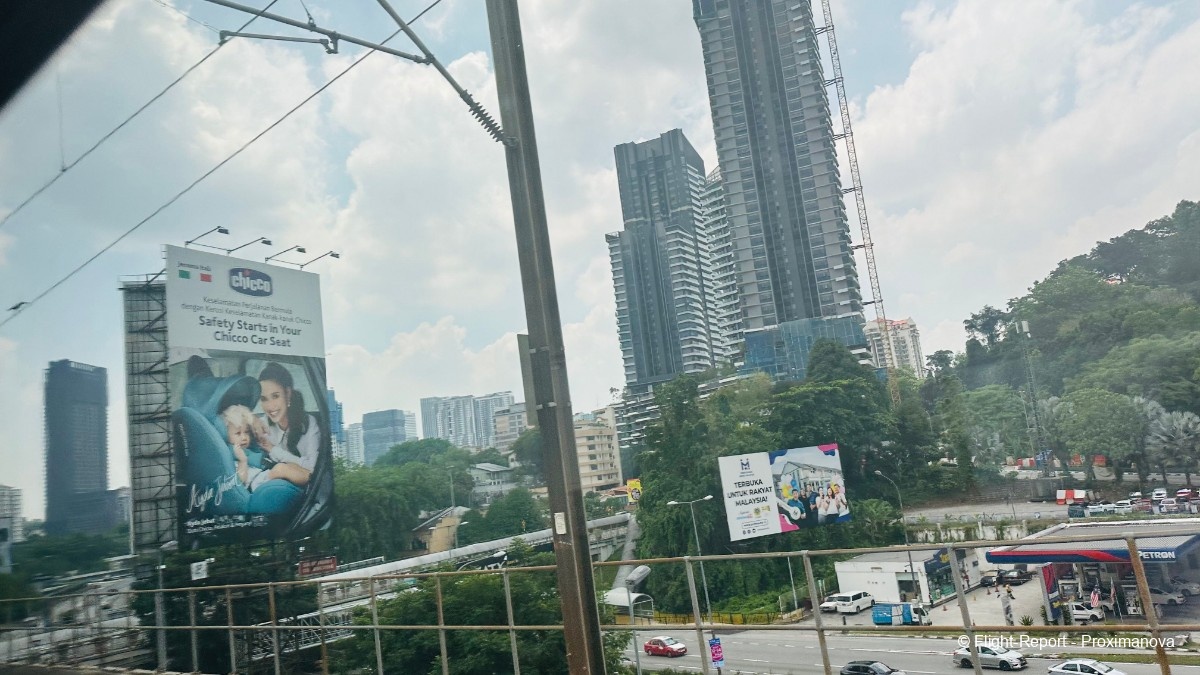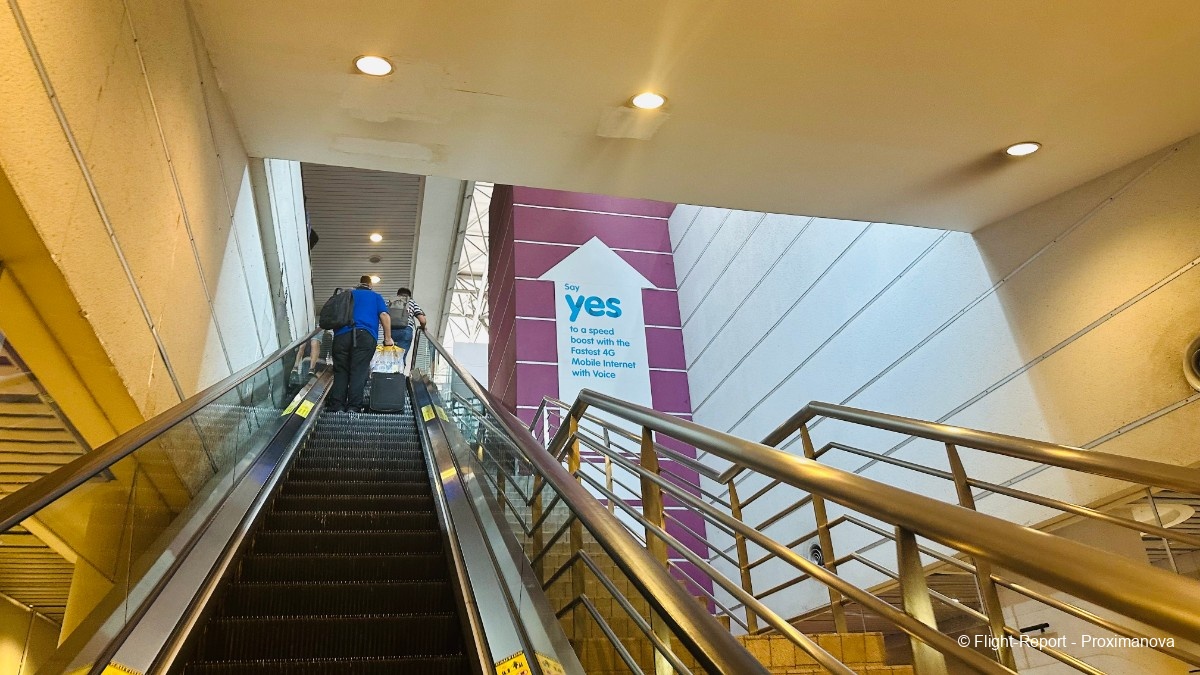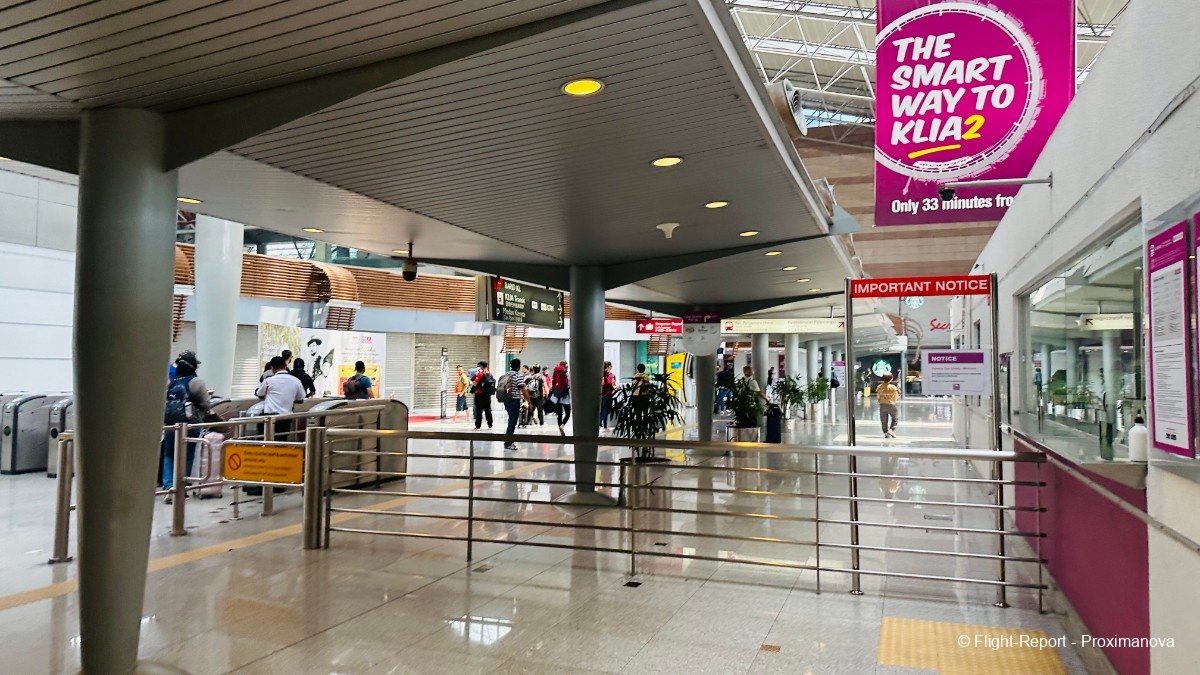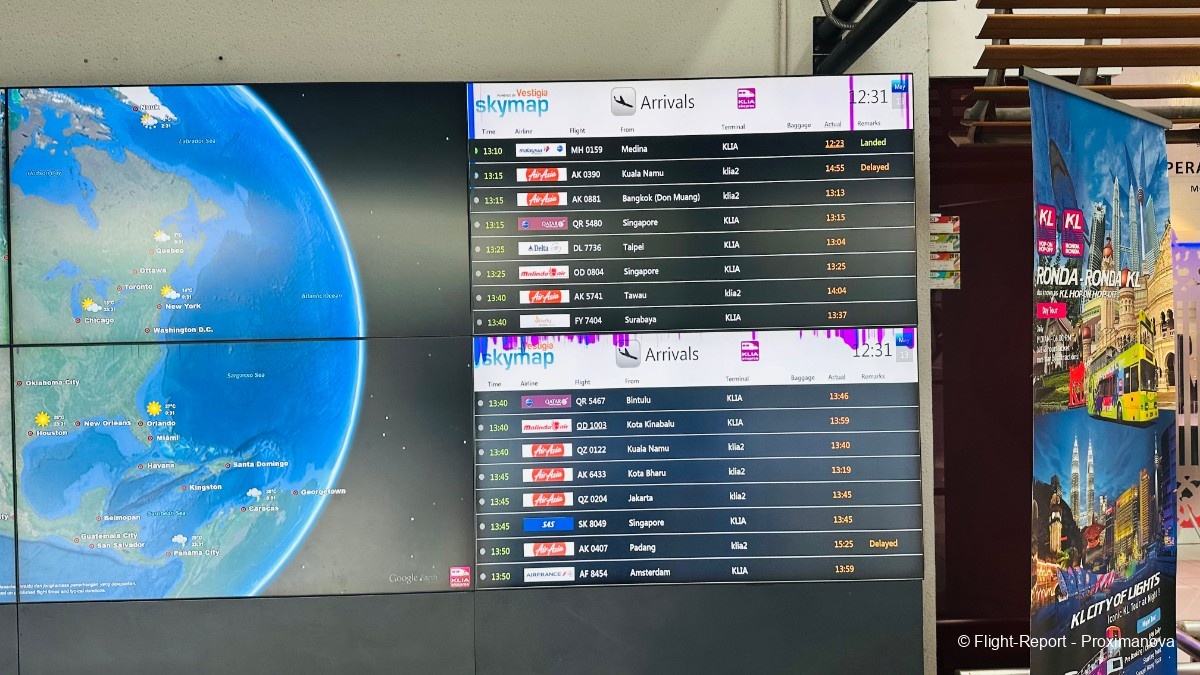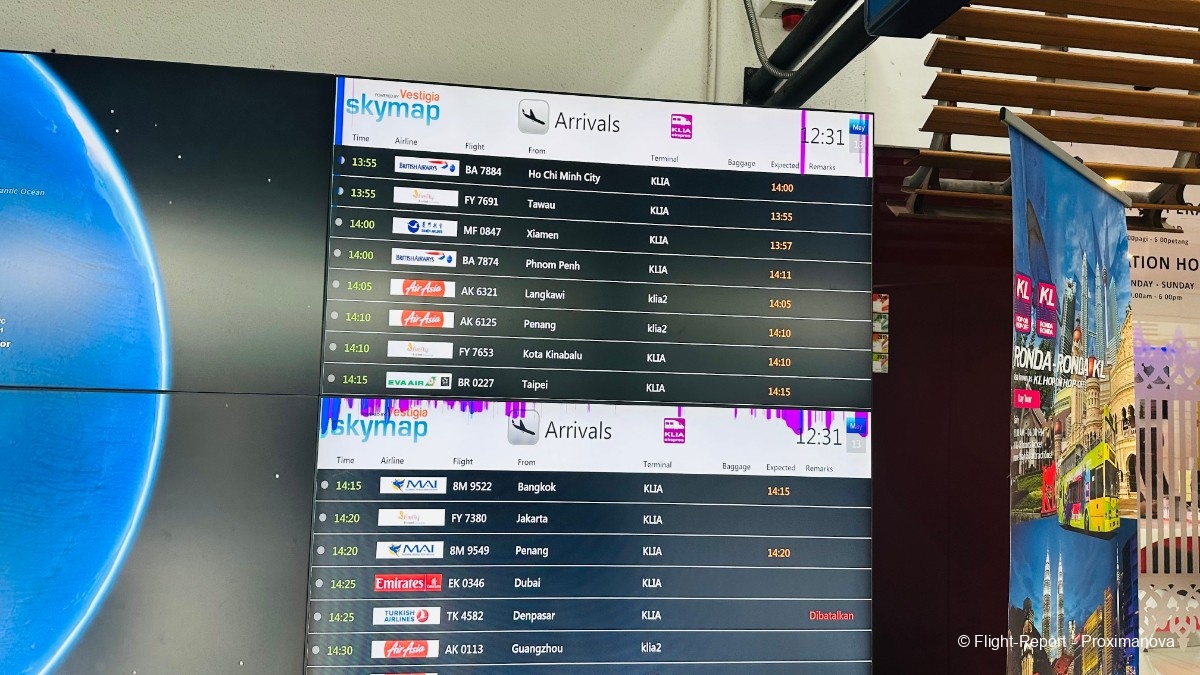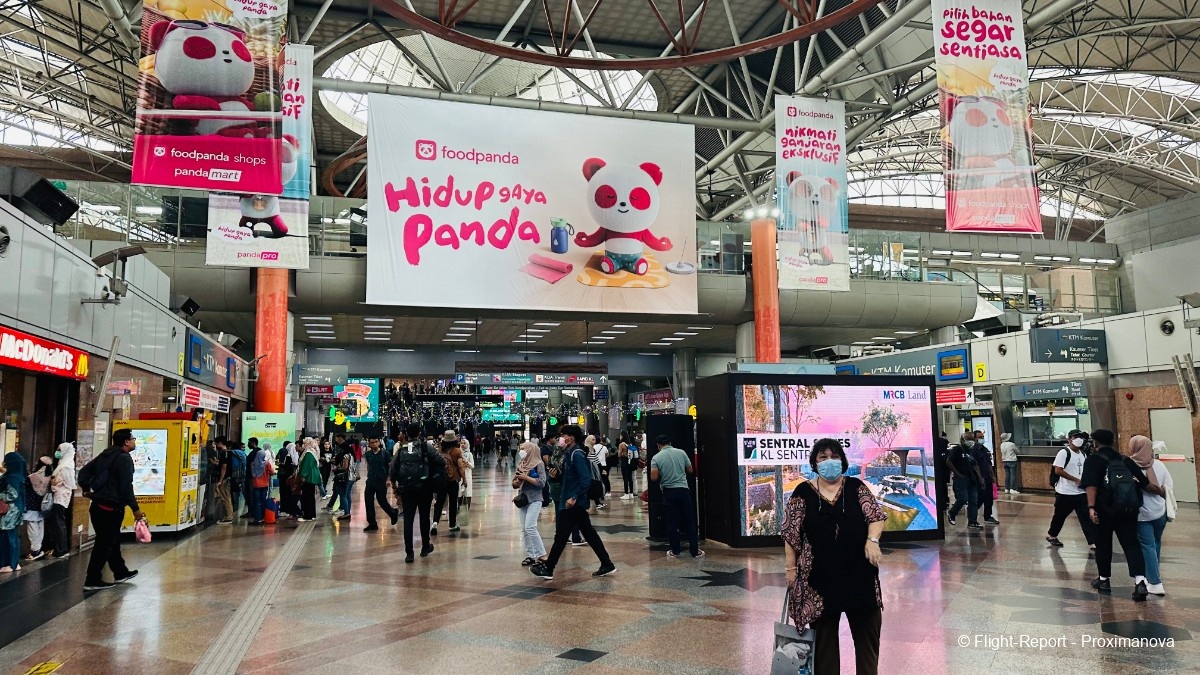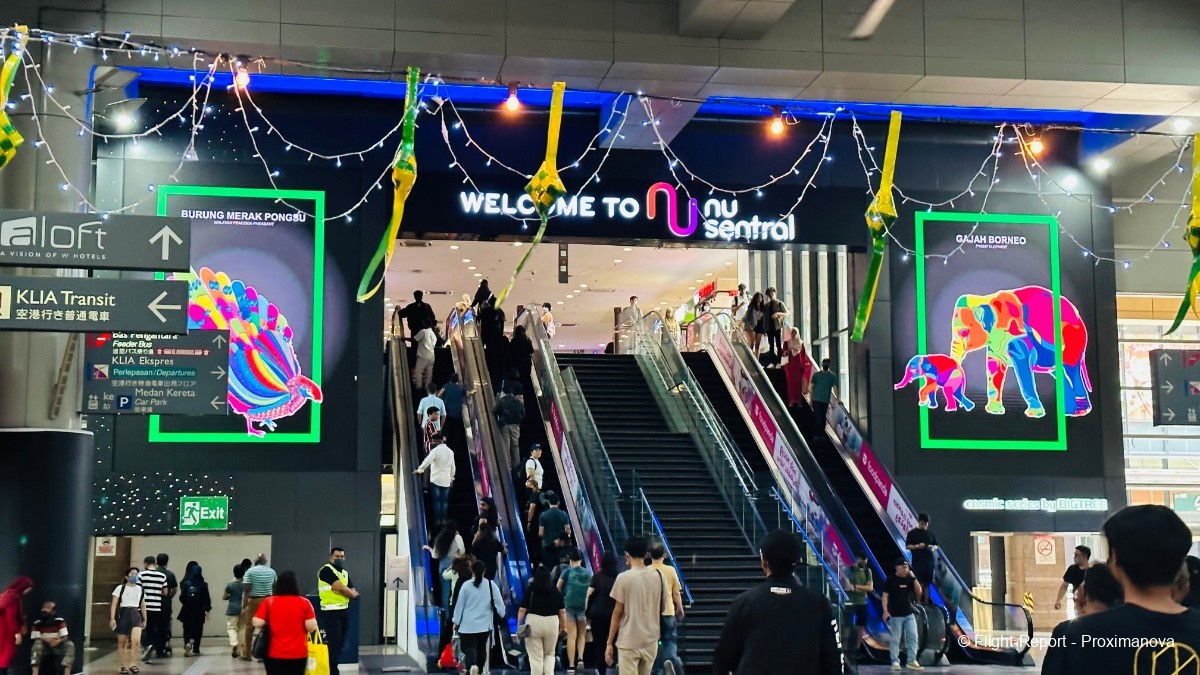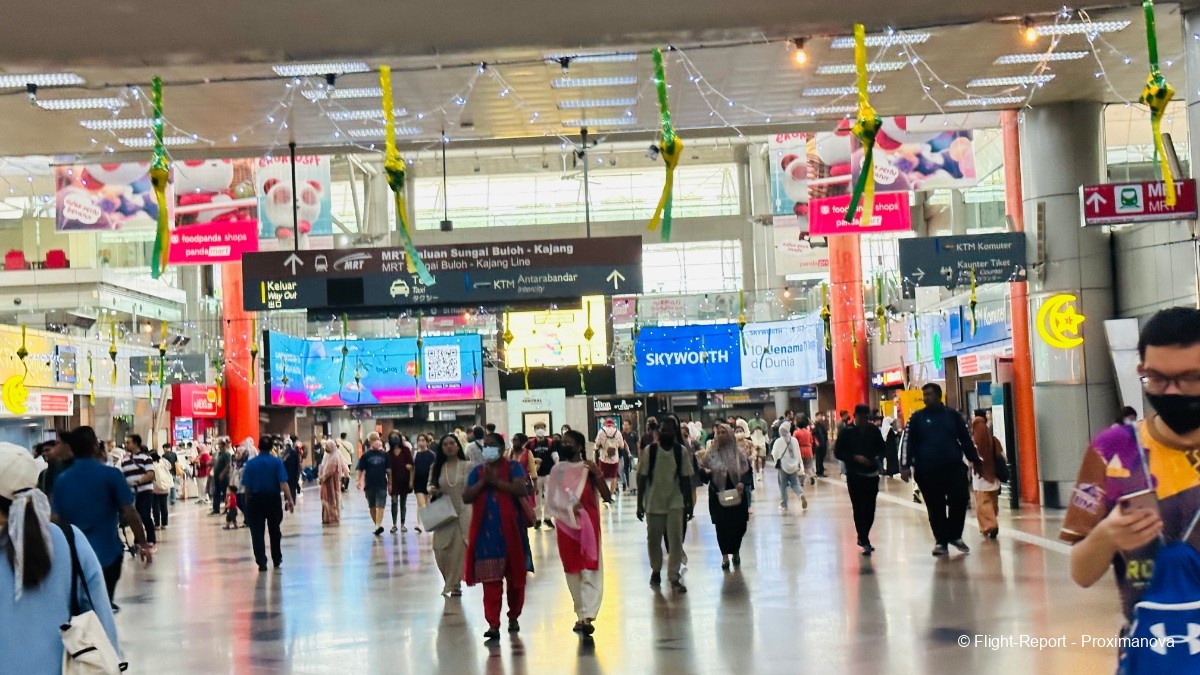Introduction
After returning from India on AirAsia via Kuala Lumpur in January 2023, I had popped back for another week-long visit to Chennai and Bengaluru in March, going via Mumbai on Vistara’s A321neo and Air India’s A319, and returning in early April on SriLankan Airlines via Colombo, with the same A330-200 on both sectors. I’d been planning to visit Indonesia for a long time, Bali to be precise, and it wasn’t long after returning in April that I put down a fair bit of cash to fly on KLM Royal Dutch Airlines’ 777-300ER direct to Denpasar, and return on Garuda Indonesia’s A330-300s via Jakarta. The whole trip — marking my first time on the SkyTeam alliance, on top of which the KLM 777 was even painted in SkyTeam livery — would take no more than forty-eight hours, squeezed into the Vesak (Buddhist New Year) weekend in early June.
But I’d not foreseen that Cove, the co-living company in Singapore from where I had rented a home, was organising a weekend trip to Kuala Lumpur in mid-May at short notice. Highlights included a visit to the top of the KL Tower, a rooftop bar beside the Petronas Twin Towers, visits to the Batu Caves and the Brookfields Indian district, and a night at the hipster WOLO hotel in the shopping district of Bukit Bintang. I made new friends and formed everlasting memories, with my companions including two Frenchmen (the French seem to be everywhere in Singapore nowadays, particularly students on internships), a German girl pursuing a postgraduate degree, an Indian software engineer like me, an Australian–Hungarian — easily the most garrulous of the bunch — and an American who was backpacking all over Southeast Asia. Talk about an ecletic crowd!
While Cove had recommended going by bus as it was cheap and had all sorts of frills and amenities, neither did I wish to get up at six in the morning and spend precious time queueing up at Woodlands Checkpoint before the Johor Bahru border, nor was I going to skimp on the chance to put on my #avgeek cap and try out a couple of new airlines. I figured it wouldn’t hurt to have the outbound on Scoot’s A321neo, having not flown (or, rather, avoided) them thus far because of their over-cheeky advertising and their lack of prompt customer service when push came to shove: not what you expect from a subsidiary of Singapore Airlines. I went with them partly because of a KrisFlyer promotion that offered a 20% discount on Scoot for those with 2,500 KrisFlyer miles, but this offer showed up as invalid during the booking process — which I should’ve taken as a warning sign of the disappointment lying ahead. I was fancying flying the new 9V-NC* series of A321neos, but I ended up getting the exact aircraft I did not want — 9V-NCI — as neither do I like registrations ending with A or I (out of superstition) nor was this aircraft expected to turn up so soon after its previous flight landed. Still, the flight itself was nothing remarkable and certainly not deplorable, but it made me miss AirAsia, which is in a different league.
The return, however, would be on a Star Alliance widebody, and not an A350 of Singapore Airlines: instead it would be the late-night ET639 service of Ethiopian Airlines that continued to Addis Ababa. Having never flown fifth-freedom before, this was too good an opportunity to miss, not to mention 14 May was the birthday of the Star Alliance — and, as it turned out, also the birthday of ET-AOV, the 787-8 that would operate my flight. I couldn’t wait to fly ET again, and so I did on 30 July — this time on a 787-9 (ET-AUO) — on ET638 for a quick four-hour trip, with the return on a cramped Jetstar A320. Now Cove has organised another overseas weekend trip, to Batam in early September, marking my second visit to ‘Wonderful Indonesia’ — but this time around there won’t be any flights, as you can only take the ferry from Singapore: not that I’m complaining!
Flight routing
- 1TR452 | Singapore to Kuala Lumpur | 13 May 2023 | A321neo | 9V-NCI
- 2ET639 | Kuala Lumpur to Singapore | 14 May 2023 | 787-8 | ET-AOV
Appetiser: A Korean tourism fair, with goodies from Asiana and T’way Air
This is a case study in contrasts: how a full-service airline (Asiana) can successfully use child-friendly mascots in its identity with no-one batting an eyelid — only by virtue of being from Northeast Asia — and a low-cost airline (Scoot) fails miserably at trying to be a tongue-in-cheek cool kid with all the Gen-Z lingo in the world, covering up its lack of proper customer service where it’s due.
Friday, 12 May, evening. Before getting into the Scoot A321neo review, however, I would like to talk about another Star Alliance airline, which I have so far not flown: Asiana Airlines of South Korea. The reason being that the day before my trip, I had a rather unexpected encounter with their stall at a Korean tourism fair, which has stoked my interest to visit Seoul in 2024. I hope to fly their A350 (as you’ll see below) to Seoul/Incheon Airport, which is built on an island as agonisingly far west of the South Korean capital as KLIA is south of Kuala Lumpur, before Korean Air and its infinitely more atrocious livery will put an end to the pretty Asiana brand, much like Air India — whose new livery I quite like, other than the huge billboard titles — will kill Vistara.
On 12 May, the day before my flight, I was at Our Tampines Hub — a massive community-run stadium-cum-mall-cum-library-cum-activity centre in the east of Singapore — after finishing work. I was surprised to see a Korean tourism fair set up in the atrium, with two airlines from the country, Asiana Airlines (OZ) and low-cost carrier T’way Air (TW), among those who’d put up stalls to promote Korean vacations. The next few pictures will be from this exhibition, including takeaway goodies I received from both Asiana and T’way.
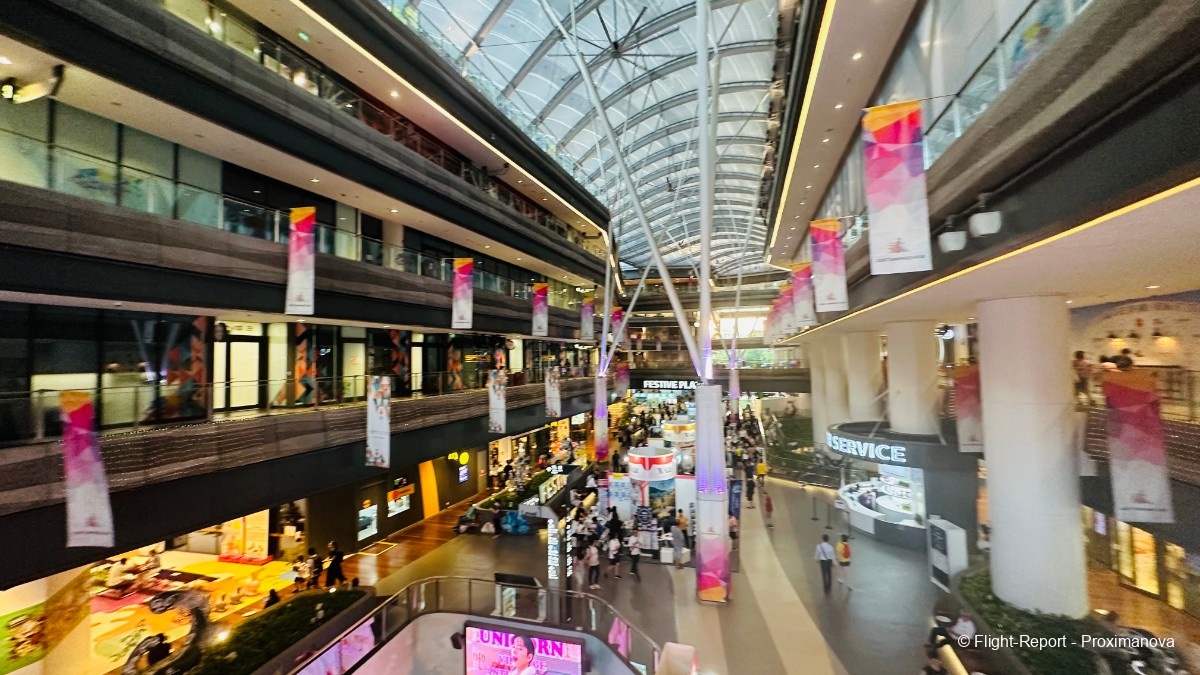
To keep things Korean, I decided to have dinner at Nene Chicken, a Korean fast-food joint that has several outlets in Singapore.
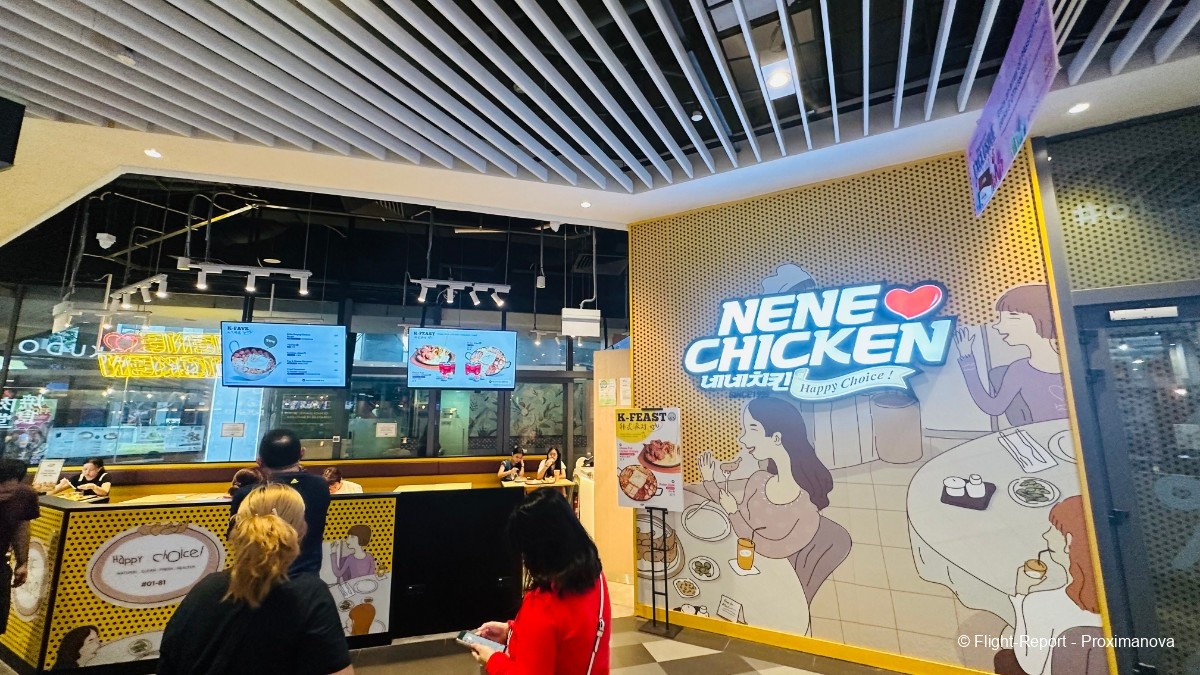
Which K-pop song does not have skimpily clad girls, bubble-gummy music and extravagant costumes and sets?
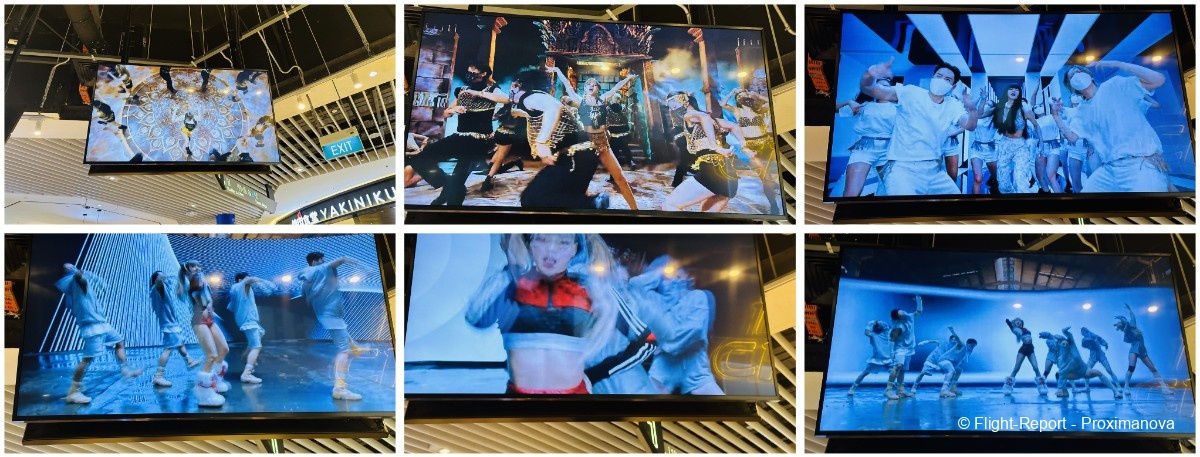
As is common in Northeast Asia — and you need look no further than fellow Star Alliance member EVA Air’s collaboration with Hello Kitty — mascots were placed here and there as throngs of curious people lined up at the counters.
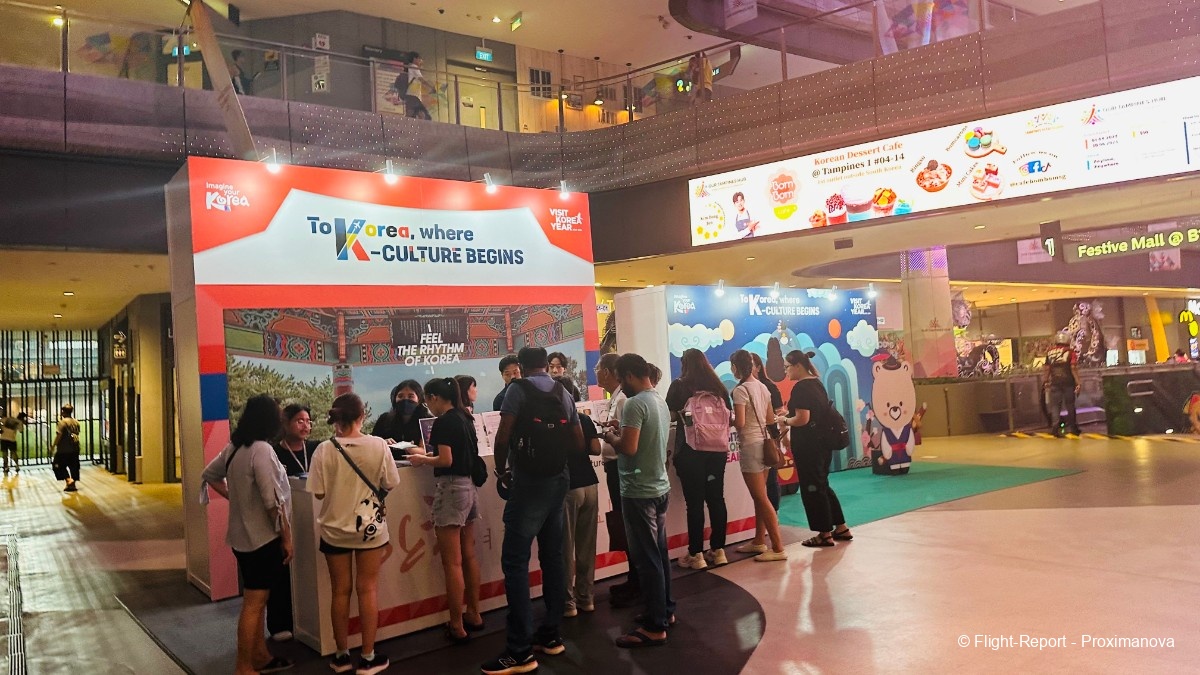
Here was the Asiana kiosk, with posters depicting the seasons and culture of its homeland, with its agents asking for passersby to scan the QR codes and follow the airline on Instagram in order to get a free gift — though I got mine without having to do so!
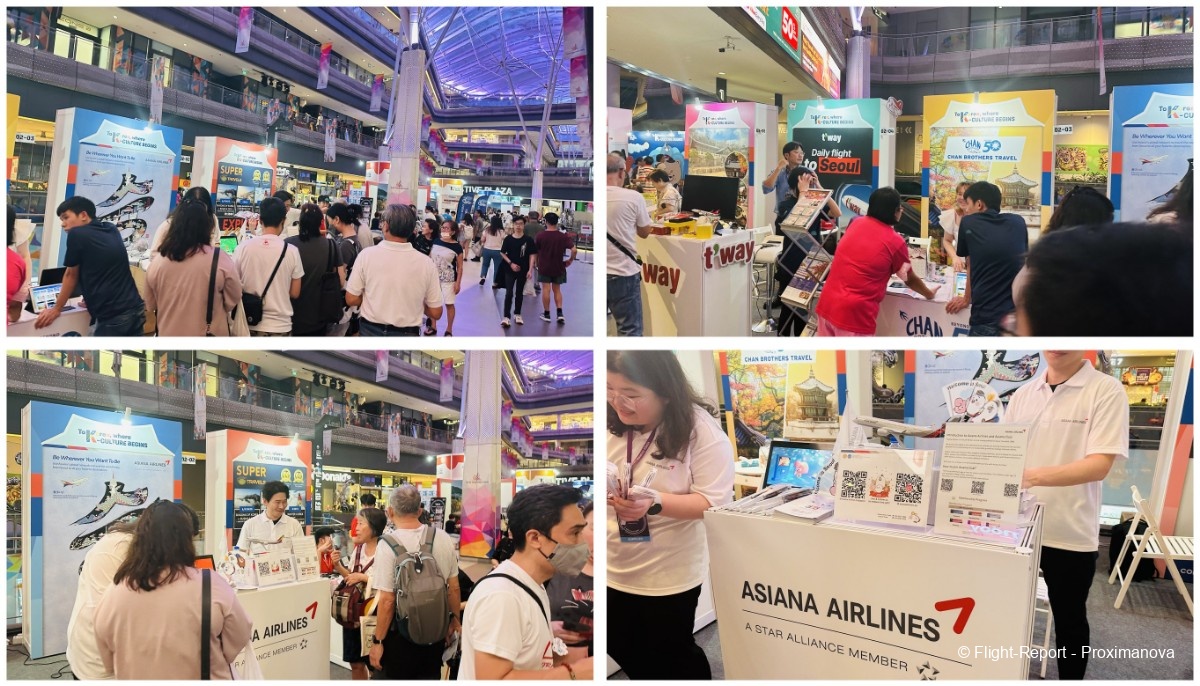
I had a nice little chat with the salesguy on how OZ was putting its A350s and A380s to use as travel opened up, how its merger with Korean Air would shake up global aviation, and so on. I could not help but take two brochures on the OZ A350 and gape in awe at the childlike wonder of it all. I do wish, however, that OZ promoted its Skytrax 5-star rating a little more, seeing as 7 out of 10 such airlines come from Northeast Asia, with EVA, ANA and JAL in particular having made a stellar reputation for themselves in the past decade that only CX or SQ had earlier.
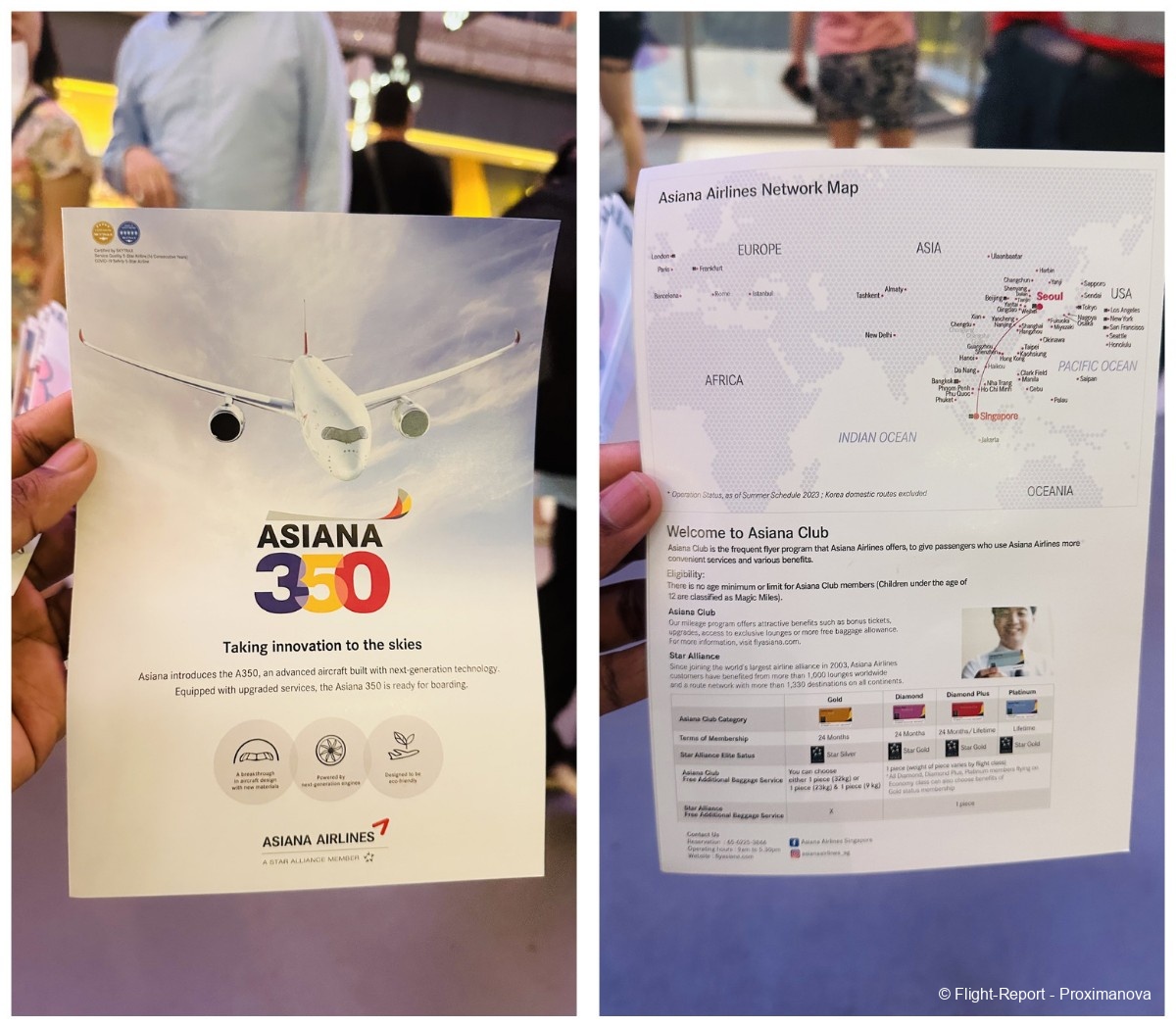
Trust Northeast Asian airlines to come up with weird, wacky names like ‘Smartium’ (Asiana’s business and premium economy), ‘BEDD’ (JAL’s first- and business-class fine dining concept) and ‘COSMILE’ (Starlux’s frequent-flyer programme). It ultimately boils down to the poor command of English in these countries — except perhaps Hong Kong, as Cathay Pacific is far too superb in contrast — compared to those further south that are well-versed in the language (like the Philippines and Singapore) or Middle Eastern countries, let alone Western ones.
English has a mostly ornamental or decorative effect in Korea and Japan, and so airlines from these countries tend to have much more absurd product names than, say, Lufthansa, which is calling its still-unreleased new premium cabins ‘Allegris’: very elegant and Latin-sounding indeed.
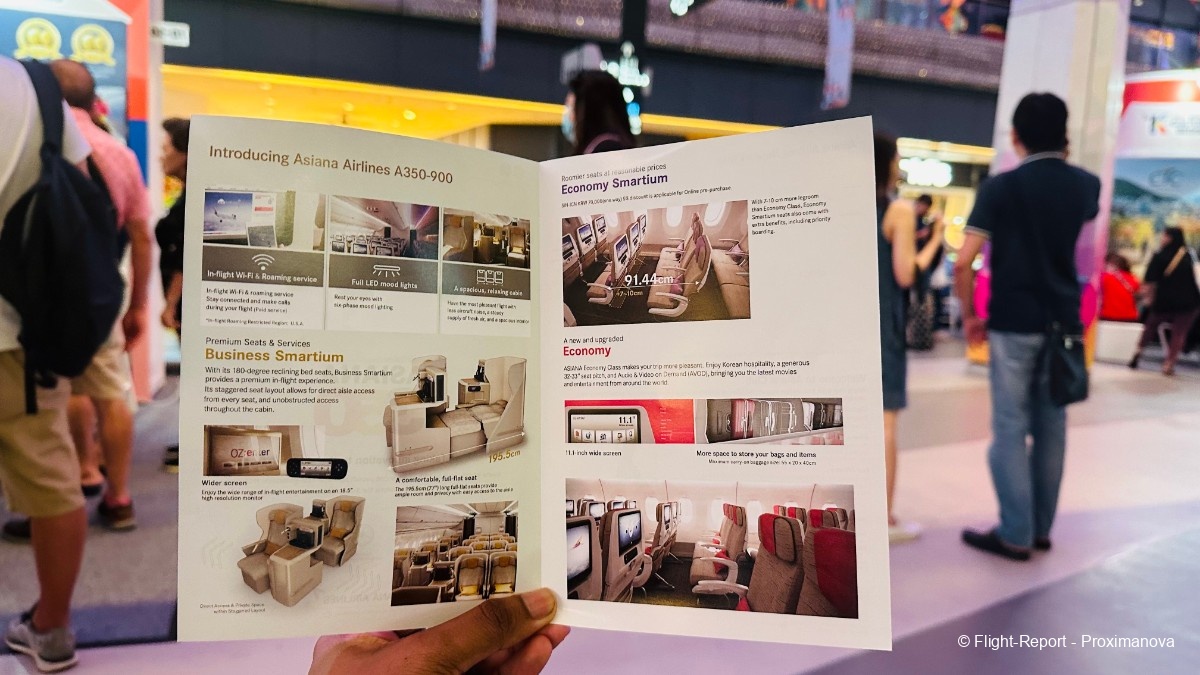
My gift was an adorable hand-fan with Asiana’s kid-friendly mascots painted on them, and ‘Welcome to Seoul’ on top. (Another example of the poor English in Northeast Asia, or ‘Engrish’ as it’s called in Japan, is the slogan — Better flight, Better tomorrow — in the top right above the airline’s logo. No Western airline will ever write something like that!)
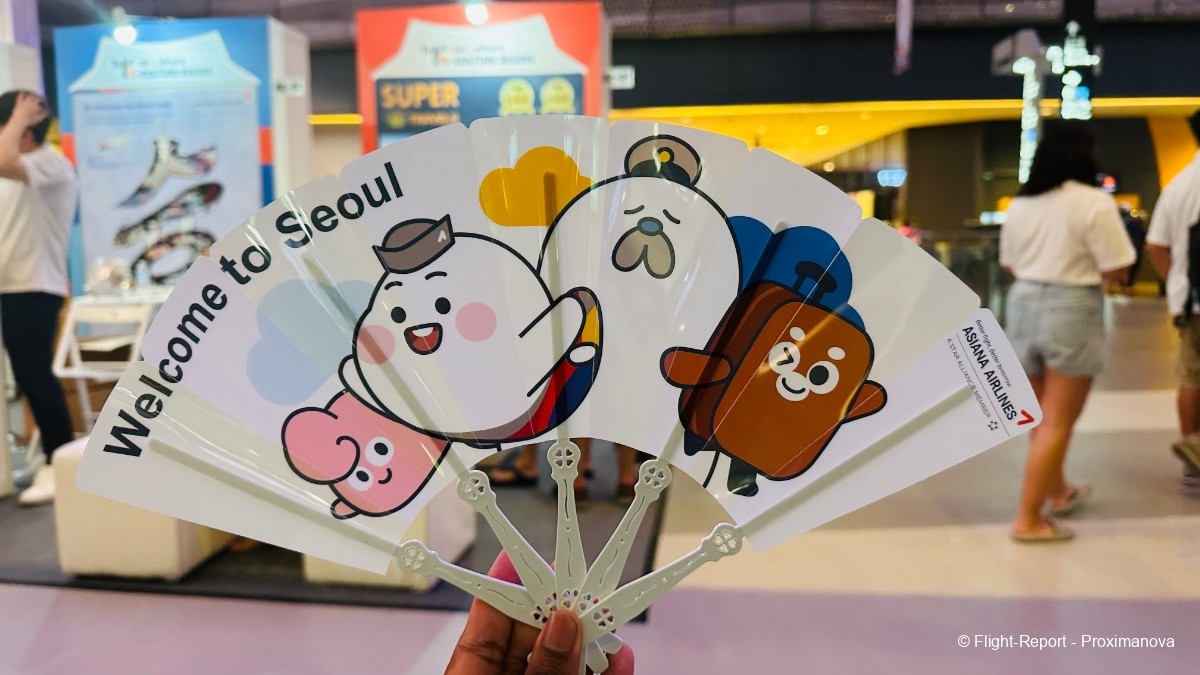
These little girls were presumably the target audience of these mascots, which are equally well received by all age groups in Northeast Asia — particularly Japan — unlike the West.
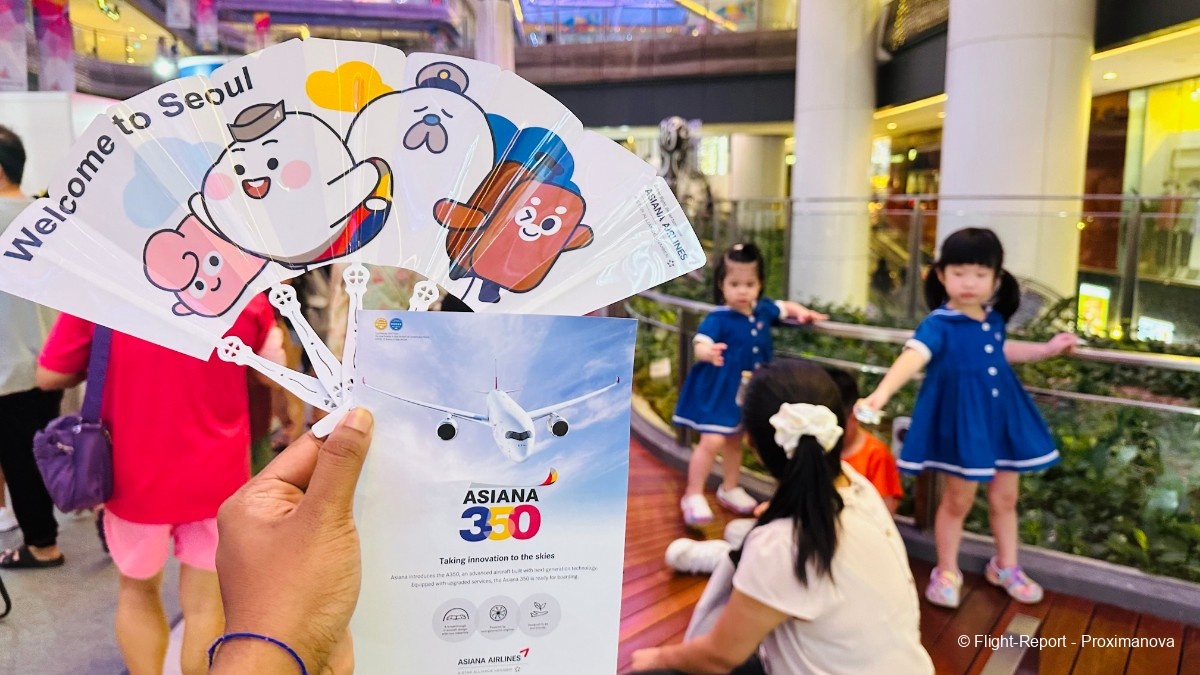
Not to be outdone, TW — now a proud operator of the A330-300, much like VietJetAir down south, signifying a break from its all-737 fleet — had its own take on the goodies and gifts, many of which were in partnership with Pokémon.
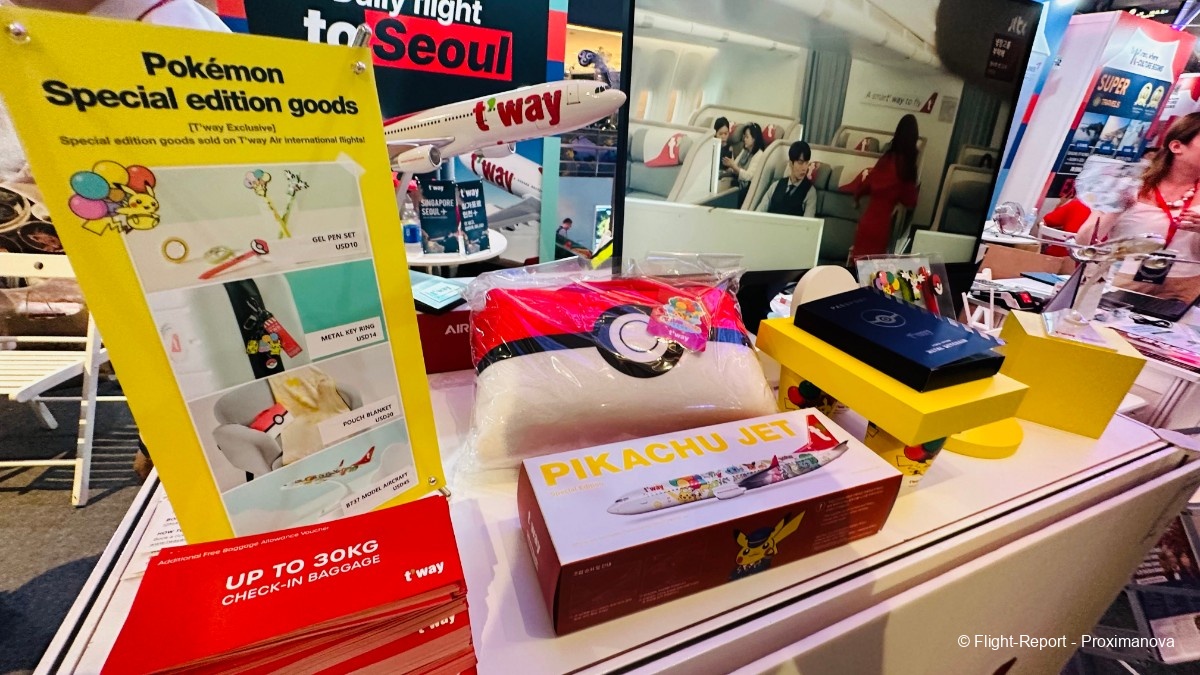
Here, too, I spoke a bit with the T’way guy about how its A330s were a new point of pride for this LCC, which has to battle with other independent LCCs like Jeju Air and the greatly-shrunk Eastar Jet — all-737 airlines both — as well as those which are owned by the two big full-service carriers: Jin Air (owned by KE) and Air Busan and Air Seoul (by OZ).
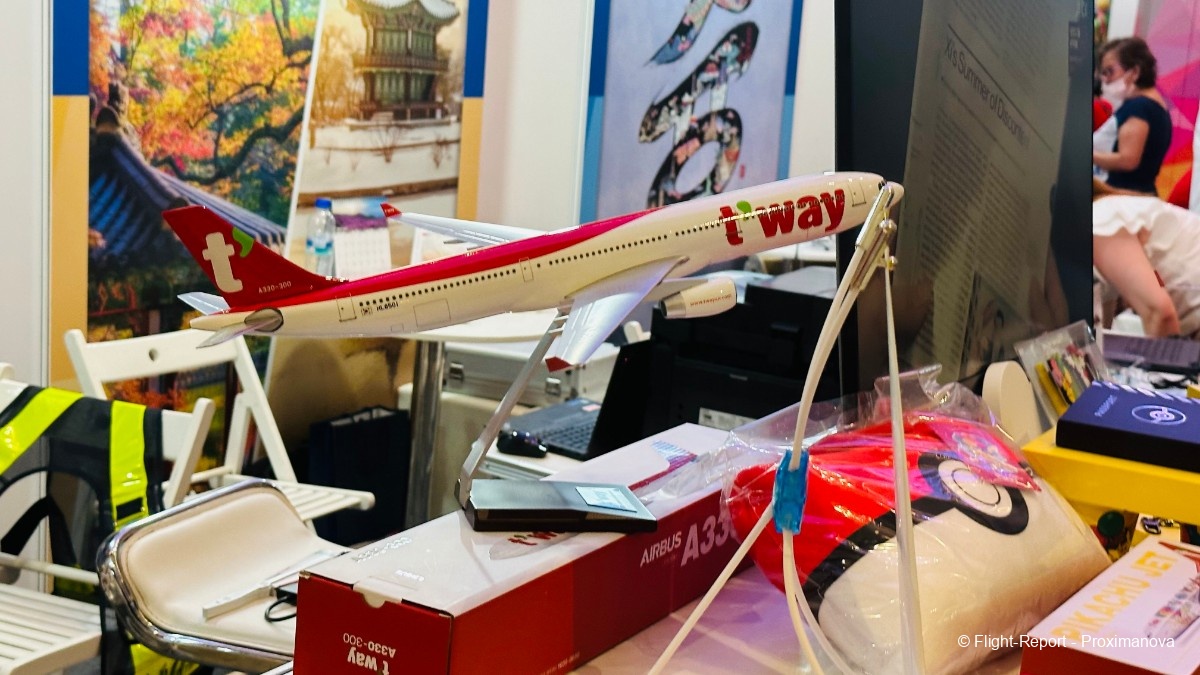
New airlines keep popping up in the country, like Air Premia, an all-787-9 hybrid airline which serves Bangkok, Los Angeles and New York City among others. This is in great contrast to Japan, where ANA and JAL have a complete duopoly, as almost every single airline — from Peach to Jetstar to ZIPAIR — is either owned by these two or, in the case of small regional airlines, have a tie-up with them. TW has its work cut out for it to succeed and build its brand recognition beyond its homeland, like VietJetAir or Cebu Pacific have done.
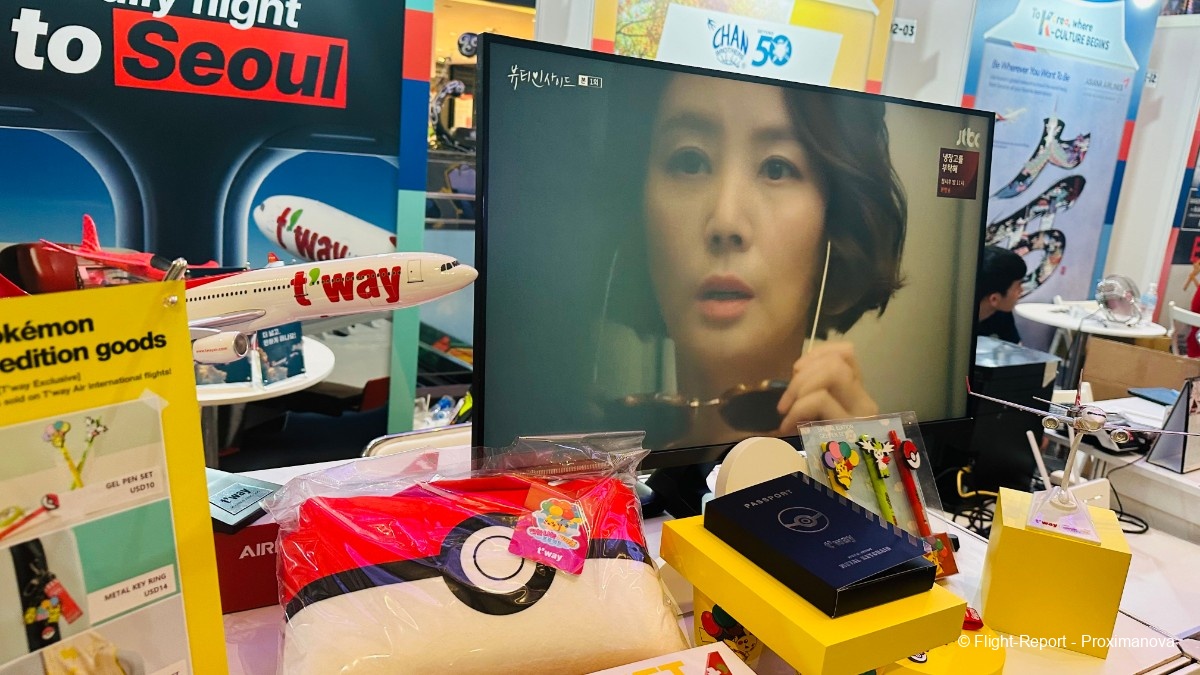
Soon enough I was in possession of a cute little 737-shaped USB drive, courtesy of T’way Air, which along with the Asiana fan greatly upped the kawaii quotient of this global driver of cultural and entertainment soft power. (That’s a Japanese word; I doubt the Korean equivalent is as well-known.)
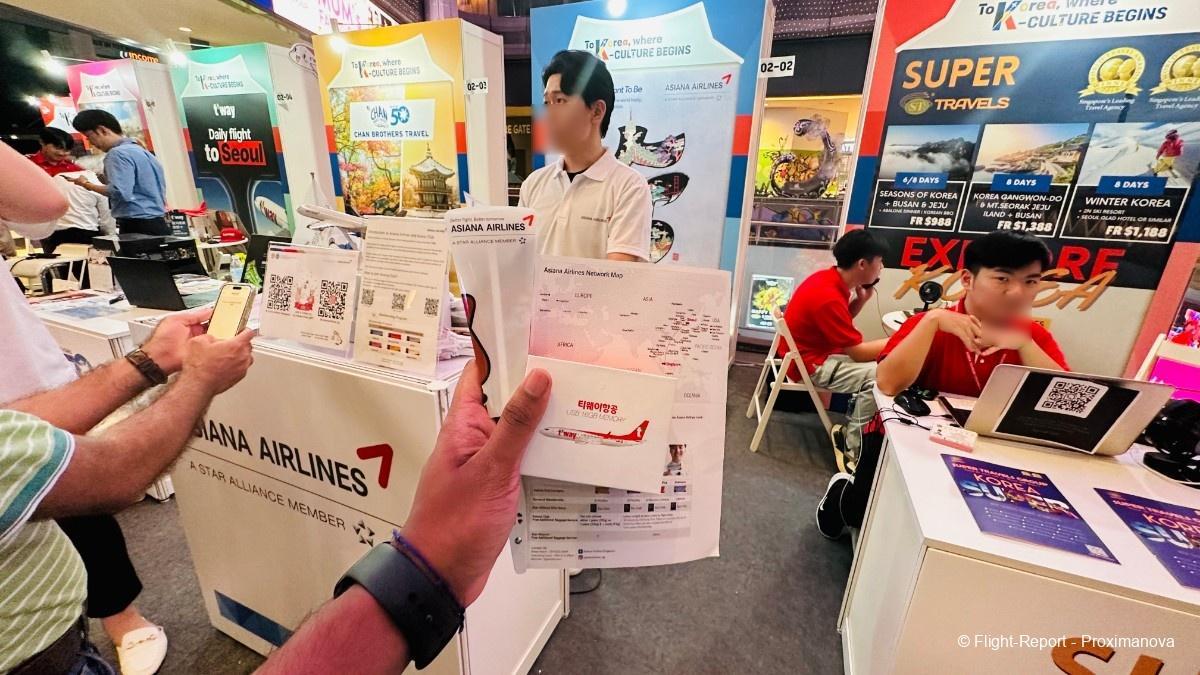
There was, sadly, no A350 or A380 model available — even for purchase — so this will have to do. It sure does inspire me to fly this airline, as long as it lasts, and experience for myself the old-meets-new cultural colossus that is Corée. (Bonjour to all the French readers out there, and especially the French owners of this website!)
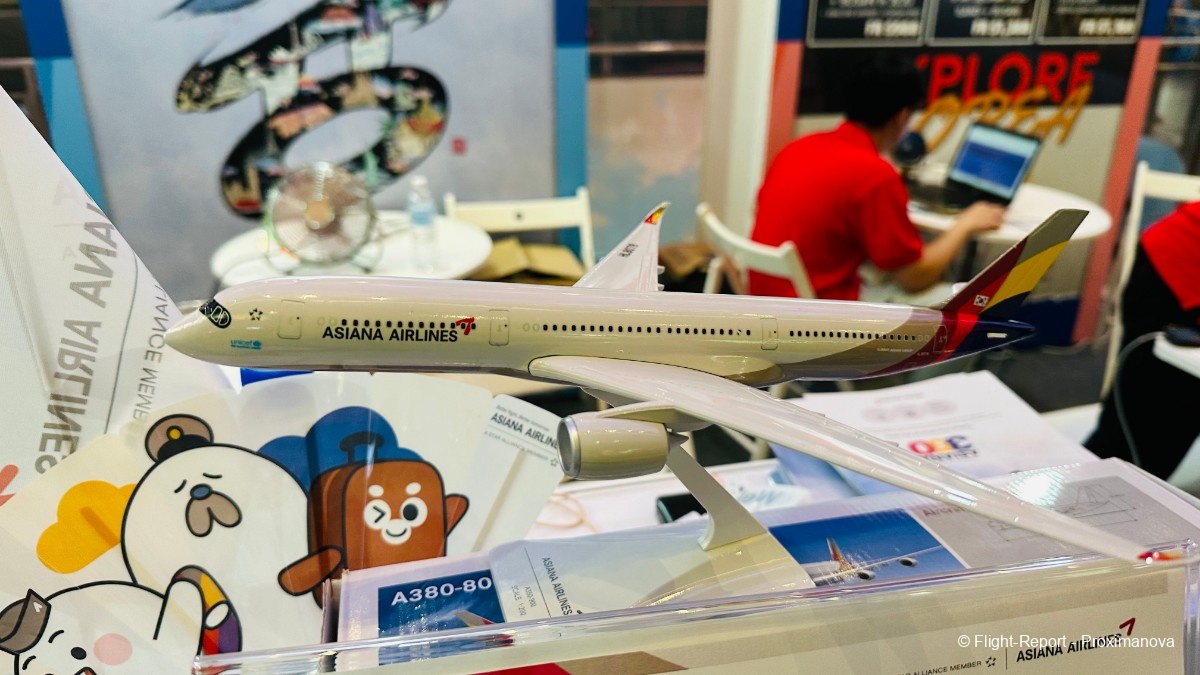
And where were you most likely to see aww-dorable mascots in Corée? At PyeongChang 2018, of course: the white tiger and black bear were a clear symbol of the immense cultural soft power of this uniquely intriguing and spellbinding country, as old as it was new, from Gwangju to Gangnam.
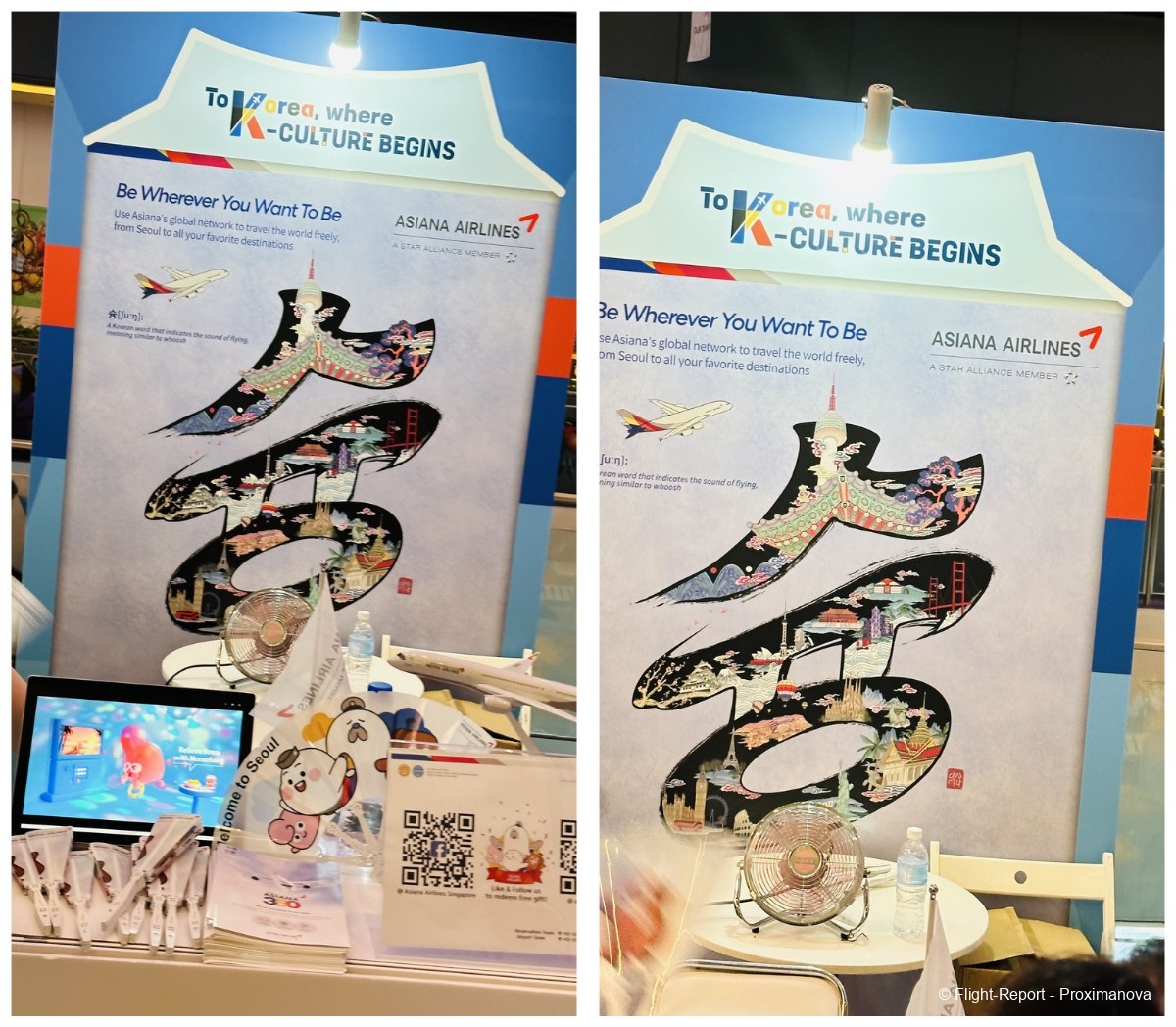
Who other than PyeongChang 2018 can do anthropomorphic animals so well? Why, Asiana Airlines of course! (I doubt Korean Air, despite all the lovely Children’s Drawing Competitions it has held, will ever be able to melt my heart in this way, as long as it doesn’t get rid of its hideous and atrocious sky-blue colours that have never changed since 1984.)
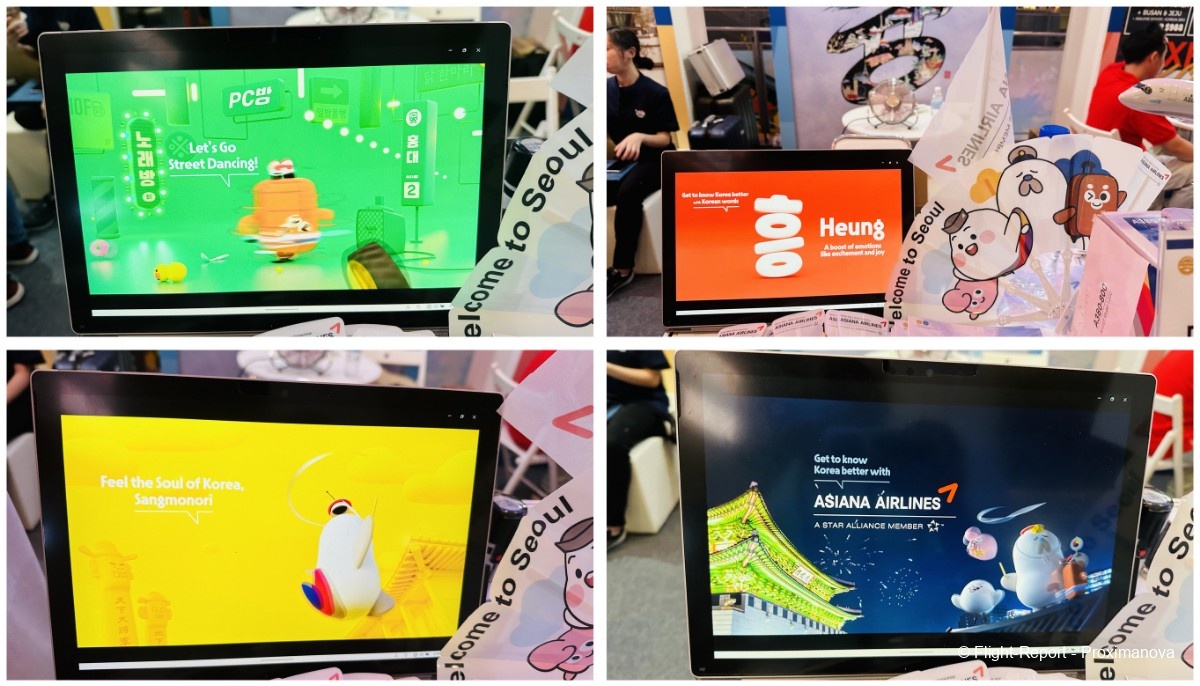
When being a Scootie-pie is unbearable: Pre-departure
Monday, 8 May. That brings me to the topic of this report: Scoot (TR). Only in Northeast Asia can a full-service carrier like Asiana or EVA get away with such cute mascots and animals without anyone perceiving them as childish. Despite also being east Asian, clean-freak Singapore is as far removed from culture-hotpot Seoul as steely Stuttgart from samba-loving São Paulo. No amount of cheesy black-on-yellow illustrations can hide the fact that Scoot’s advertising, marketing and branding must rank as one of the most vexing and irritating of any airline — heck, of any company — in the world.
Listen up, Scoot: I don’t want you telling me that I’m gorgeous, or that I like to dance with lady luck, or that I’m not on my way to fame and fortune. I was already shuddering during the booking process, my eyes goggling at these inanities, and had half a mind to click away to the cheery red or bright orange of AK or 3K — I’ll leave you to figure those codes out. But the fact remained that only TR operated the bigger, newer A321neo with any regularity, and so I had to stick with the sickening yellow colours and ‘yellow journalism’ of this vexation that Singapore Airlines should be ashamed to be the mother of.
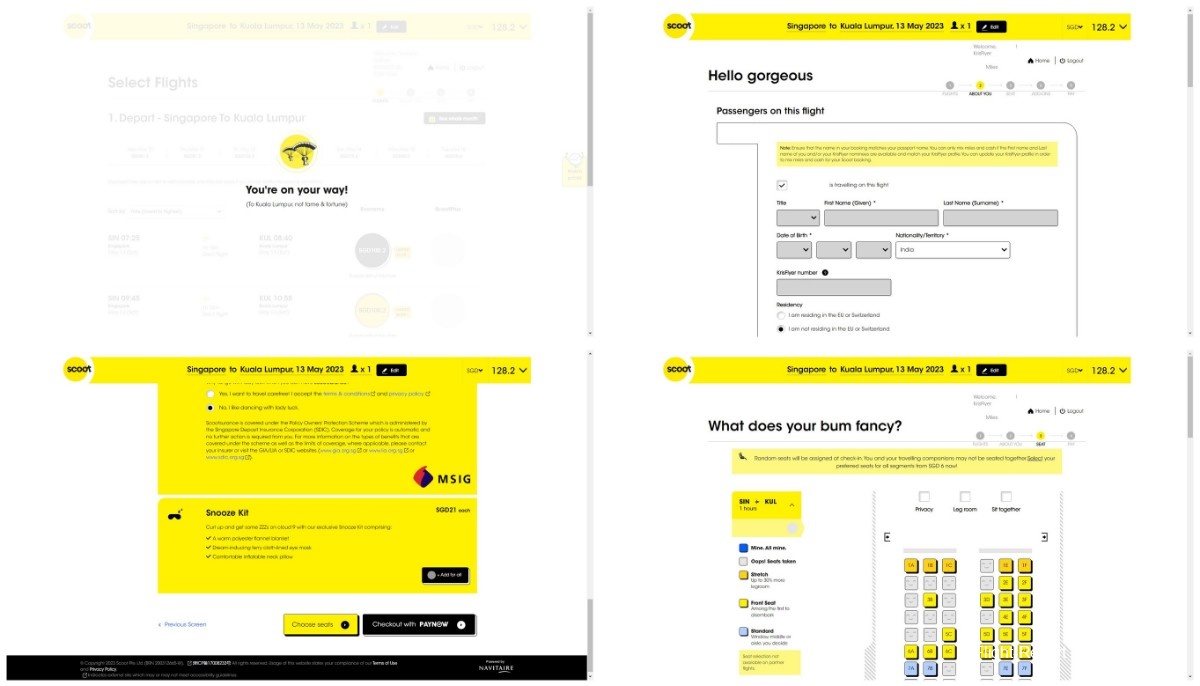
To add insult to injury, in contrast to the 2020s website, a post-booking pop-up straight out of 2004 reared its head, with a horrific space and two disgusting exclamation marks in its ‘HELLO THERE !!’. It gave me another reminder that I was, apparently, awesome, and solicited my feedback with all manner of Web 2.0 web design and typography. If Scoot were a person, I wouldn’t think twice before happily giving it an almighty kick where it hurt. ‘Thanks for your help !’ — NOT!
Worst of all, TR has started to use the awful, inescapable Montserrat font in much of its advertising and branding — as a dozen other airlines already do — and it really is an affront to the refined elegance of Singapore Airlines. Needless to say, I was approaching TR452 with zero expectations and 100% hesitation and trepidation.

Saturday, 13 May. Anyway, enough with the Scoot-bashing: I ordered a Gojek bright and early on the day of departure, and it whisked me to Changi in a matter of minutes. This is a company that has perfected its illustration style, with its people as adorable as they were enthusiastic, and I’m not sure there wasn’t a stray tear rolling down me. I’ll take this thing of beauty over Scoot’s silly sketches any day of my life.
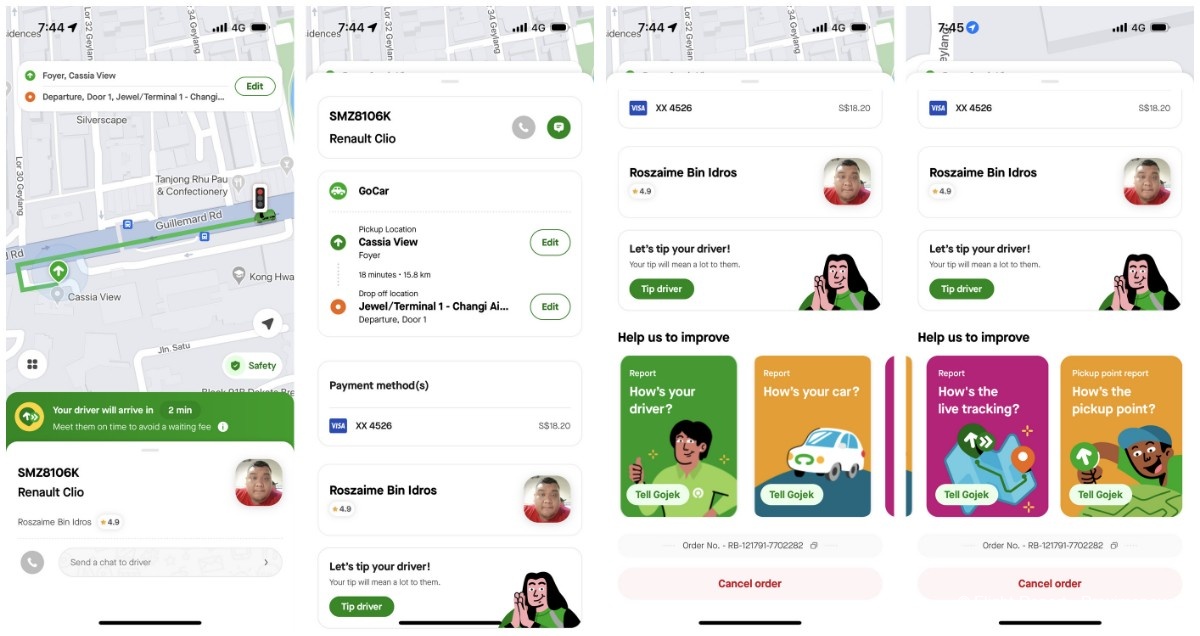
I decided to play the game of ‘strike out possible candidates until you’re left with the one that will operate your flight’, 9V-NC-series edition. In the past it had worked well, but trust it to bite me back on the very airline I dreaded. I had hoped that I wouldn’t get a registration ending with ‘I’, and… no prizes for guessing which one I got. Thanks, Scoot!
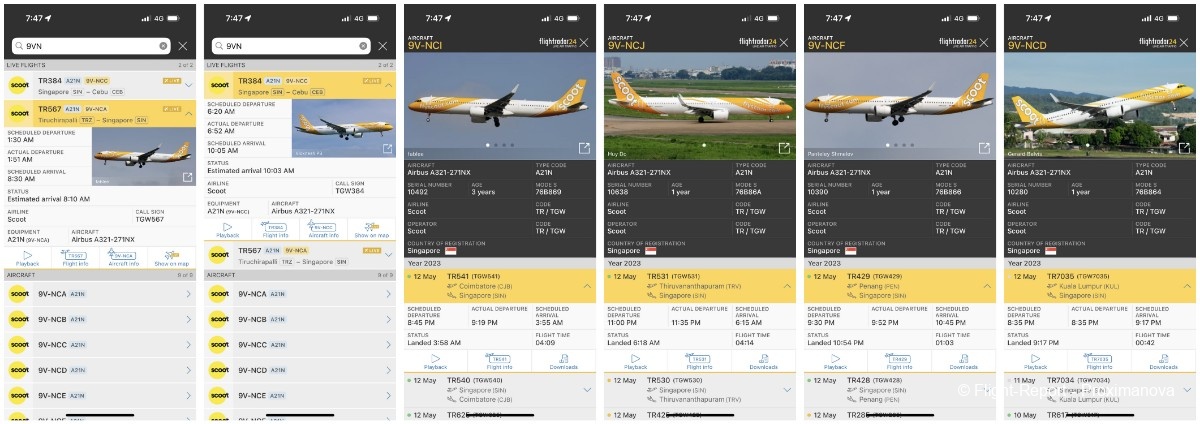
As is always the case, it was no more than twenty minutes, tops, before I entered what is considered to be the world’s best airport — sorry, Hamad, but Skytrax rankings do not a global winner make.

Jewel Changi has done much damage to the pride and ego of the Qataris, enough for them to build an equally dazzling and rainforest-y ‘Orchard’ in the middle of Hamad International.

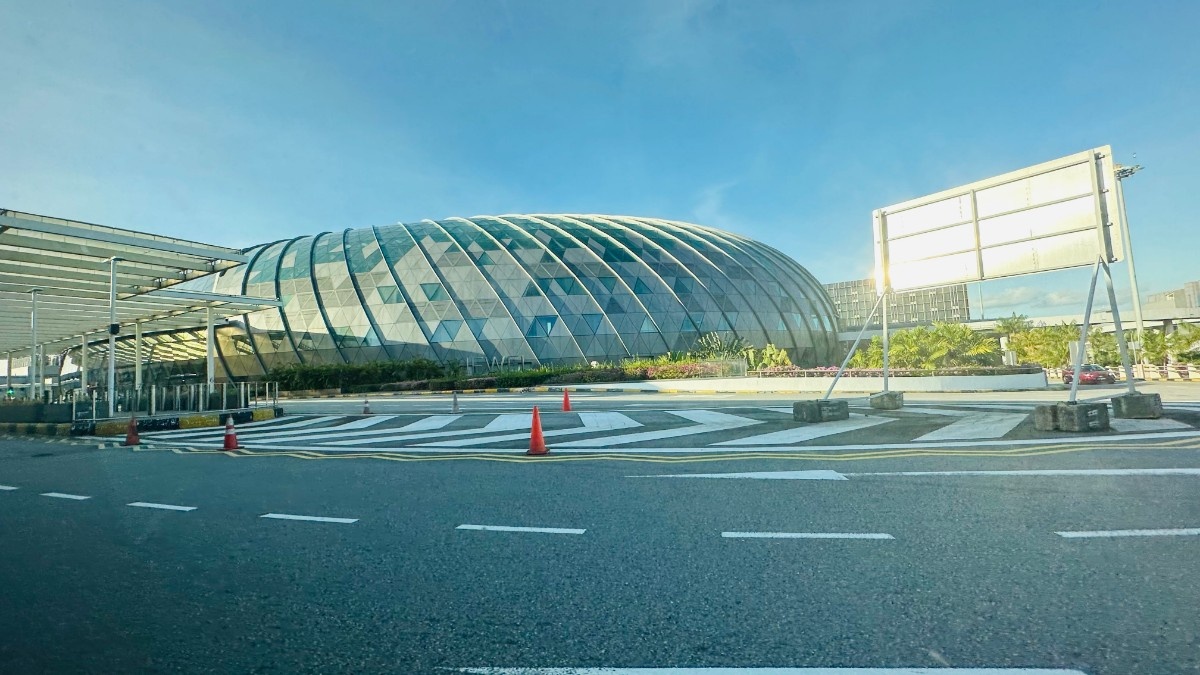
I’m afraid the pictures don’t make it very clear, but these were the airlines using Terminal 1’s Door 4 — half of which were Chinese (Air China, Shandong, Shenzhen and Xiamen) and the others being ANA, BA, IndiGo and Turkish — and Door 5, namely Finnair, Fiji and Malaysia Airlines from Oneworld, as well as Emirates, Philippine Airlines and the now-defunct Regent Airways from Bangladesh.

Scoot, for its part, uses Door 2, in addition to Thai Airways and Papua New Guinea’s Air Niugini, which in two or three years’ time will be swapping out its nearly-30-year-old Boeing 767s and Fokker 100s for spanking-new Airbus A220s and Boeing 787s — much like Africa’s Air Austral and Air Tanzania! A most astounding transformation indeed. Also shown are some more airlines that no longer fly to Changi:
• another eastern African airline, Air Mauritius (one of the world’s only airlines to have both A330neos and A350s, despite its tiny size!), which has resumed Perth and Kuala Lumpur, but not Singapore*;
• Regent Airways from Dhaka, as mentioned above, which is being liquidated; and
• Indian low-cost carrier Go First, which was grounded in May and is increasingly unlikely to make a comeback. You can also see the airlines at the next door: Scoot, Qantas and a little-known Chinese regional carrier, Hebei Airlines.
*This reminds me of Star Alliance carrier LOT Polish Airlines, whose sign I have seen countless times on the Changi T1 driveway, but which has no intention to return to Singapore any time soon, despite growing its Asian and Indian network out of not only Warsaw but also Kraków, Wrocław and even Budapest.

People of all demographics were lining up to use the automated check-in counters — and most of them, myself included, would soon have to make a beeline for another counter, as I’ll now explain. (A reader from Russia, Georgia or Uzbekistan may be familiar with that name, since the Beeline telecom brand in these countries uses the same black-and-yellow colours as Scoot!)

The awfully Montserrat-ised kiosk and its over-cutesy cartoon characters invited me to get my bag tags, since I’d already printed my boarding pass. Except it wouldn’t workout that way, as no matter how many times I tried, there was no way it would accept my booking details, throwing up a ‘We could not find your booking by passport’ error.
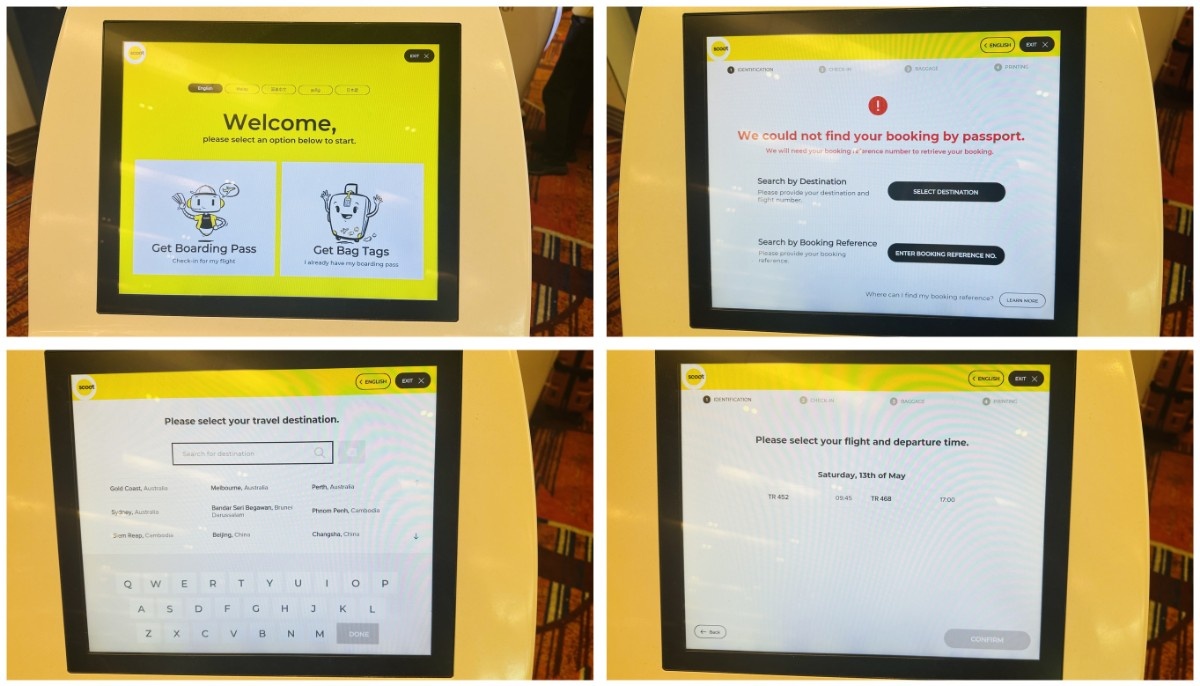
As — it turned out — was the case for most other Scoot passengers, and I joined them in the queue to drop off my single suitcase, which in any case was far more than necessary for a 36-hour trip.
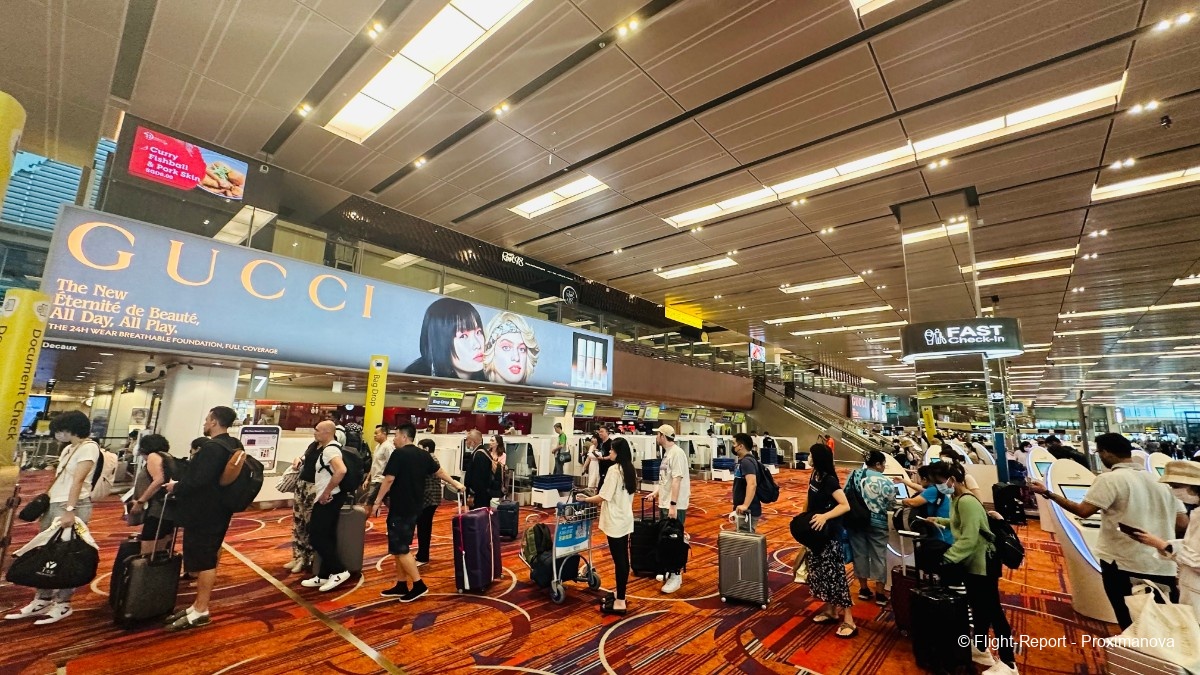
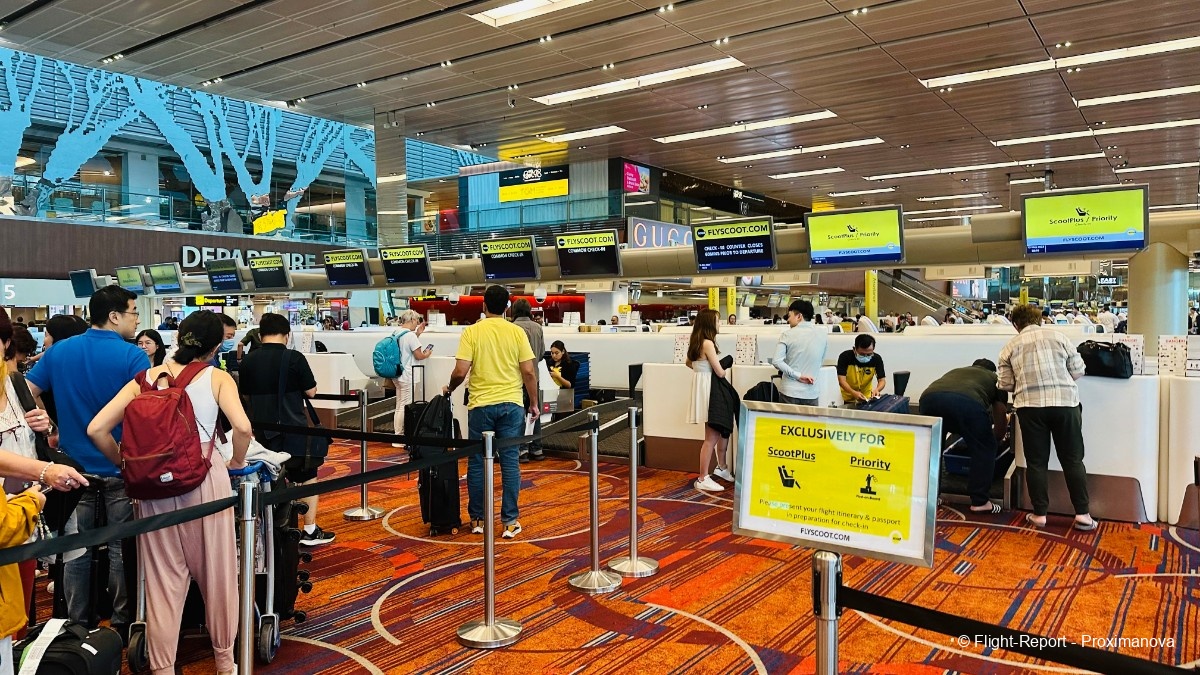
Scoot, with both the bright colours and the painful sting of a honeybee, accounted for more than half the departures at this hour, which were mostly within ASEAN aside from the odd flight to Australia. There were also bosom-buddies Emirates and Qantas, in addition to other Oneworld airlines like JAL, MAS and Qatar, and some other full-service airlines like ANA, KLM, Thai Airways and Philippine Airlines.
If you really squint, you will also find IndiGo (6E1004 to Chennai, which I’ve taken countless times before — but under a different flight number, 6E52), Myanmar Airways International (8M232 to Yangon), Starlux Airlines (JX732 to Taipei) and Bangkok Airways (PG968 to Koh Samui). Moreover, airlines from China have increased their presence here lately, the ones visible here being Chongqing Airlines (OQ2096), Xiamen Air (MF886 and MF852) and flag carrier Air China (CA404 to Chengdu–Tianfu).
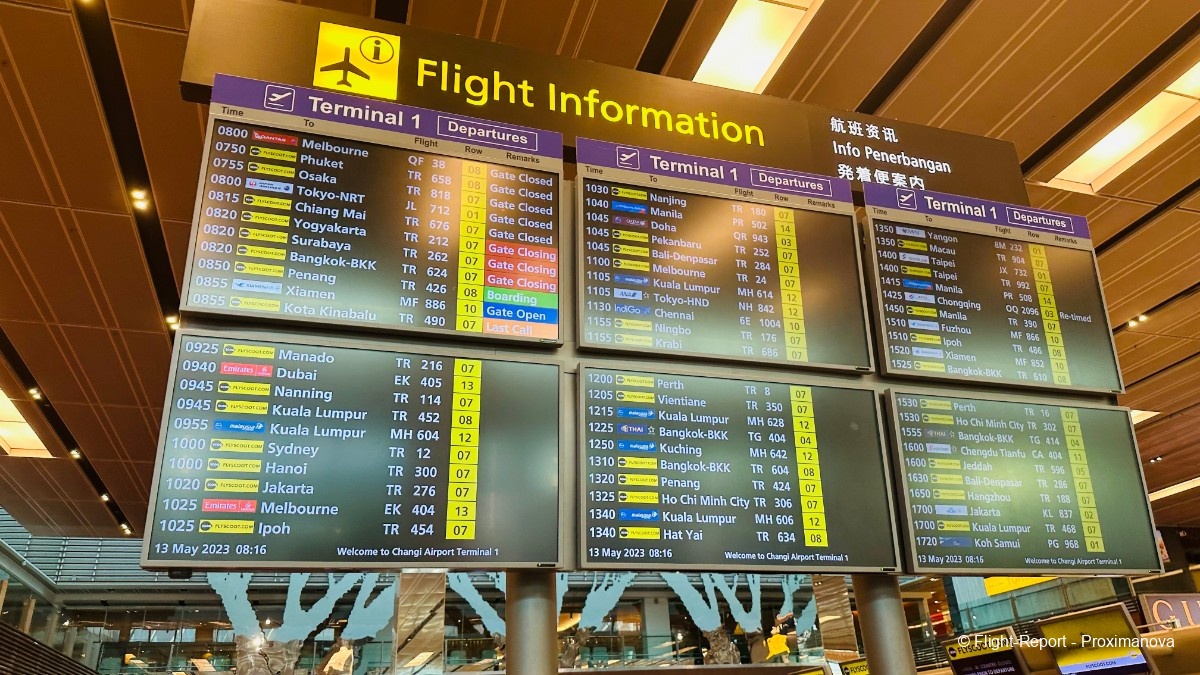
The elderly travellers directly before me turned out to be from a far-flung country in eastern Europe, judging by their passports that said Uniunea Europeană — România — Pașaport. It’s a shame for such a lovely country that their national airline, TAROM, is nothing to write home about — as is the case with a number of SkyTeam airlines.
On their luggage was a sticker of an airline from an even more distant country, on the other side of the world: the now-defunct LAN Airlines from Chile, which was Oneworld’s big South American member from 2000 well into its merger with TAM of Brazil. (Well, until Delta Air Lines played spoilsport and yanked LATAM out of the alliance, with the exit effective in May 2020, a month after Royal Air Maroc joined as its first African member. Which means April 2020, when the world was beginning to lock down, was the only month that the blue-circle group had members from all six continents!) I digress.
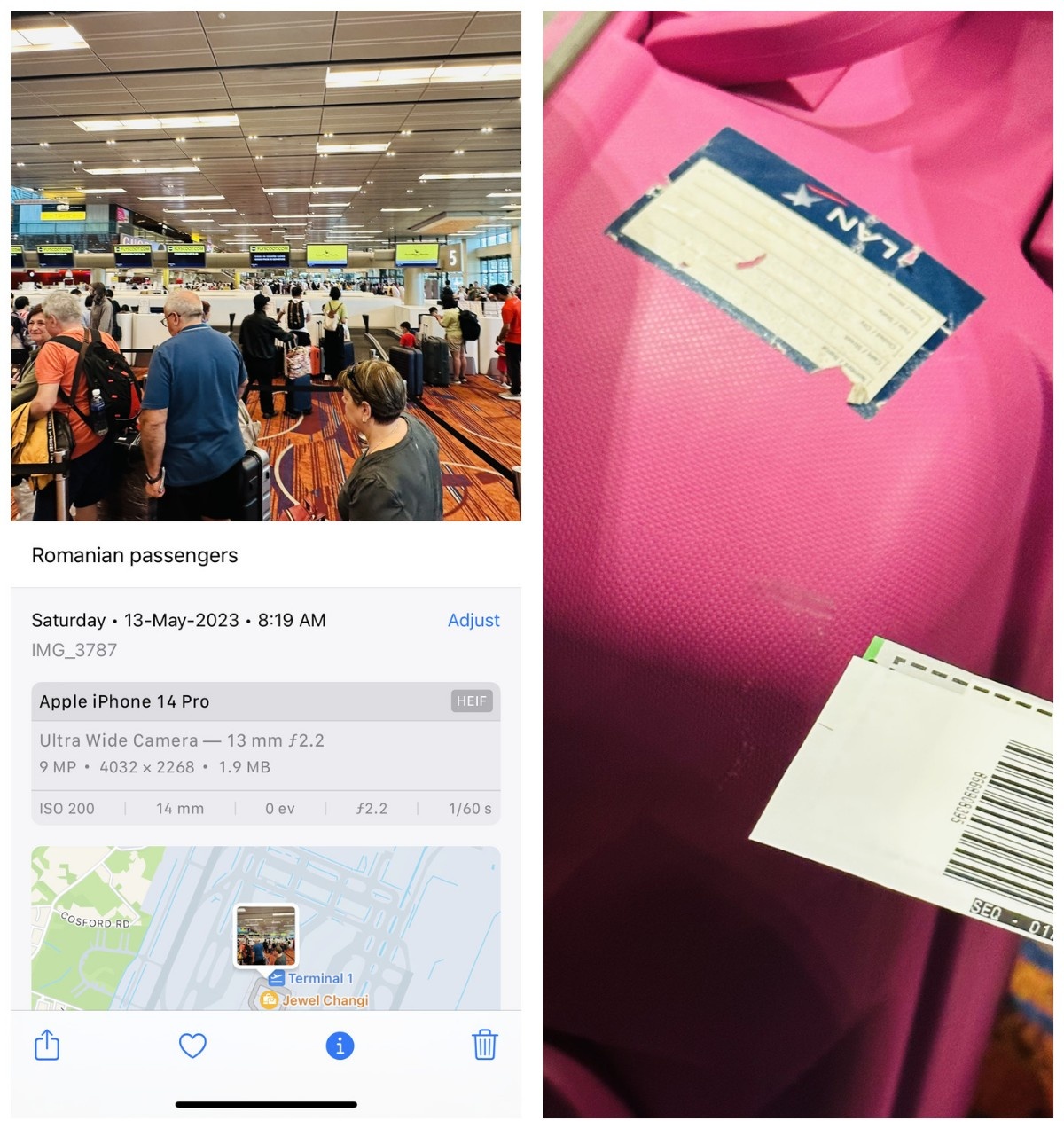
After dropping off my luggage, I proceeded to explore other airlines’ check-in facilities. While Jewel Changi’s early check-in lounge is glamorous, Terminal 1’s more sedate version would remain closed until reopening in early June for the first time since 2020 — but only for six airlines from China: Air China and subisidiary Shenzhen Airlines (both Star Alliance), China Southern Airlines (former SkyTeam) and subsidiary Xiamen Air (current SkyTeam), and the little-known Chongqing Airlines and Hebei Airlines as I’ve mentioned above.
It seems these Chinese airlines are being treated like second-class citizens, while the equivalent (and much more eye-popping) facility at the Jewel permits passengers on big global airlines like SQ, Emirates, Air France–KLM and especially Finnair, Malaysia, Qantas and Qatar from the China- (and Taiwan- and Korea-)free alliance.
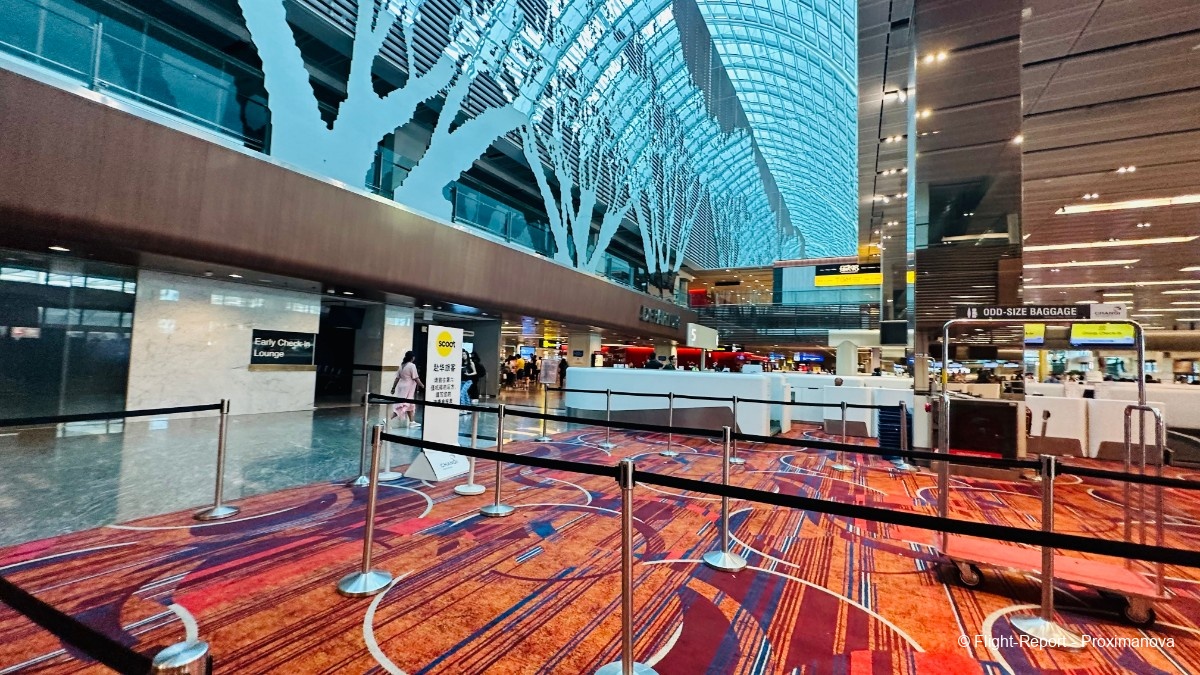
Of these, the Oryx airline was preparing for the morning QR943 departure. An A350 with the latest-and-greatest Qsuite, renowned as the best in the world, was ready and waiting next to what would be my aircraft. By consistently sending Qsuite-fitted A350s over the last few months, QR has ensured that even though it may continue to play Russian roulette with many of its Qsuite destinations — swapping them out for inferior aircraft more often than not — Singapore won’t be one of them.
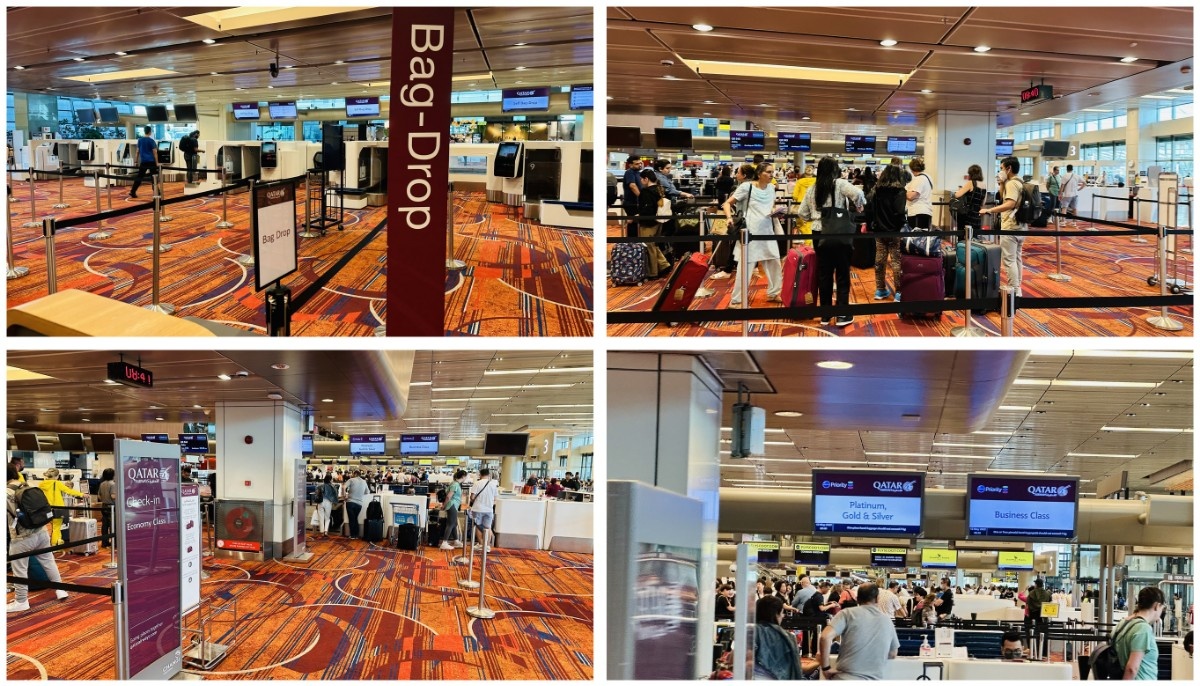
Nearby, Turkish Airlines — which also has a large percentage of long-haul aircraft with outdated 2-3-2 business-class seating that takes away from the sheen of its fantastic food and service — had put up a sign asking passengers to check the size of their check-in baggage, something that’s usually only found on low-cost carriers.

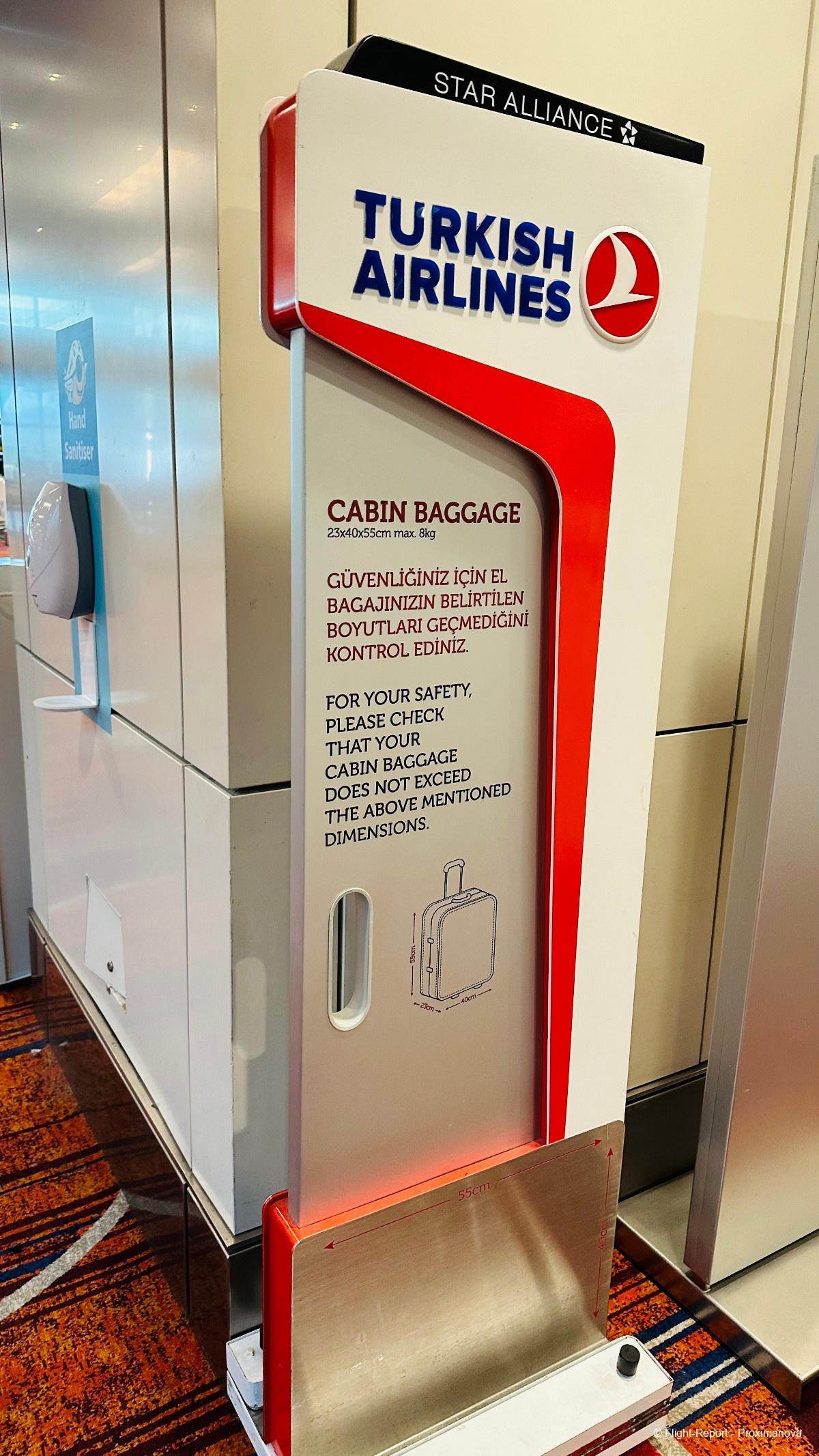
Now, however, wouldn’t be the time to fly such luxury airlines — not that it mattered, not when I was standing in the world’s most luxurious airport, with Mr Vuitton and Ms Tiffany taking centrestage.
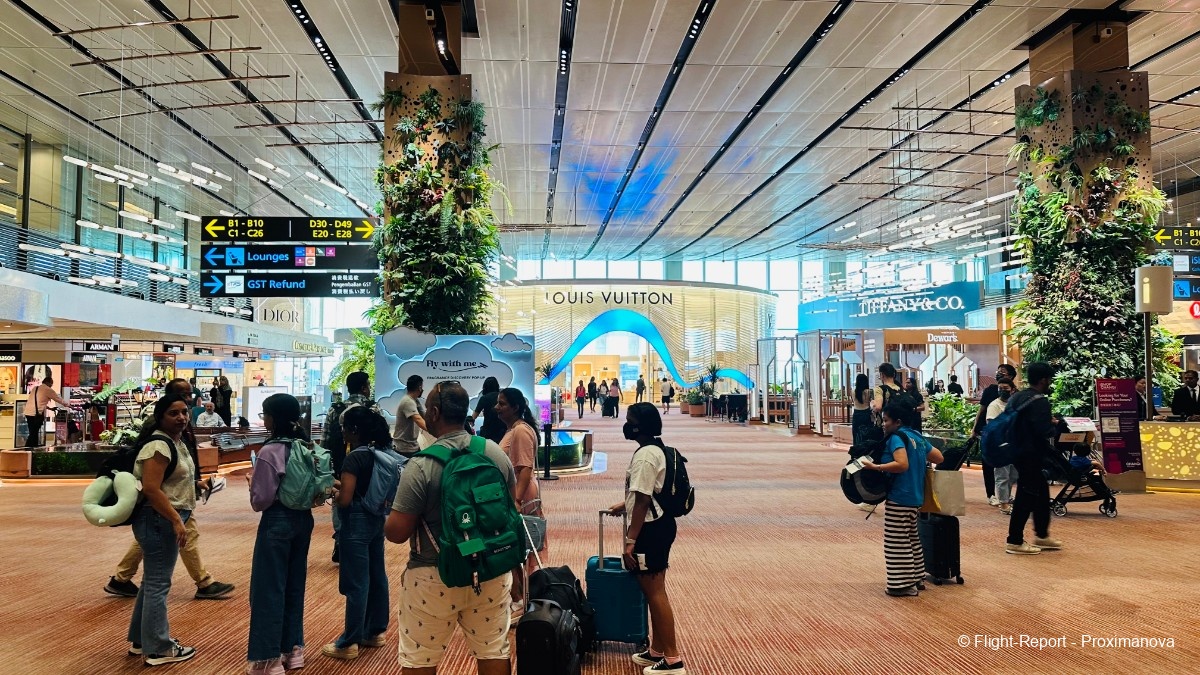
Some woman decided to take pictures of the clear, sunny apron, standing next to the equally brightly lit-up Dior boutique.
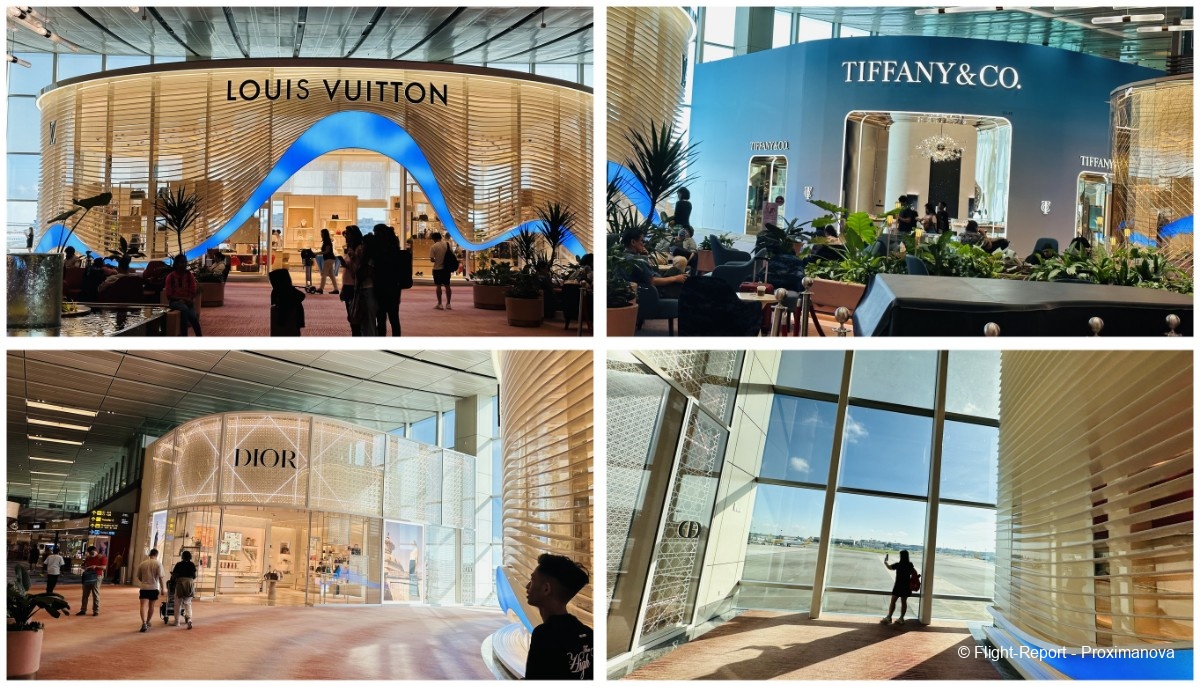
Over there stood 9V-NCA and NCJ, which had returned from two South Indian cities with long and unpronounceable names: Tiruchirappalli (TRZ) and Thiruvananthapuram (TRV), respectively. Most people call them Tiruchi (or Trichy) and Trivandrum instead. Their codes tie in neatly with Scoot’s TR code, with the flight numbers being TR567 and TR531, respectively. My plane, 9V-NCI, had returned from another smaller South Indian city, Coimbatore (CJB), as TR541.
Also present was a 737-800 (9M-MXJ) of Malaysia Airlines, which has now made the Negaraku livery with the flag flying across the fuselage its standard livery — though its 737 MAXes, in the 9M-MV* series, have now introduced yet another livery variation by embedding a songket pattern into the tailfin design.

Outdoors was as vacant as indoors was filled with curiosities and decorations, among them a pretty koi pond abutting a small seating area. A little boy peered into the water, his mother at first blissfully unaware, before later taking a picture of him. Meanwhile two South Indian kids stared into the distance.
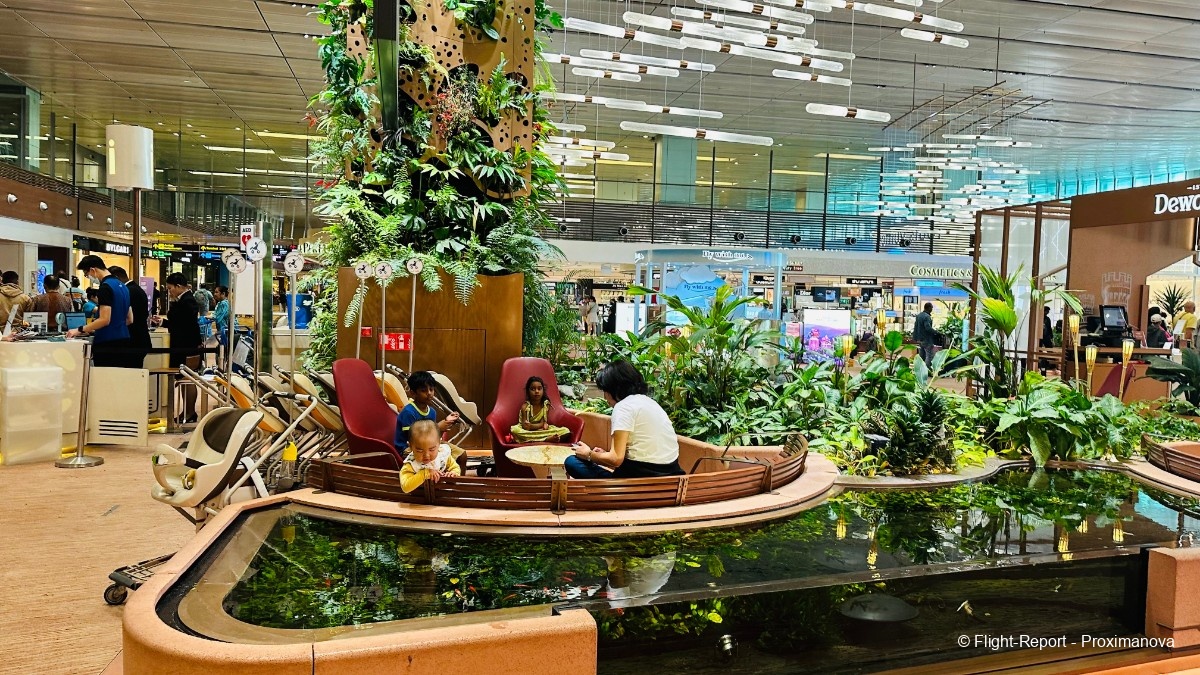
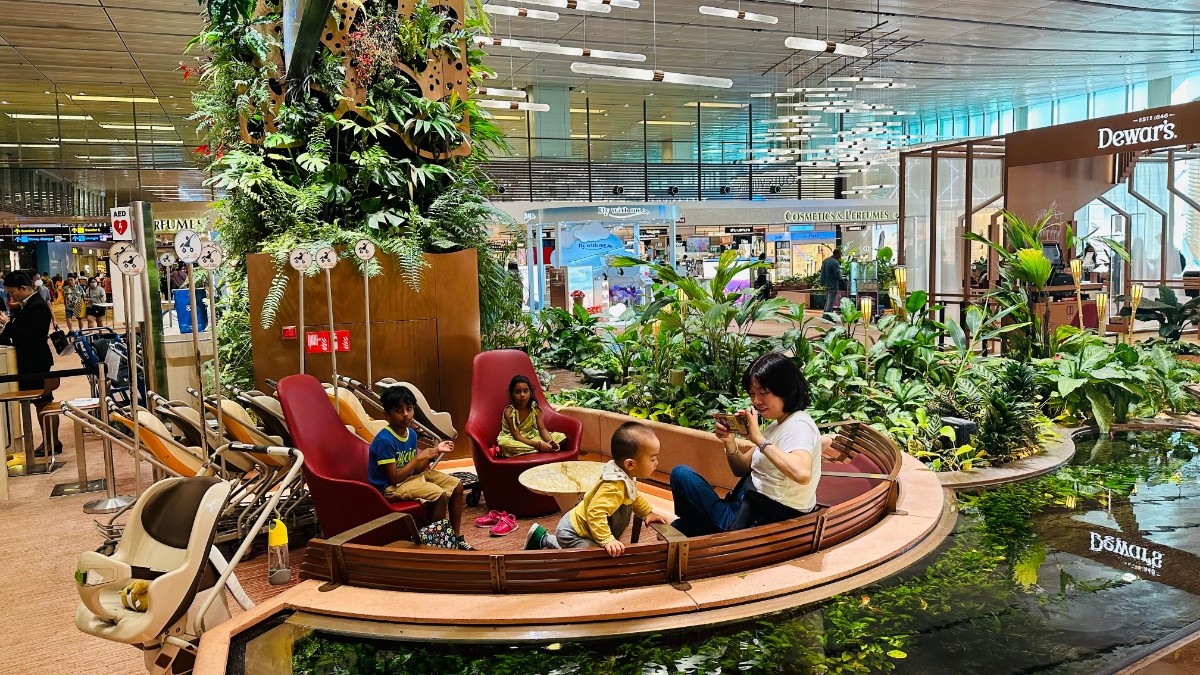
Even the restrooms were a picture of elegance, with a cylindrical frosted-glass containing some sort of exotic vegetational species!
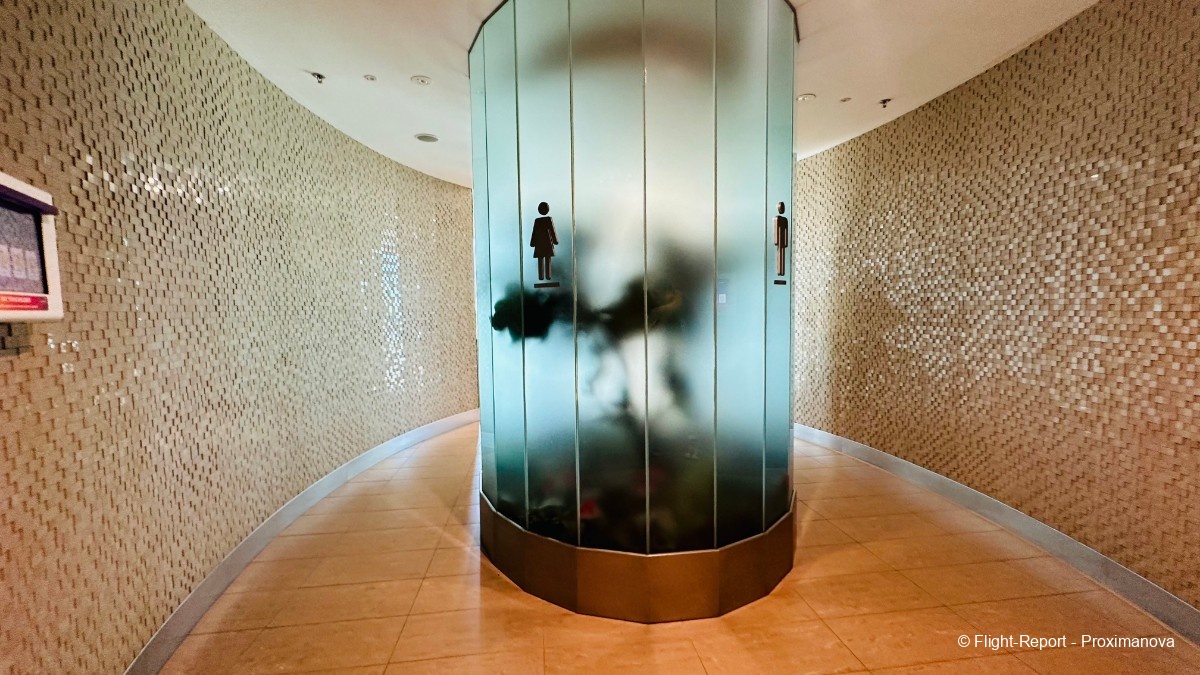
I popped into a large 7-Eleven for a micro-breakfast, consisting of a limited-edition Double Combo Sandwich (Black Pepper Mayo Shaved Chicken Ham — a mouthful of a name — and Egg and Cheese) and a lime-flavoured Pepsi Black.
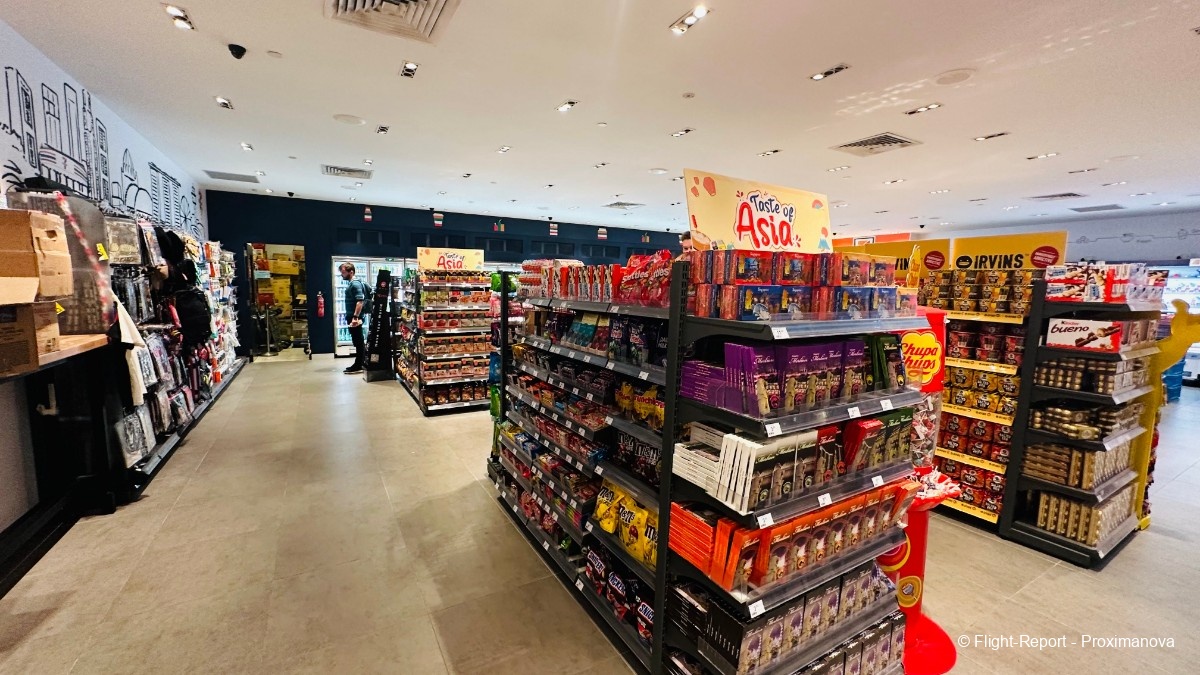
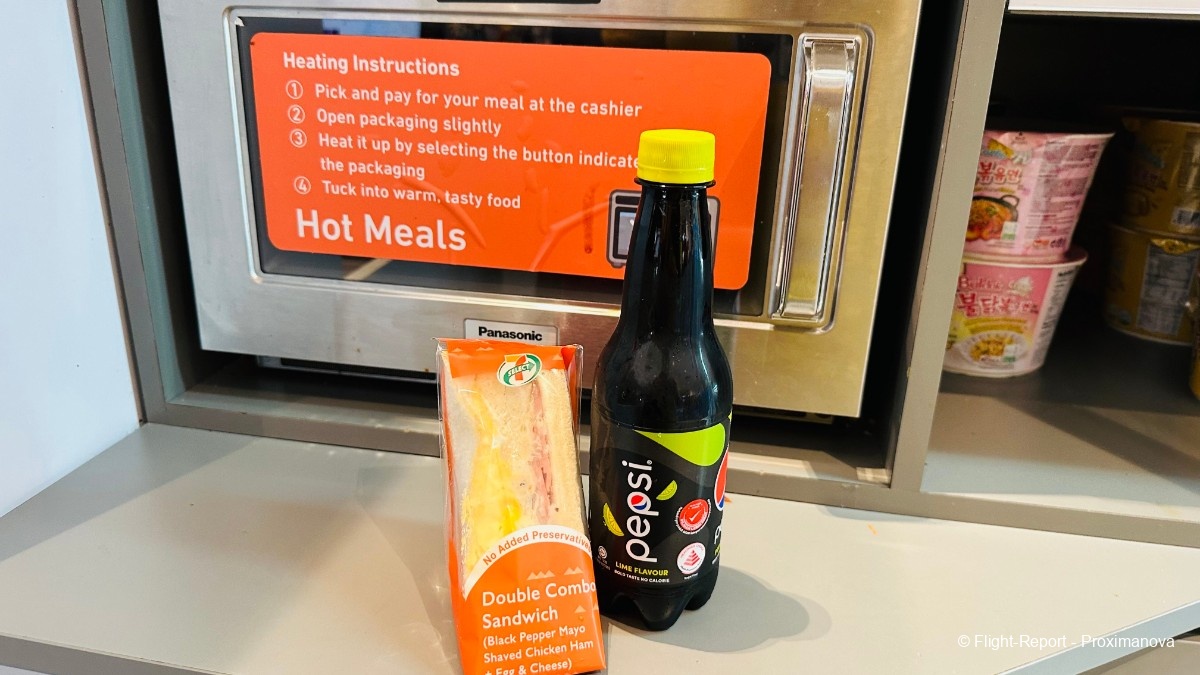
A girl headed outside after likely pestering her mummy to buy something to sate the pangs in her tummy.
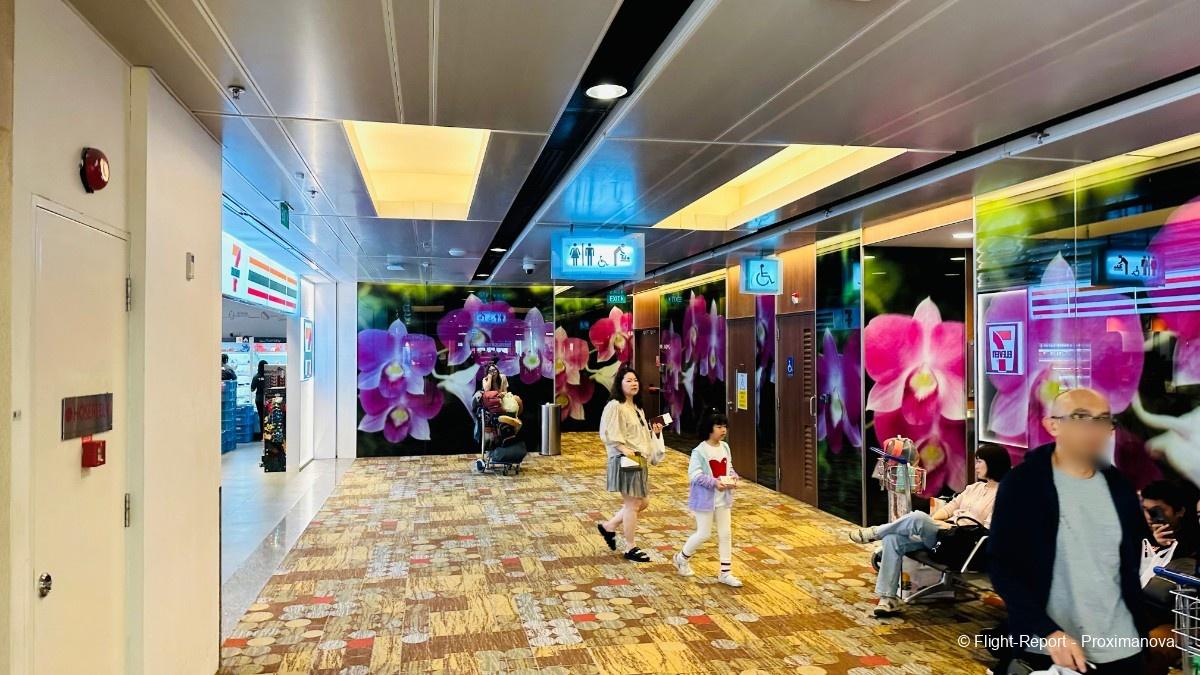
She may well have gone to The Cocoa Trees instead, which with its slogan of ‘Can we make you happy today?’ could have found its ideal customer there.
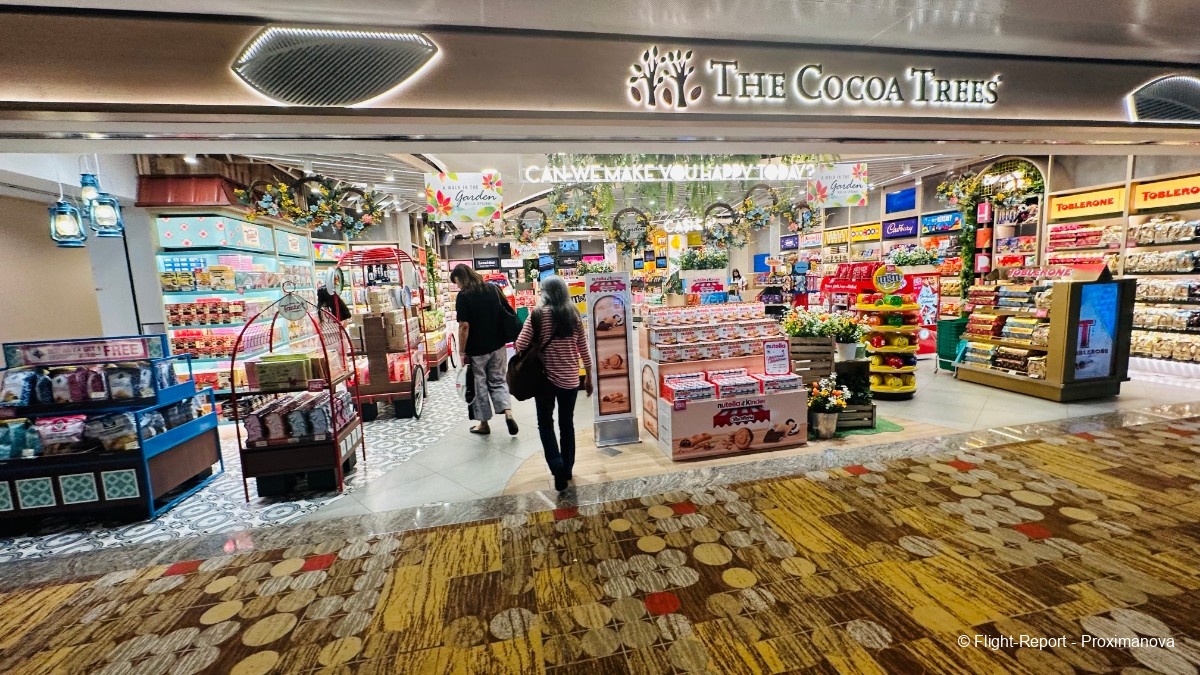
There were also a spacious electronics shop and a WHSmith, which I passed up on — no point in paying in dollars what you can get in ringgit at a much better value. What, otherwise, is the point of going for a shopping spree in Suria KLCC?
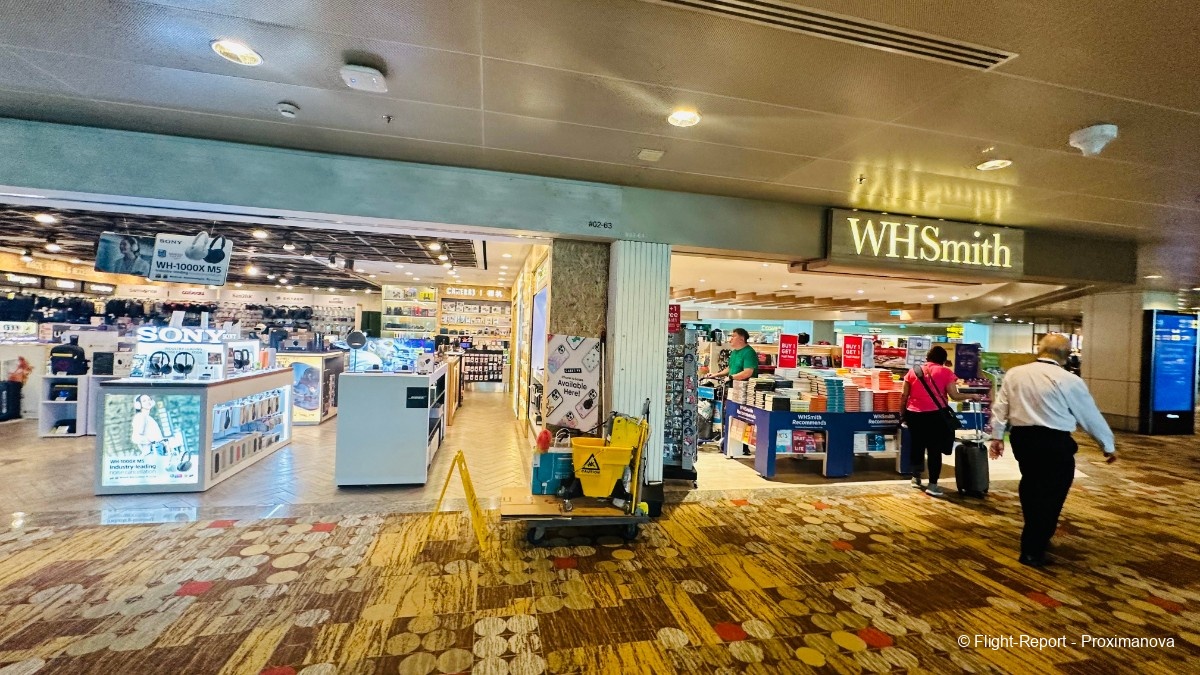
Now I had approached Gate D41, it being about half-past nine and nearly time for boarding, with not too much of a queue outside as most were already on board. I was still secretly hoping for 9V-NCB or NCD or NCE, as most of the other 9V-NC* A321neos were jetting off somewhere or the other. (For the record, 9V-NCG does not exist: it was not delivered to Scoot, and instead went to Mexico’s VivaAerobús as XA-VBZ. Ironically it was named New Beginnings — something that wouldn’t come to pass!)
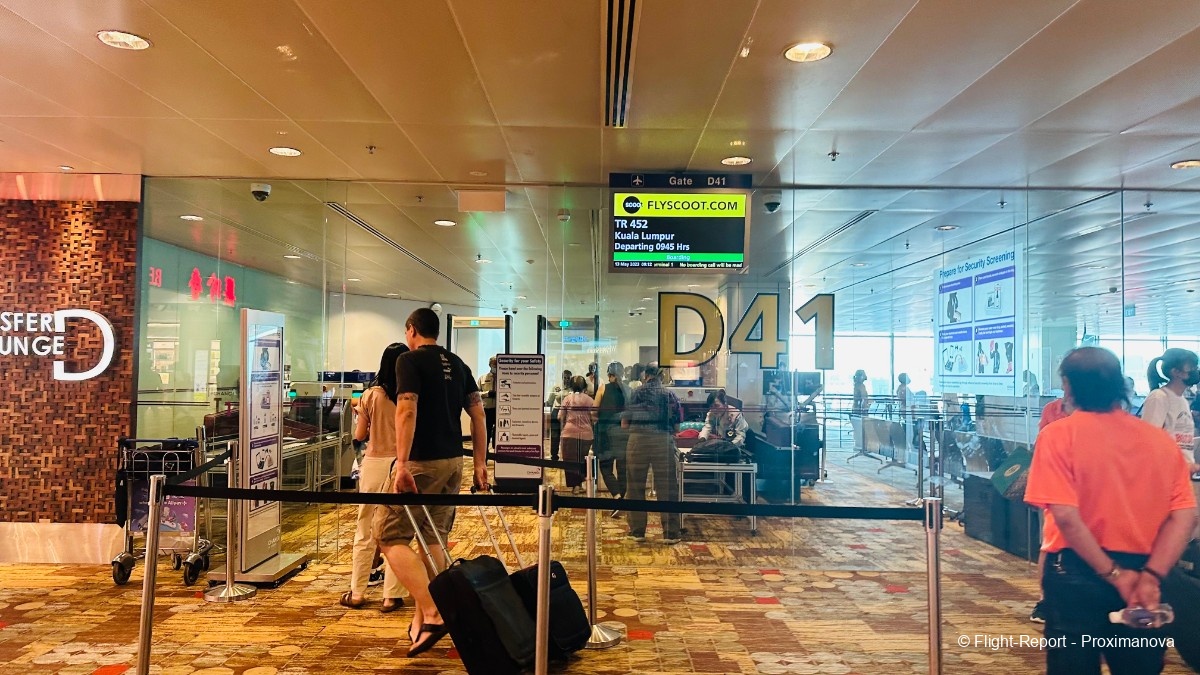
All I could see of the A321neo was the website, rather awkwardly slapped in a weird curve leading to the nosweheel, and the name ‘Ong Lai’. For an airline that names its aircraft So Far So Scoot (9V-TRM) or The Future Is Yellow (9V-OFE) or even the more mundane Inspiring Spirit(!!) (9V-OJC), this was as undecipherable a name as they come. Not to mention the avgeek-friendly Tango Romeo Papa (9V-TRP, of course) and Niner-Victor (9V-TRX, an exceptional aircraft since parent Singapore Airlines prohibits the letter X in registrations) — or even the risqué Kama Scootra (9V-OFG) and Getting Lei’d (9V-OFK), though I much prefer the naming approach of airlines like JetBlue in this regard, which is fun without being reckless.
But I could not see the nosewheel registration itself. Just as well that I didn’t, because it would have killed the spirit much earlier. (No pun intended on the other yellow LCC with the same starting and ending letters!)
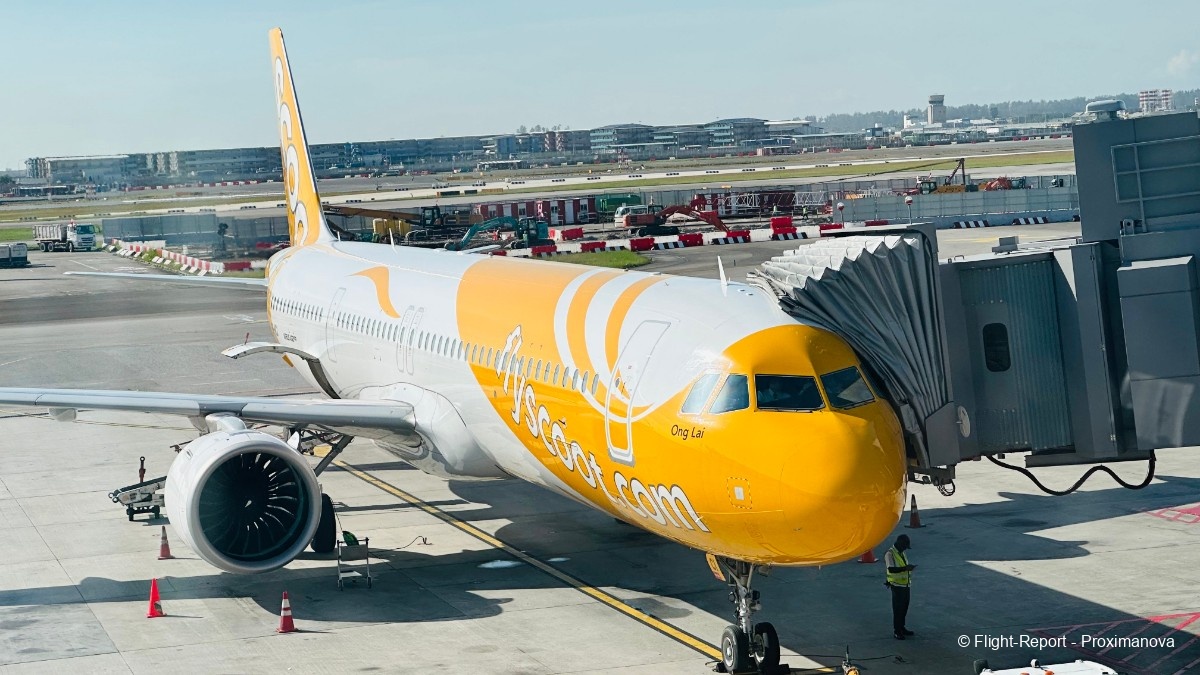
Beside us was Qatar Airways’ A7-AMJ, an A350-900 that would soon push back for the QR943 morning sector to Hamad, the world’s so-called ’number one’ airport. Singapore being a top premium destination to show off its top-notch Qsuite and show a middle finger to SQ, the Oryx airline has ensured that it flies only its Qsuite-fitted A350s on all its flights here, which all use the QR94x series. This is crucial for one of the world’s top luxury airlines, one that has long boasted of the world’s best business-class product, but has so far forced to keep swapping it for other inferior planes — a big reason being the dispute with Airbus over paint issues that kept many A350s grounded for months.
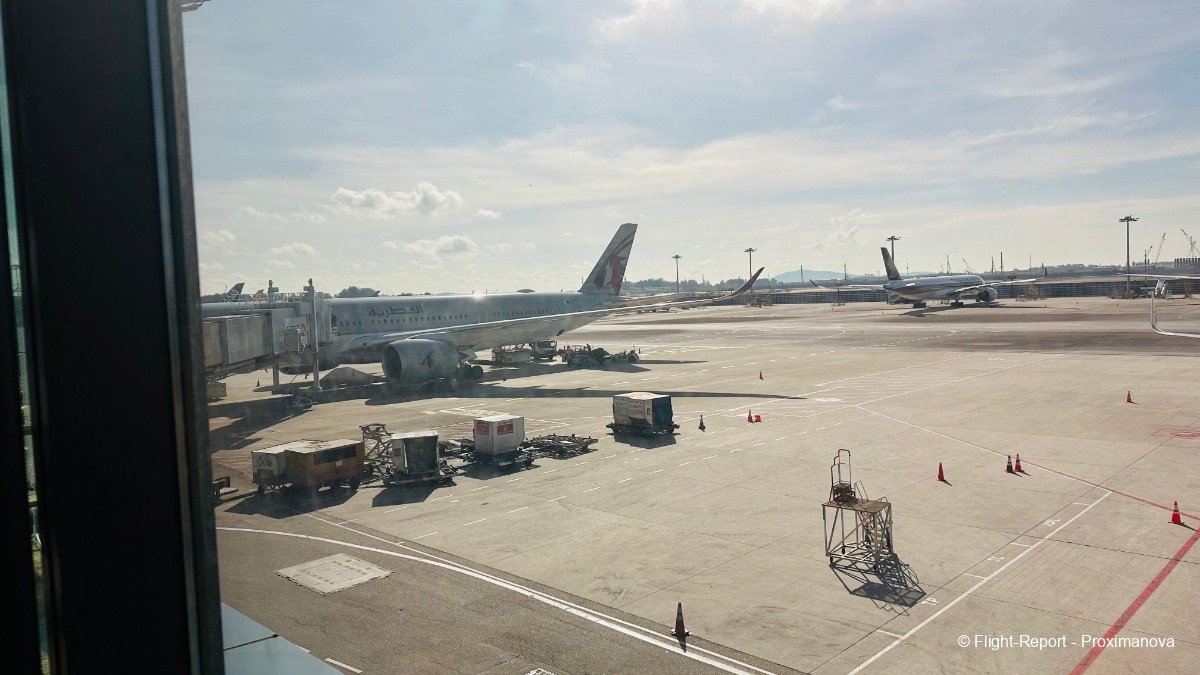
That QR has never flown its A380 to Singapore like Qantas does — sending the superjumbos to Bangkok instead, like the duo of Asiana and Korean Air, and soon Lufthansa — is therefore a blessing in disguise, and it seems Changi is better off without them. As Singaporean aviation and miles-and-points blog Mainly Miles says: Qatar Airways has a deliberate policy of using Qsuite-equipped A350-900s on its Singapore flights — no surprise when flying to and from the home base of a large competitor, Singapore Airlines, who continue to shun the privacy of closed-door suites as a Business Class option for now.

It was only when nearing the aircraft that I saw the dreaded letters ‘CI’ on the nosewheel. That was enough to deflate me completely and nearly reduce me to a nervous wreck. Wickedly wonderful indeed that not only should the registration be exactly what I did NOT ask for, but the aircraft name should be something as confoundingand oddball as ‘Ong Lai’. Apparently it is the Hokkien word for a pineapple, and is used to mark good fortune or auspicious beginnings — something that I sure as heck wouldn’t be getting on 9V-NCI.
Then again, many Scoot aircraft have names deriving from various Asian languages: not only Chinese and its dialects — e.g., Ki Jiak Hong (9V-TAZ) and Baobèi meaning babe (9V-TRC, written in Chinese as 宝贝 on the aircraft) — but also Hindi (9V-TRT: Chalo Chalo), Bahasa (9M-TRR: BerScootu), Korean (9V-TRS: 자기야 Jagiya, which also means babe), Tagalog (9V-TRW: Bayanihan) and Japanese (9V-TND: すこいね! (su koi ne!), meaning awesome) as I’d see during the taxi. Should’ve known going in…
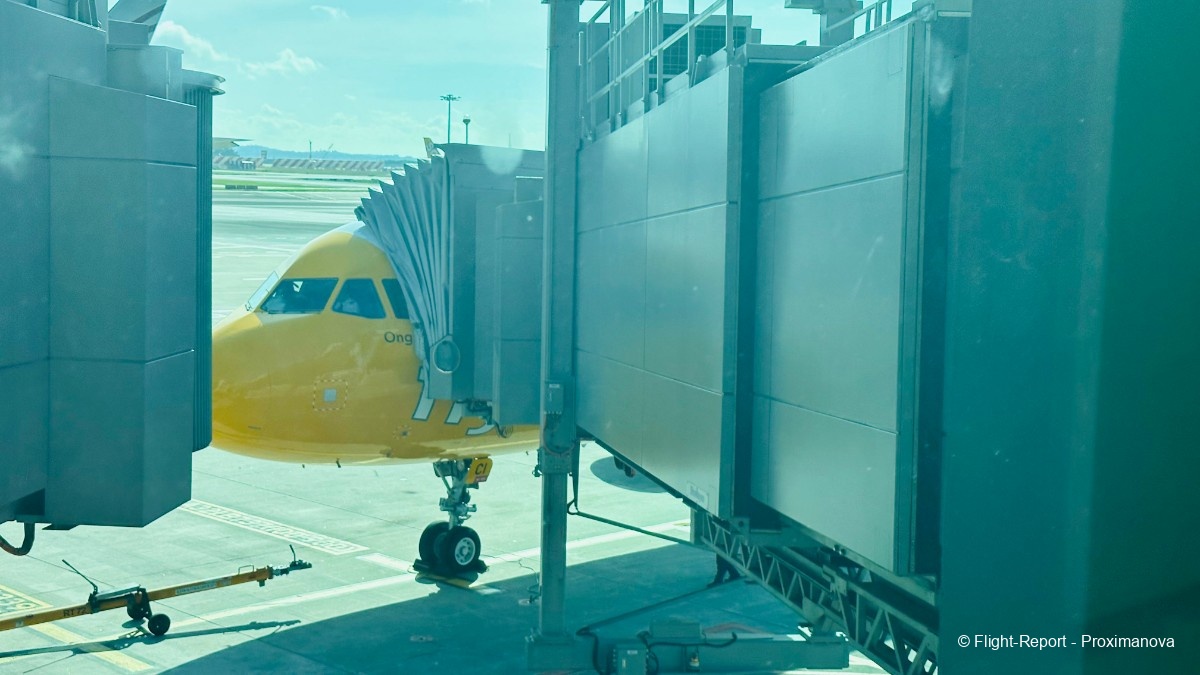
And so I proceeded like a convicted prisoner to the gallows, with the ‘executioner’ looking anything but murderous but still more than enough to depress, its bright yellow don’t-give-a-f*** livery only managing to increase my fear of this Montserrat-ridden airline. I may sound like a madman, but that is precisely how I felt.

The flight: Boarding and departure
Flight: Scoot TR452/TGW452
Date: Saturday, 13 May 2023
Route: Singapore Changi (WSSS/SIN) to Kuala Lumpur International (WMKK/KUL)
Aircraft: 9V-NCI, Airbus A321neo, named Ong Lai
Age: 1 year 4 months at the time (built: 4 January 2022, delivered: 10 February 2022)
Seat: 36F
Boarding: 9:45am MST/SGT, UTC +8
Departure: 10:05am UTC +8
Arrival: 10:45am UTC +8
Duration: 40 minutes
Notes:
• First flight on Scoot, and second on the A321neo after Vistara UK106 from Singapore to Mumbai in March 2023.
At the entrance I was greeted by Heiko from Japan, whose picture I would not dare to take were it not for the mask that she was wearing, which was compulsory on SIA group airlines for the longest time until being revoked recently. Joyce Chan would be the only other FA’s name which I registered, since she served my section at the back of this 236-seater A321neo.
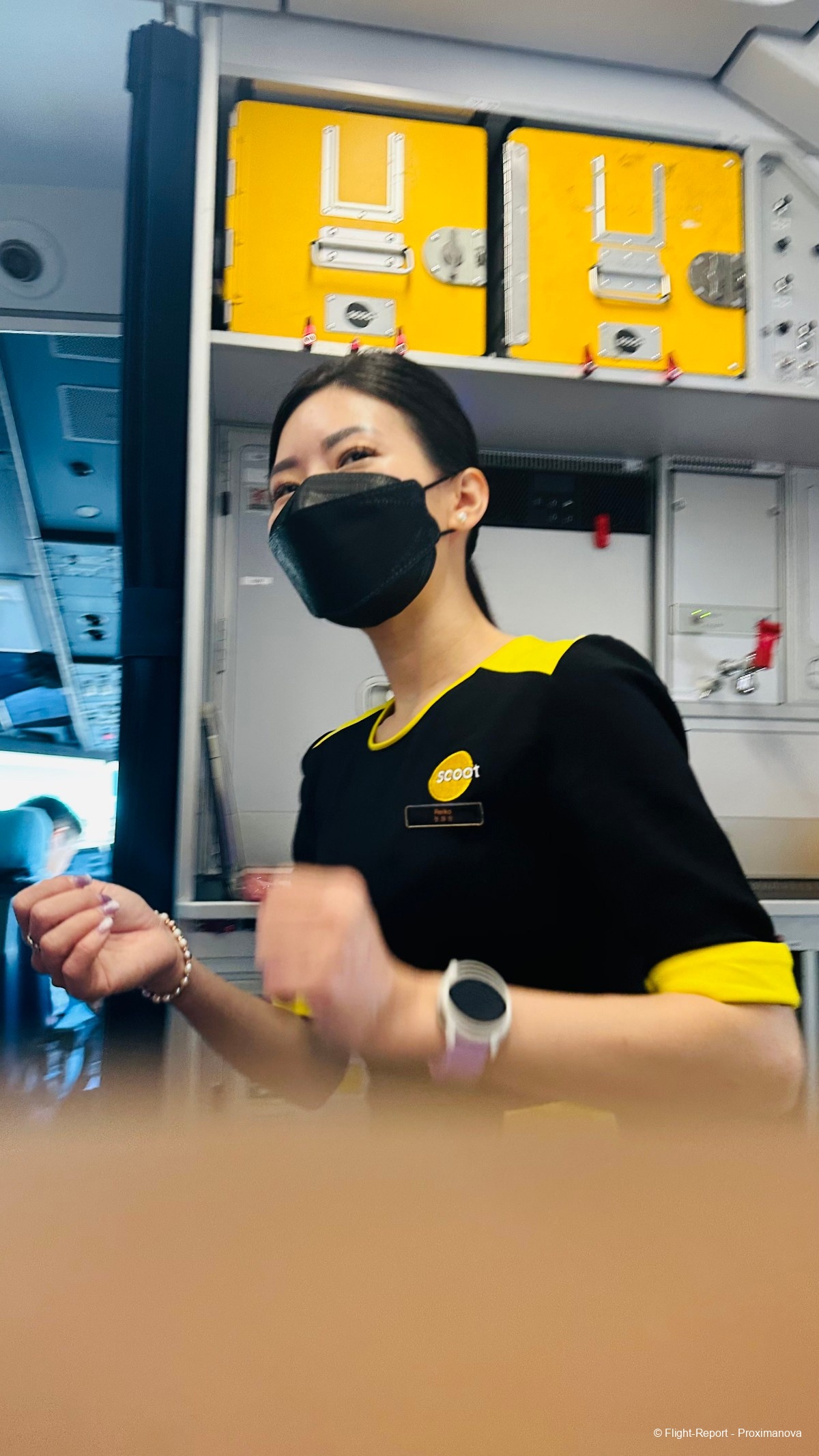
However, the only picture I did manage to take of the passengers settling in (without being obnoxious about it) happened to have this bespectacled young woman with a folder in her hand. There being nothing much else from what I took in the aft of the cabin, this is all I could upload, along with a generous blurring of faces.
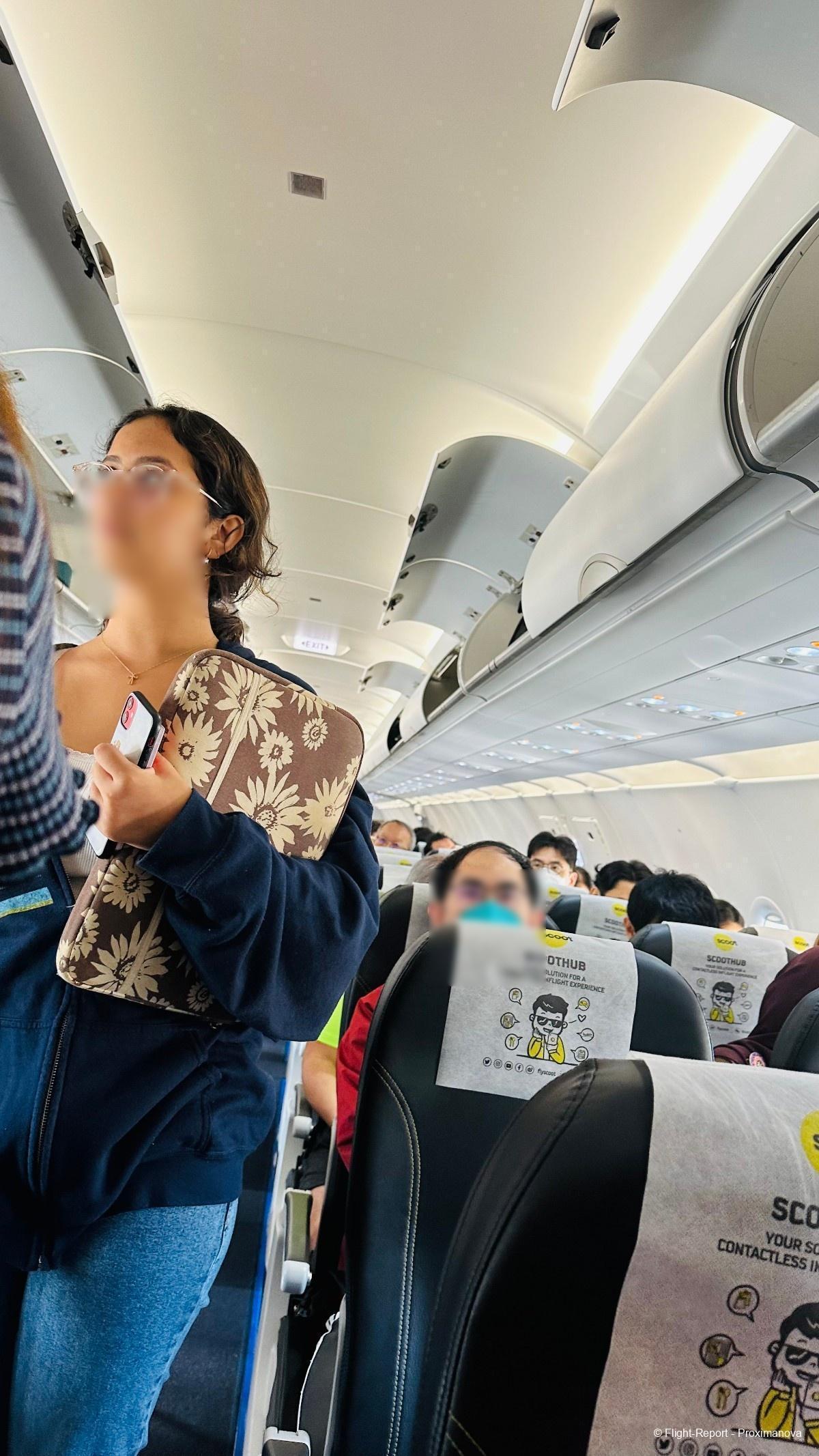
Another face-blurring exercise below as I settled into 36F at the back of the A321neo in a right-hand window seat, something I’d shelled out a not-insignificant S$28 for, for the sake of at least getting a good view out the window on a clear summer’s day. Perhaps the only soothing thing today was that — instead of the jarring, bubble-gummy pop music you might expect from this don’t-care hipster-kid of an airline — it was actually playing soft piano symphony music, something you might better associate with its elegant and refined parent, which has a beautiful selection on Spotify.
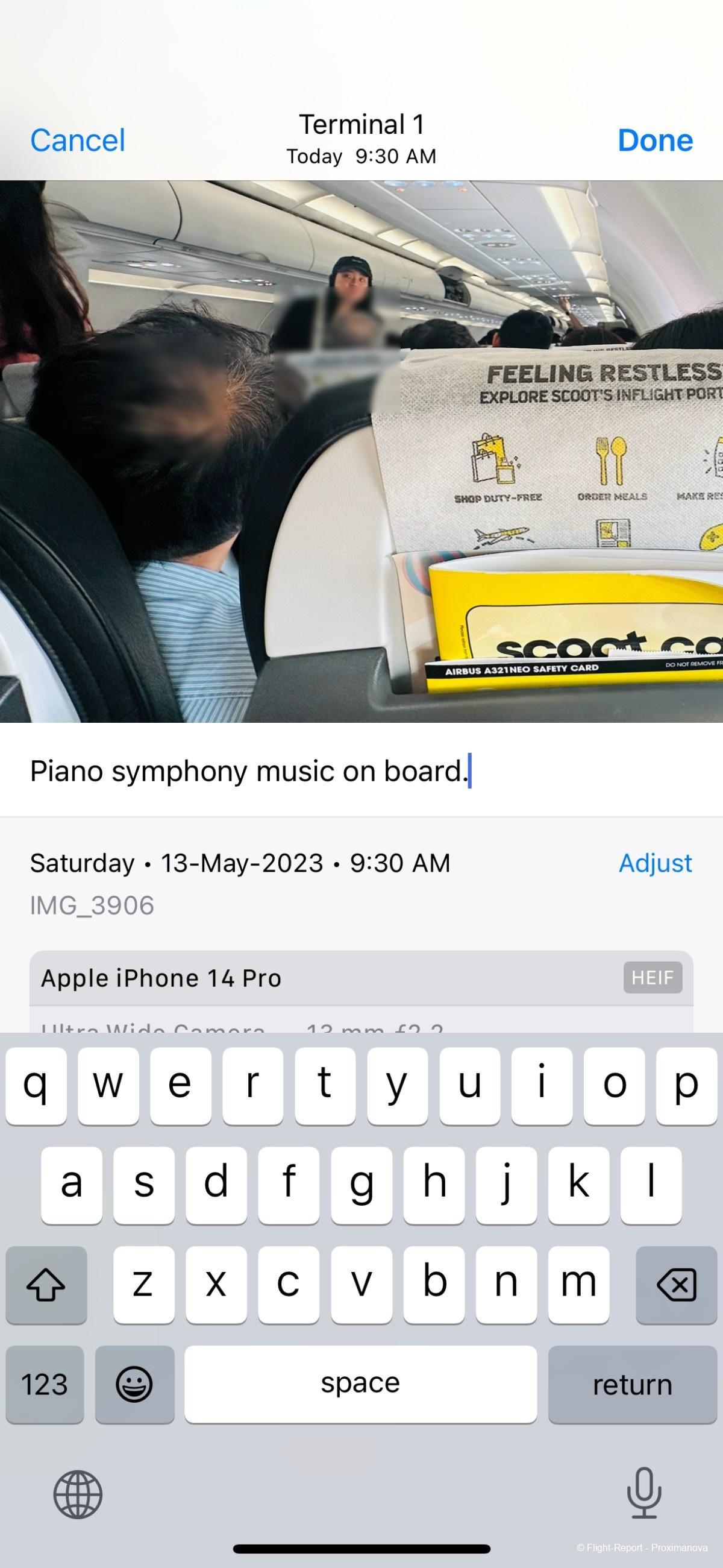
Another thing I’d paid extra for, which only helped to increase the fare to some S$150, was this shoestring bag (S$15) containing a bunch of snacks and a totally-apt-for-Scoot quote on it: ‘Fly, eat, sleep, repeat’. What a tremendous irony then that the only other airline I know to have such cheesy quotes, slapping them on its plush pillows, lays claim to the world’s best business-class product. In fact, A7-AMJ was standing right next door, with things like ‘Love, work, travel, repeat’ and ‘T?day is a good day’ adorning — or, rather, ruining — the stellar ambience of its otherwise infallible Qsuite.
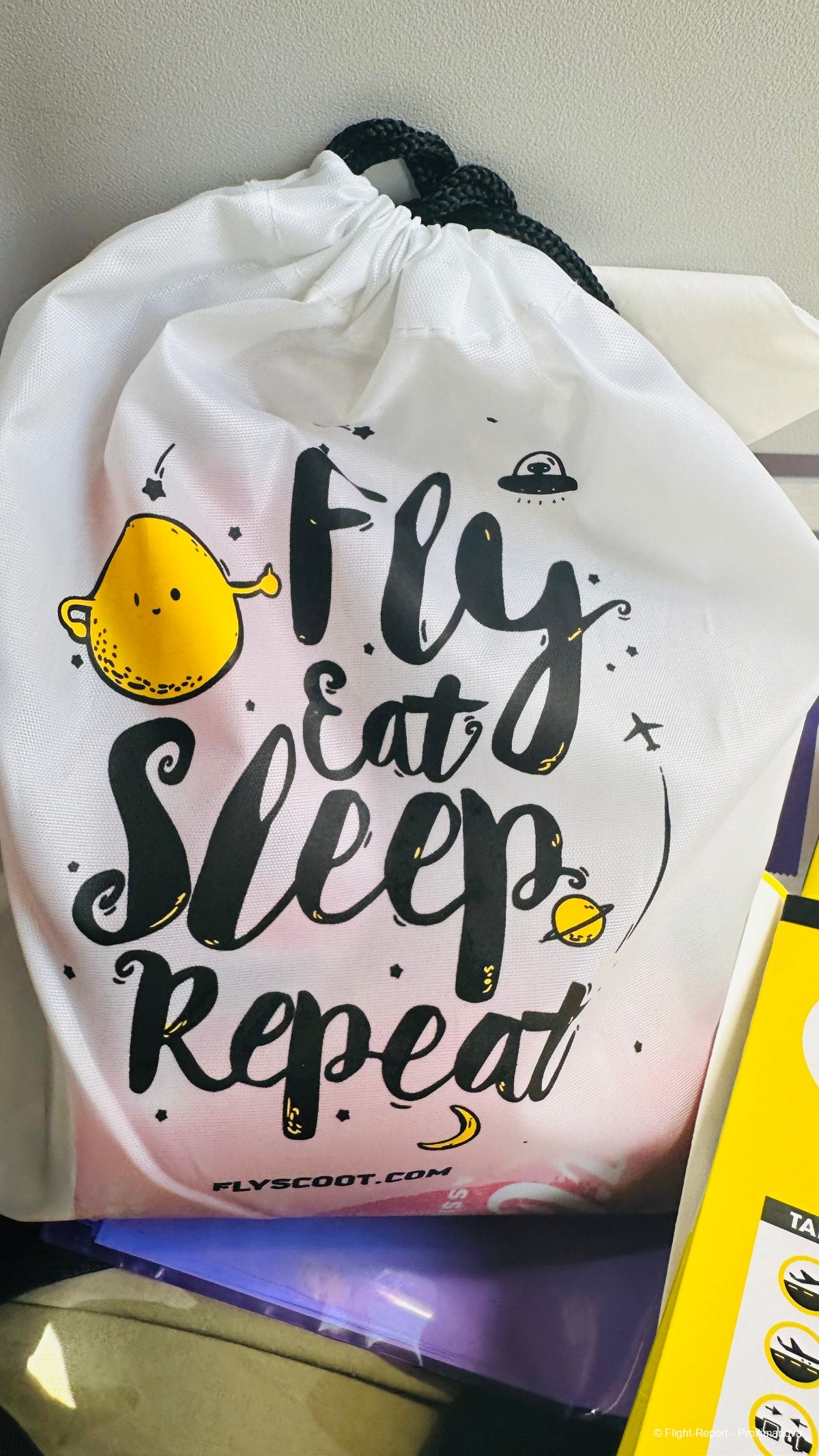
This was the safety card, which had only one line-drawn caricature on the front page, but many more inside.
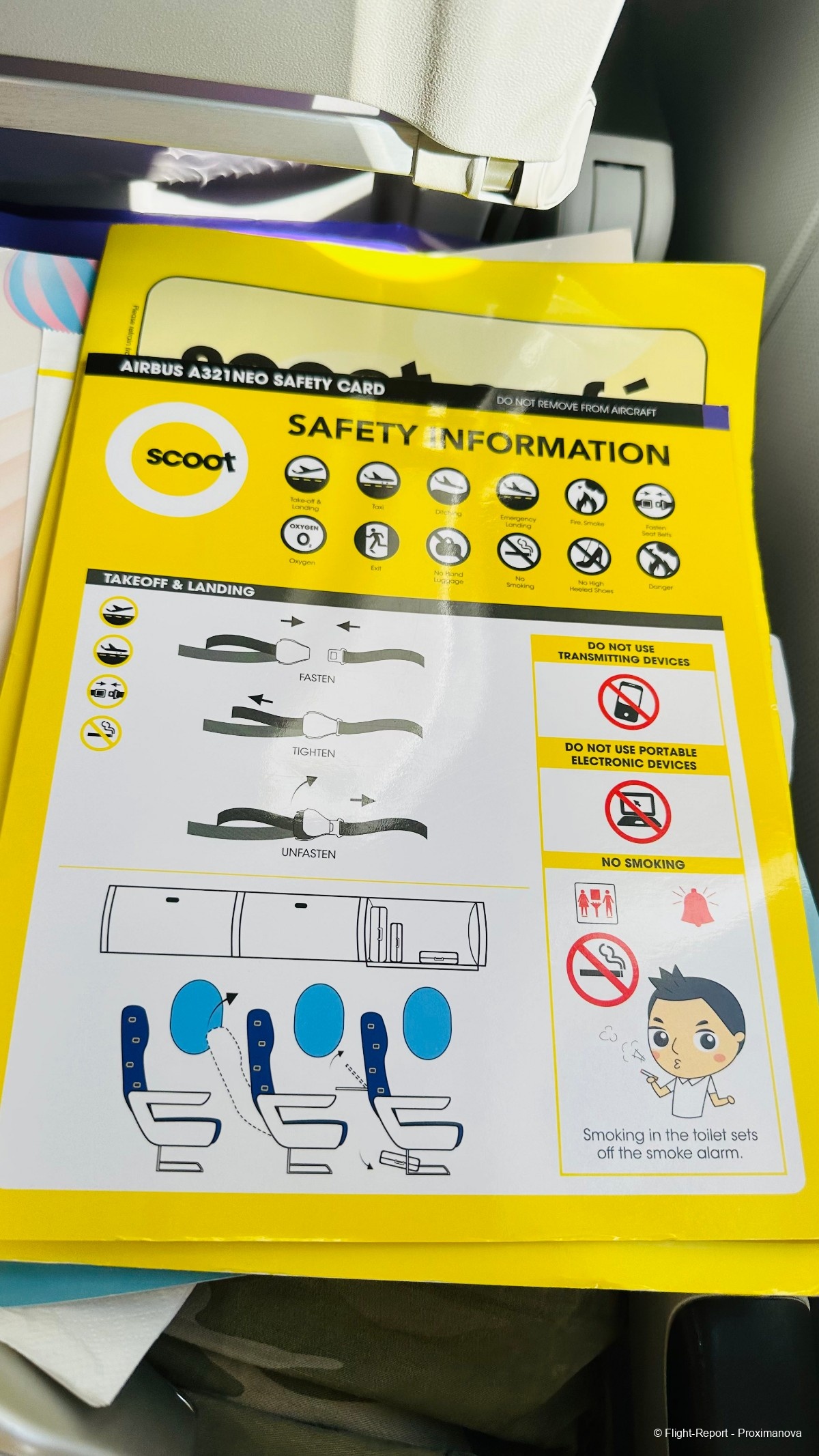
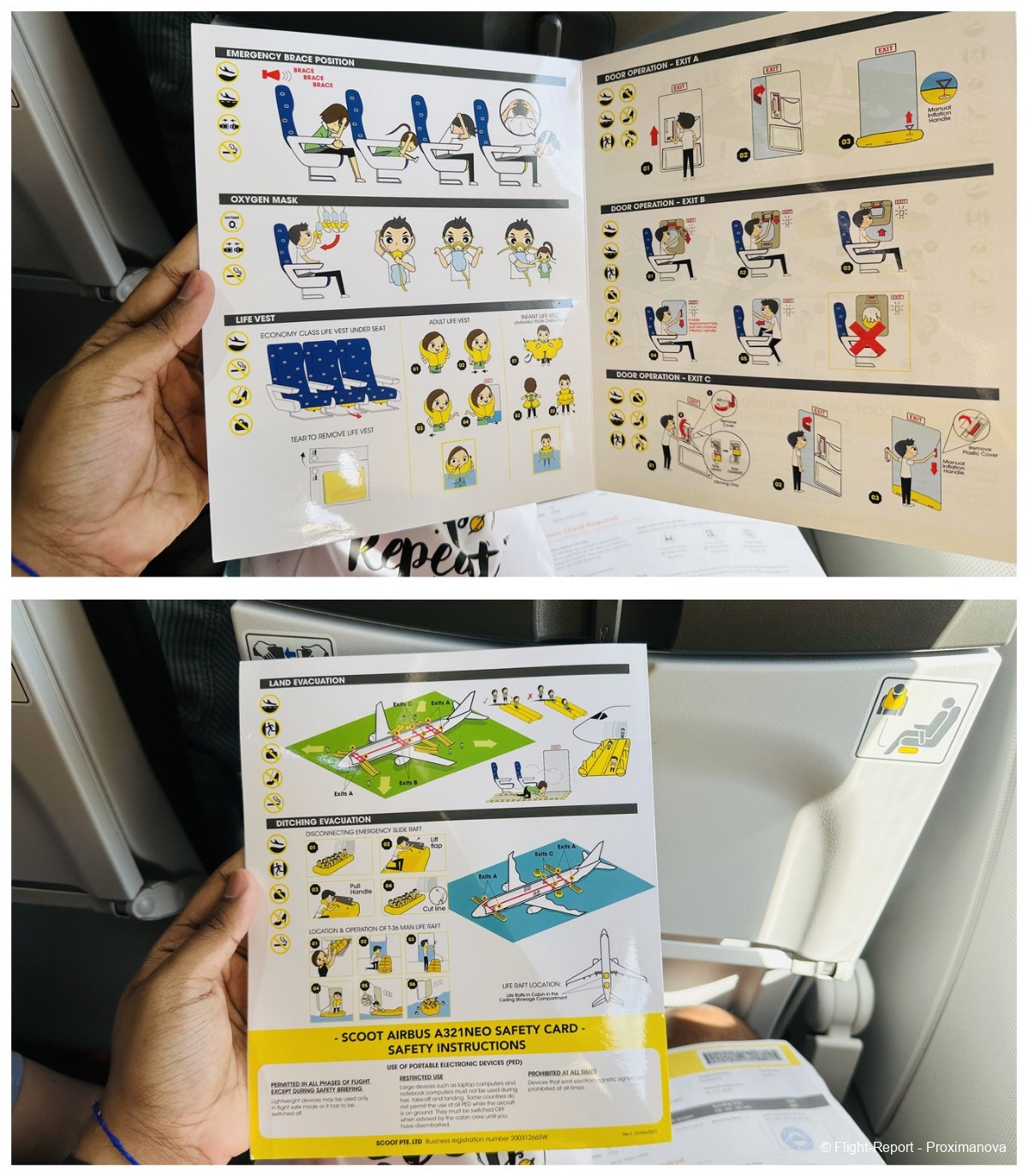
As for the buy-on-board menu, these were the items for purchase, which cost some 50% more than they would on the ground, and far more than on AirAsia. Unlike on AK, where the cost to add a meal during the booking process is very little indeed, on TR it is actually more expensive to buy online than on board. Isn’t my strong dislike for Scoot getting more obvious every second?

On the back cover was a layered cake that was being offered as a Ramadan (ahem, Hari Raya) special, but even this cost a hefty S$15. Oh, the nickel-and-diming that this airline will put you through, charging almost-SQ-level pricing with greatly reduced satisfaction levels. No, my happiness wasn’t going to increase manifold!
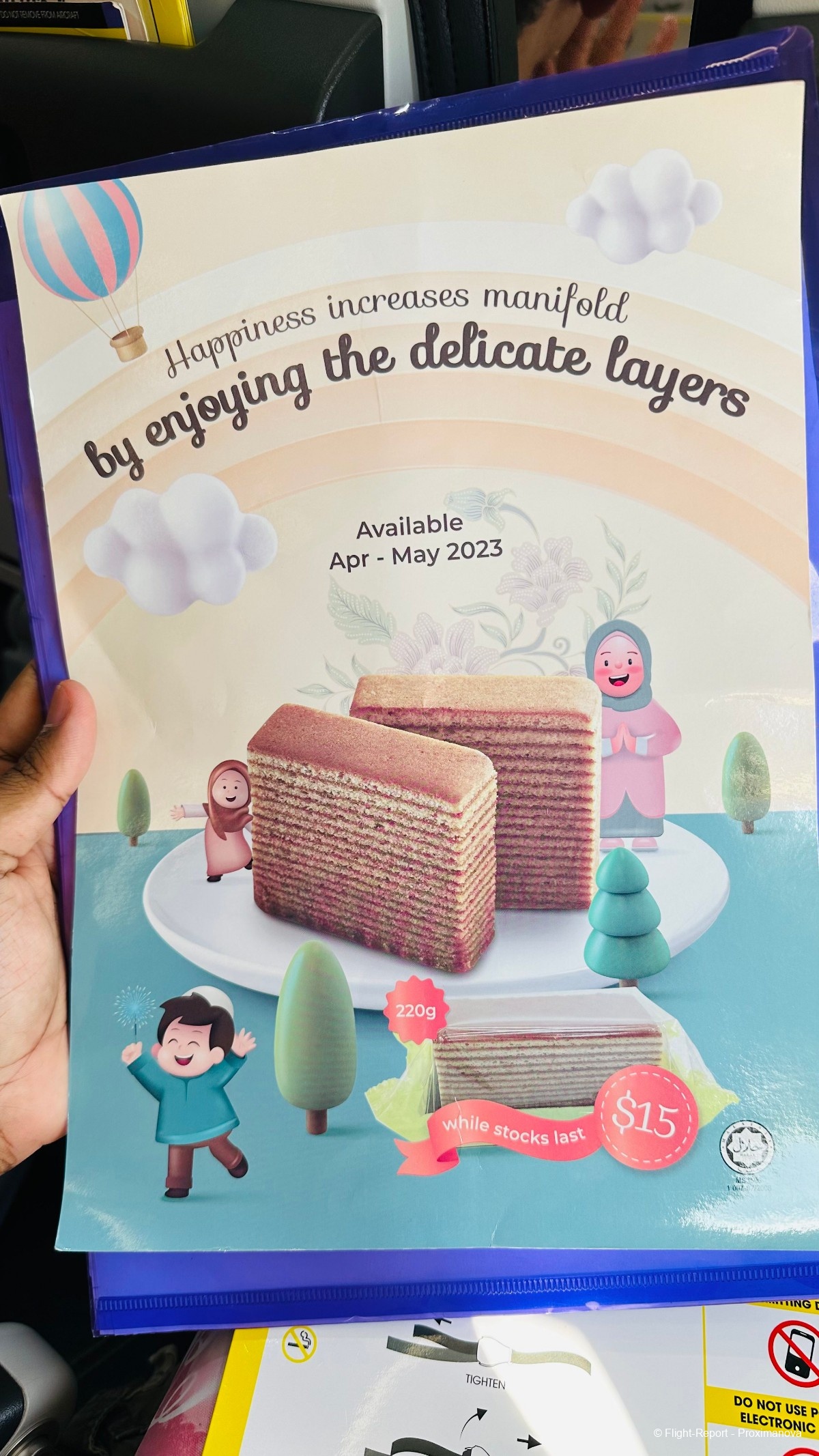
Planes on the ground at 9-Ville
There will be quite a few pictures of the traffic on the ground — including one that is VH (Very Hard) to get — which is admittedly useful only for diehard avgeeks. You are free to skip to the post-takeoff section if you so please.
I was now going to take off from 9-Ville — where most plane registrations begin with 9 — and a large number of such nines passed me by in the late-morning rush, among them SQ527, a 6x-weekly (except Tuesday) flight from my former Indian home city of Chennai. Since March 2023 SQ526/527 has been operated by the A350 Regional, in this case 9V-SHQ, whereas until then it was operated by the 787-10 — as had been the case when I took it in October 2022.
Meanwhile the daily SQ528/529 flight was originally operated by the 787-10, but in March it too changed to the smaller-capacity A350, only to revert to the 787-10 in June. This means that Chennai is Singapore Airlines’ only destination to receive the A350, 787 AND 737 MAX (the last is used on the 4x-weekly morning SQ524/525 flight)!
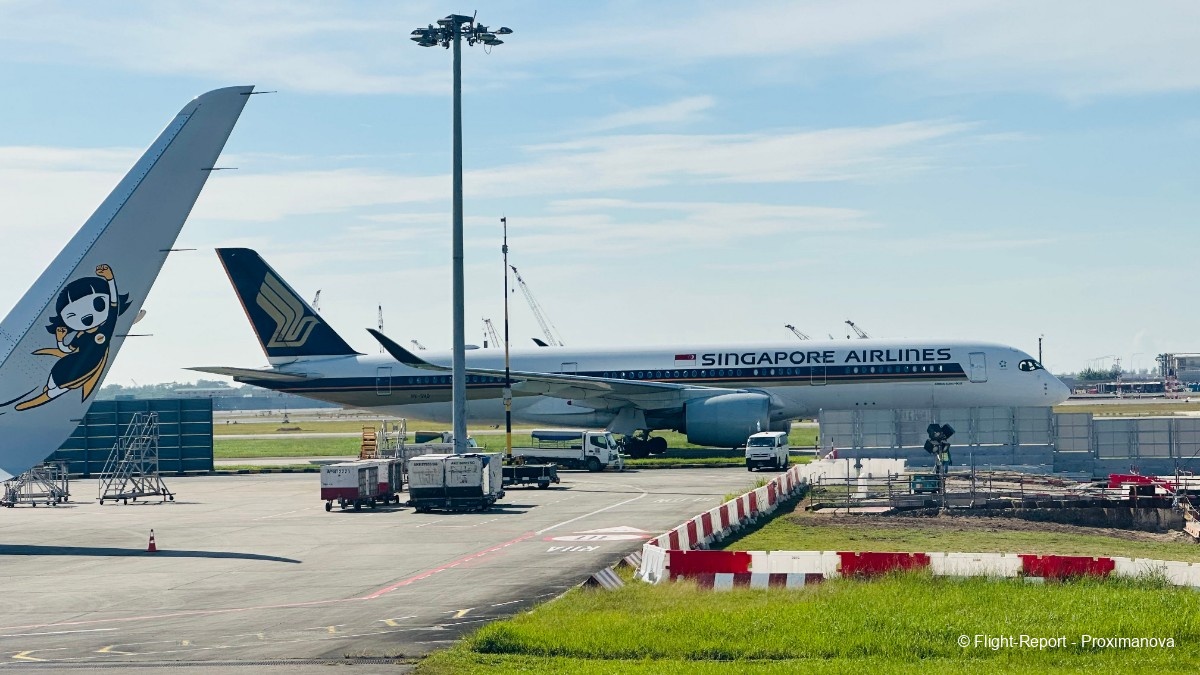

We passed by more widebodies, especially 787s, of not only SQ and Scoot but also All Nippon Airways (JA883A, NH843).
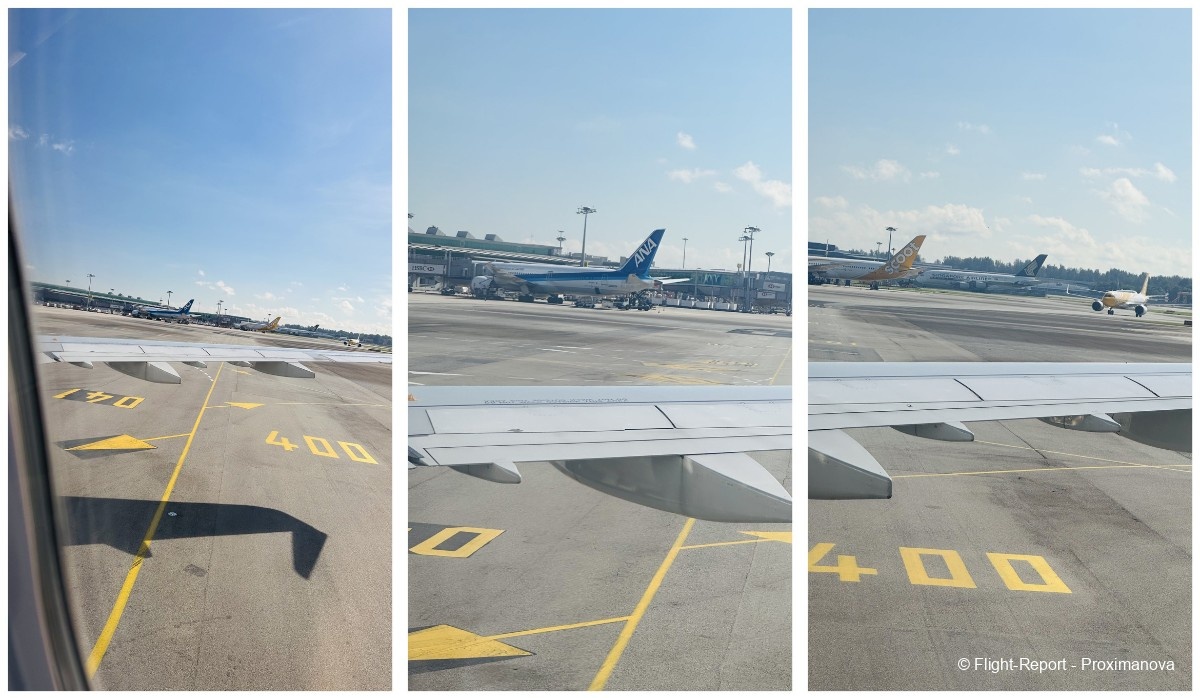
Before us was 9V-SGG, the seventh and last A350-900ULR ever built, alongside 9V-OFH ‘Scooti-mite’. Here are those two from both right and left angles.


But the next aircraft I saw left me slack-jawed in awe. What was this ‘VH’ (Very Hard to catch) Virgin Australia 737 doing here, in an era when Virgin-branded airlines no longer serve Singapore?! (You can kindly disregard the Powerpuff-Girls-esque black woman with a pirate patch on her eye dancing against the grey winglet.)
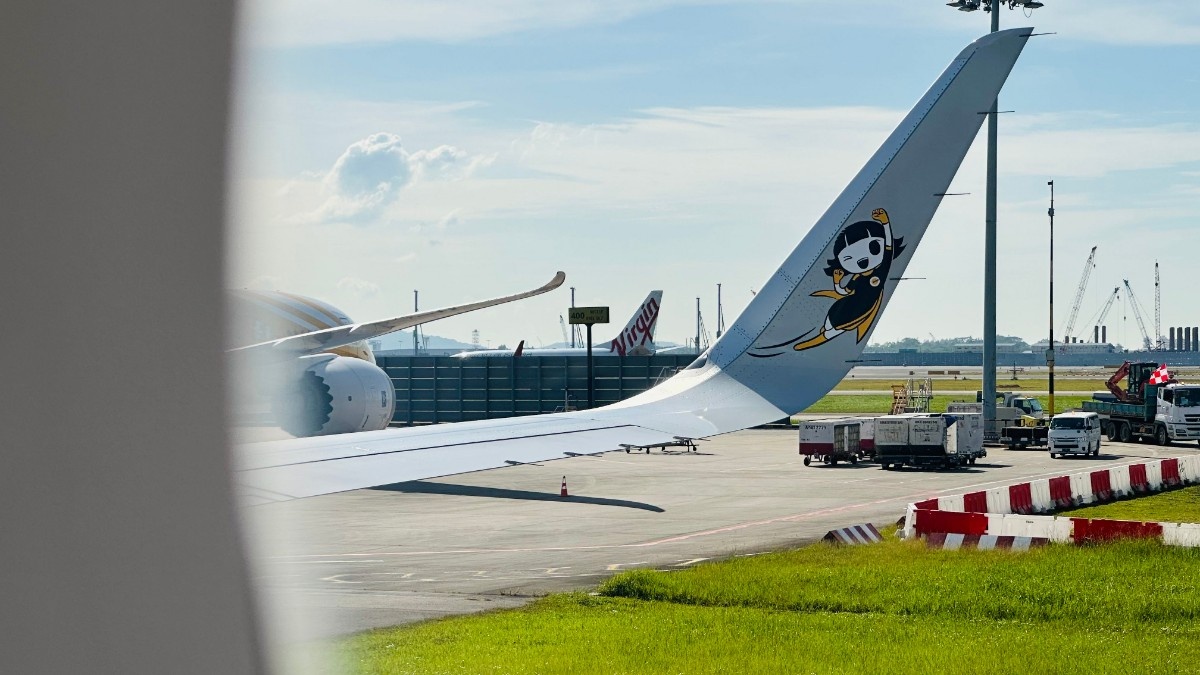
Turns out this was VH-VBZ, one of the airline’s original 737-700s, though it recently took delivery of seven ex-KLM specimens in the VH-N** series.
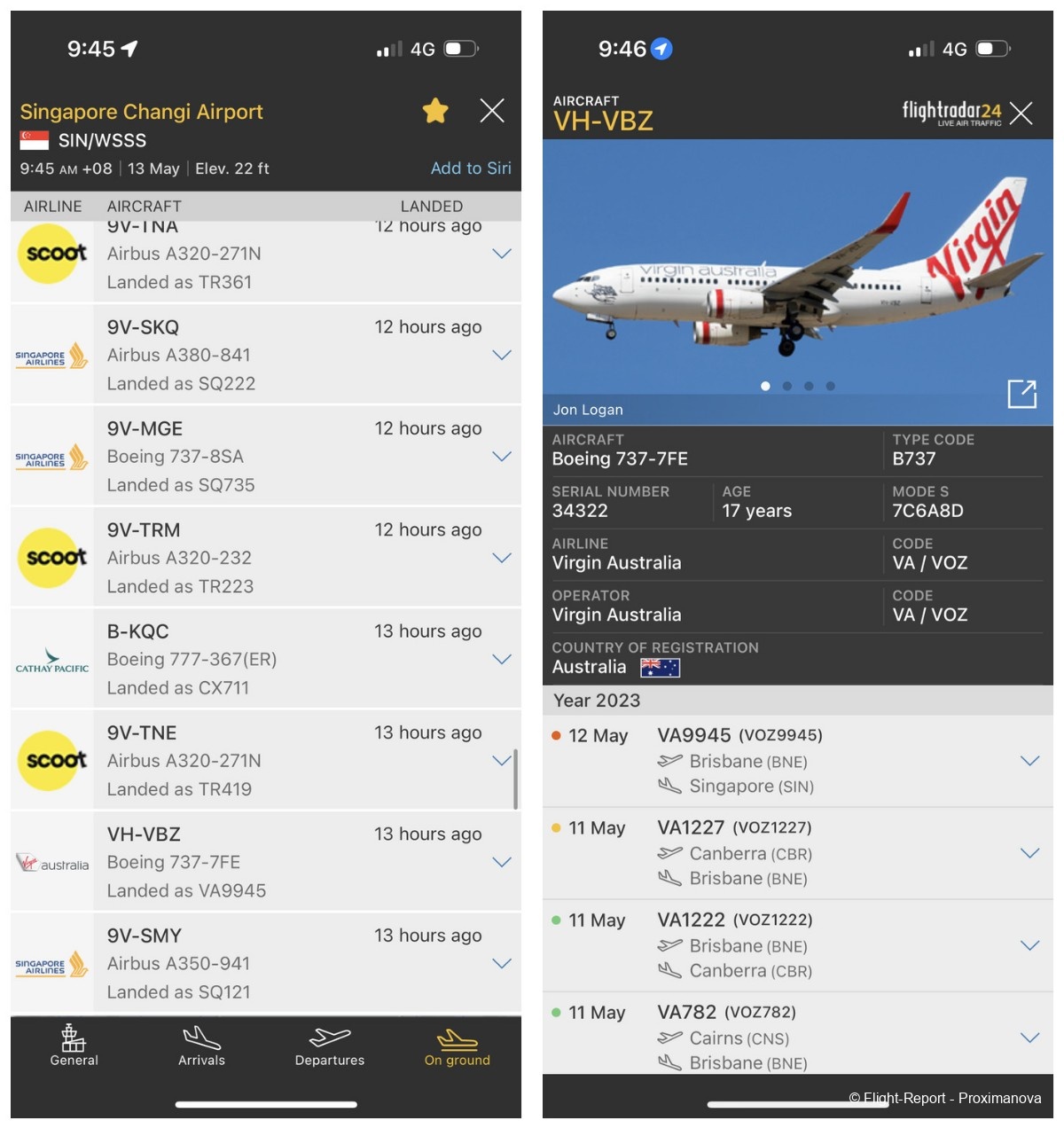
Next came 9V-TND, an A320neo with a non-English name like ours: すこいね! (su koi ne!), which apparently means Awesome! in Japanese. Awesome this airline is not. Not when it pushes its ‘cool’ and ‘sass’ down your throat.

Two other SQ A350s rose into the distance, headed to capitals within the region, these being 9V-SHK as SQ910 to Manila and 9V-SMB as SQ956 to Jakarta. Not only were these planes taking off from 9-Ville, but the flight numbers began with 9 as well.
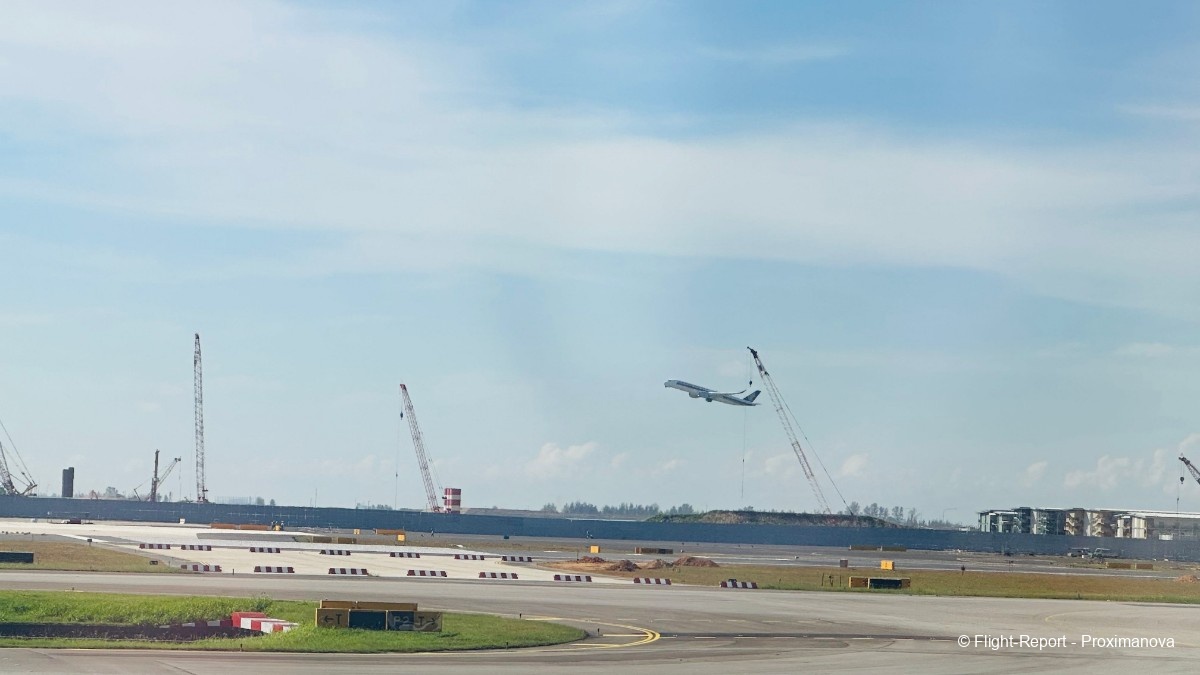
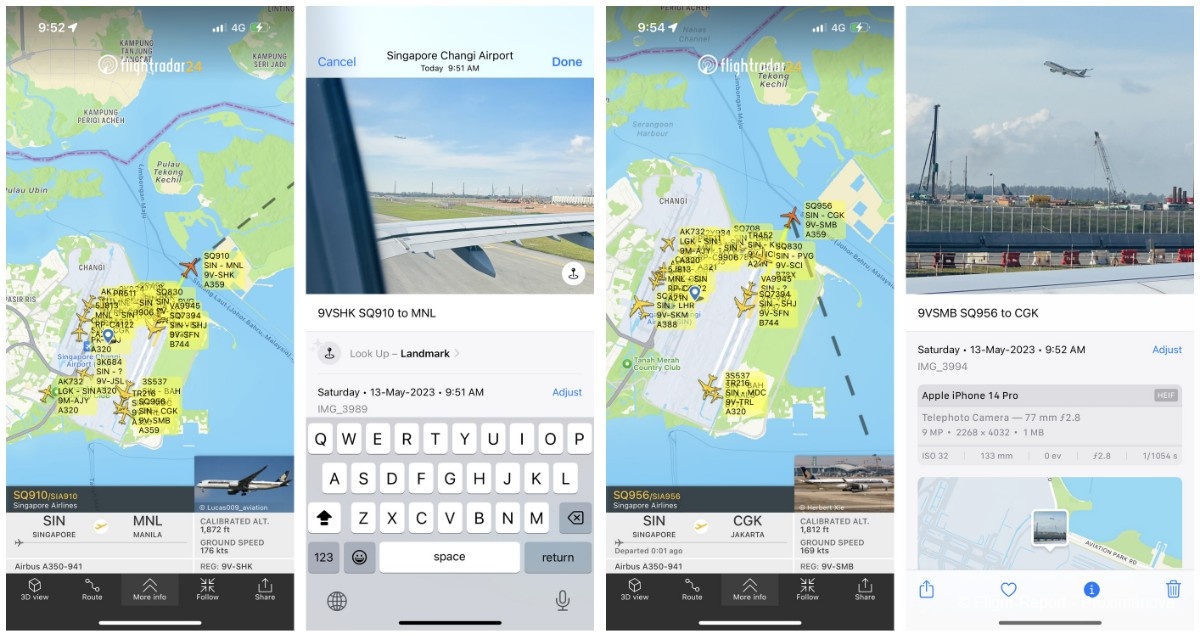
Another flight from Indonesia had just arrived, an all-white A320 this time: PK-AZQ on the morning QZ502 service from Denpasar.
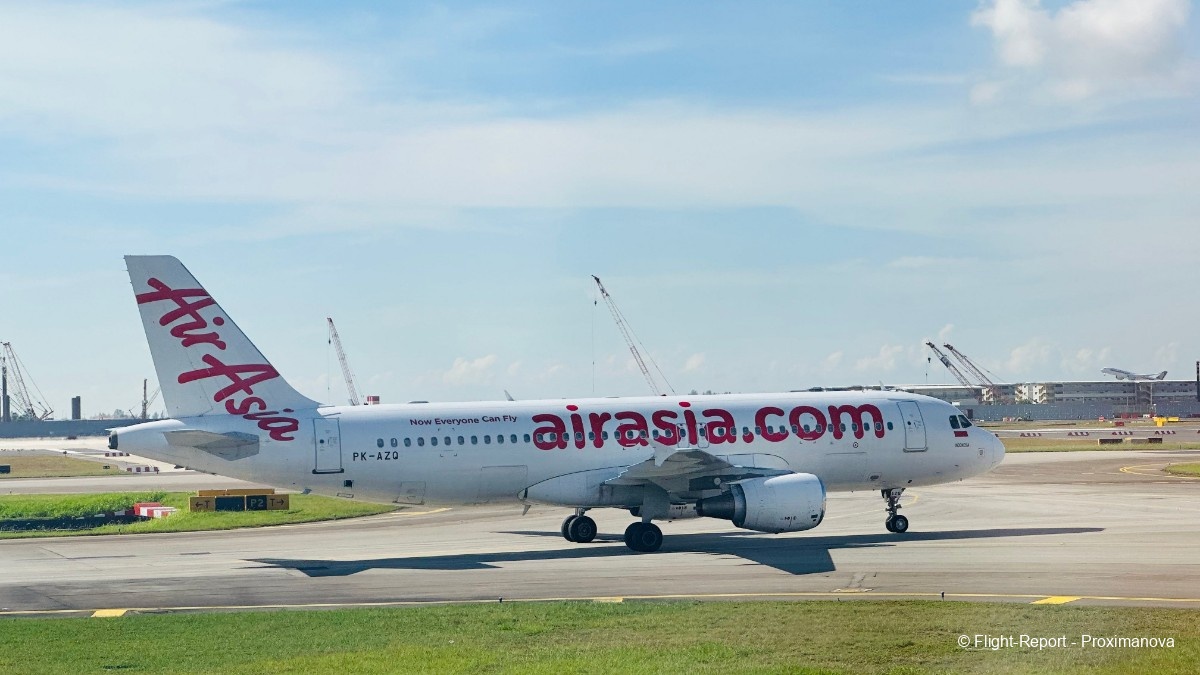
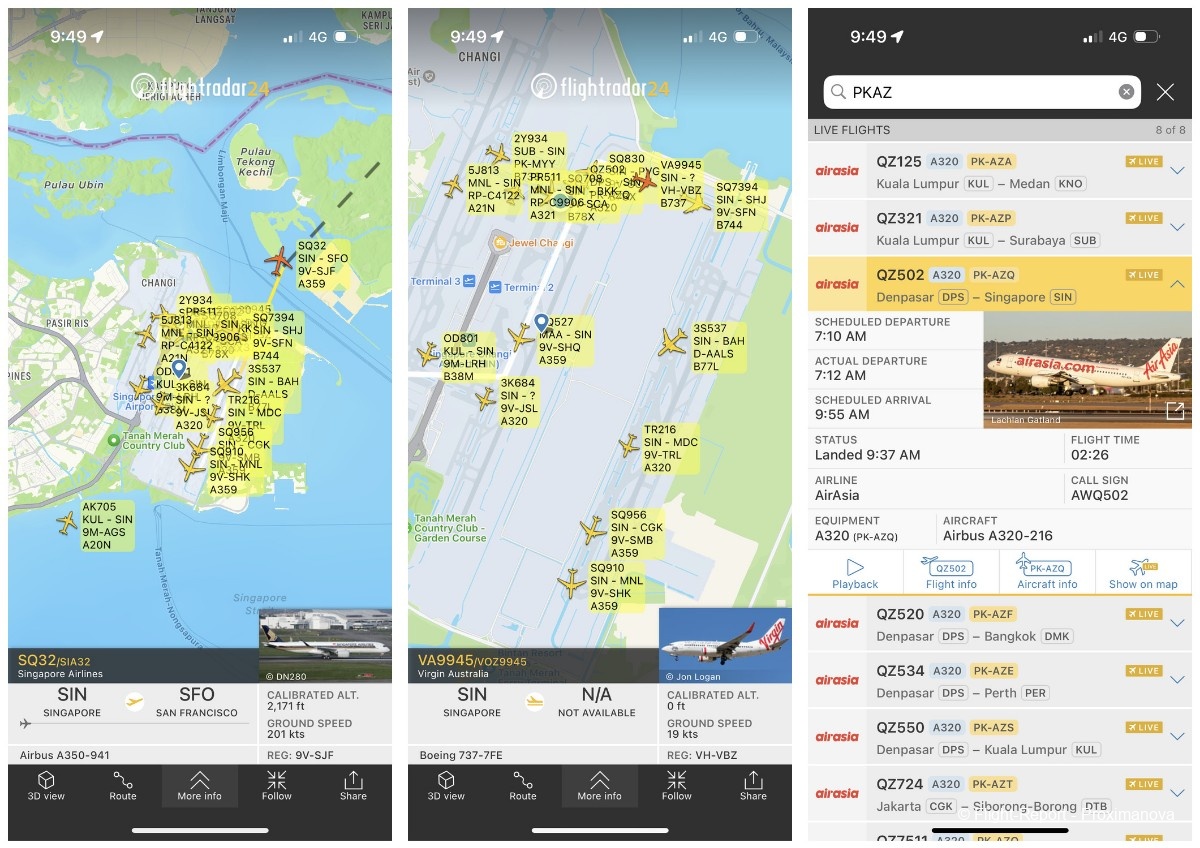
Some more flights to/from both Indonesia and the Philippines, along with a 787 headed for Shanghai with almost the same registration as ours — 9V-SCI vis-à-vis 9V-NCI — and my umpteenth time seeing 9V-SKM headed to Heathrow, this time though being in vain.
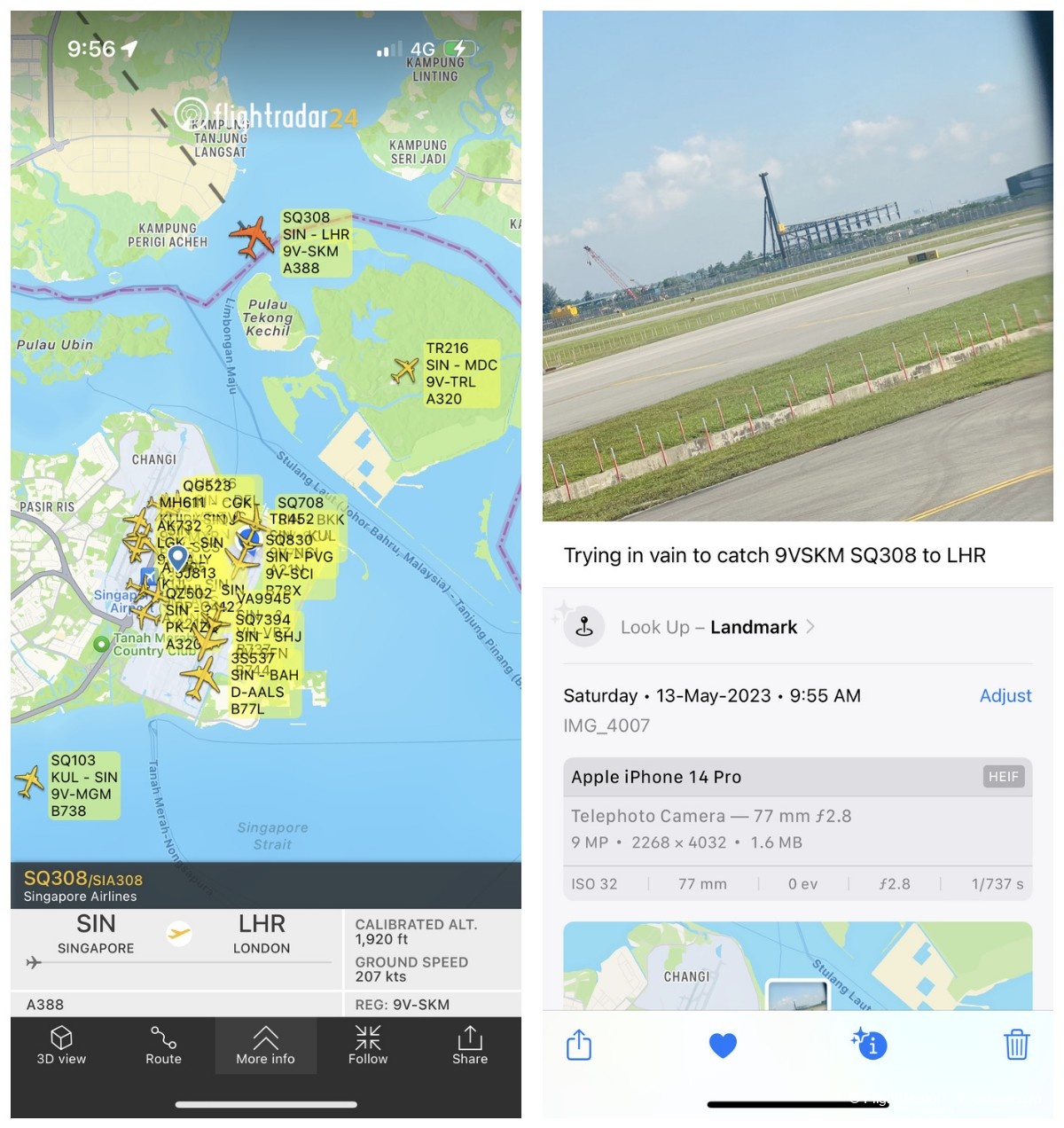
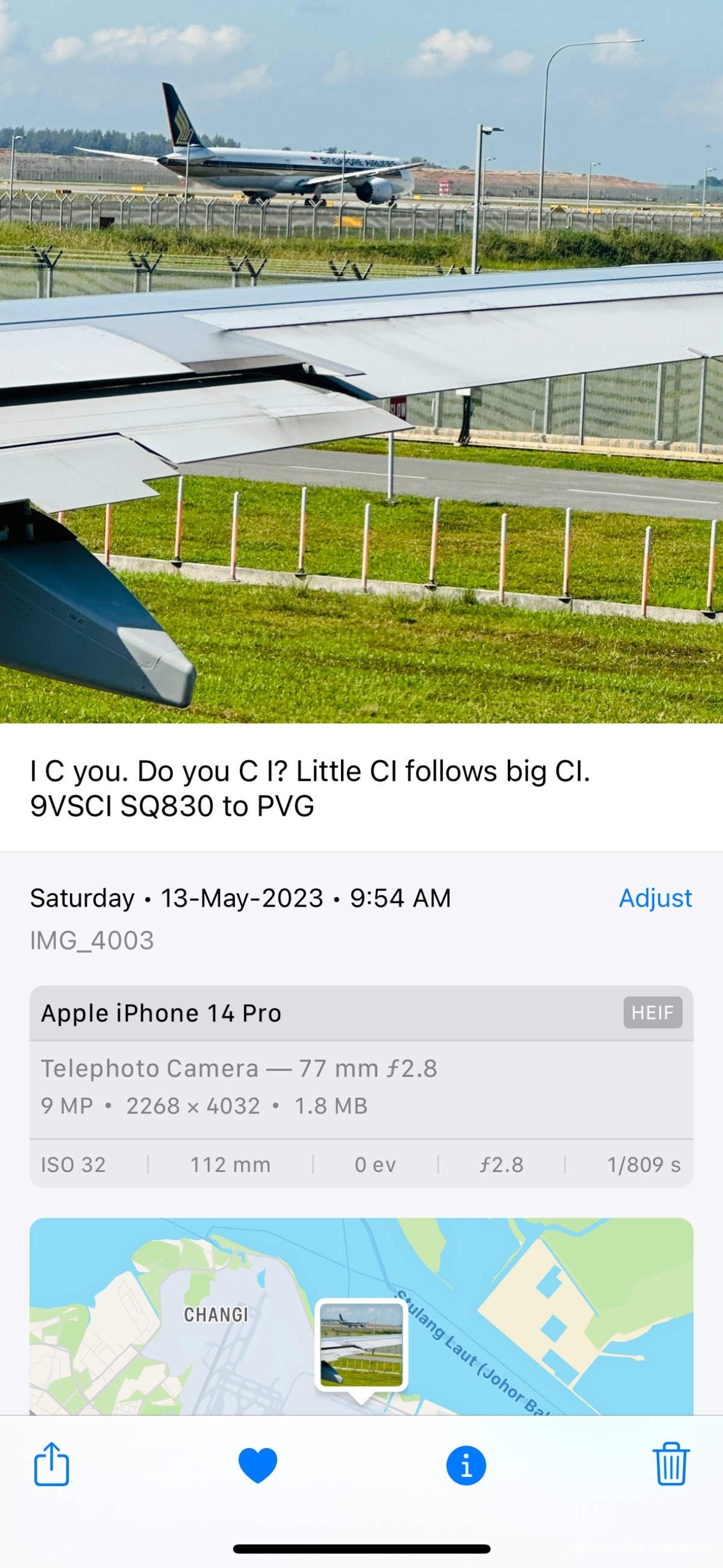
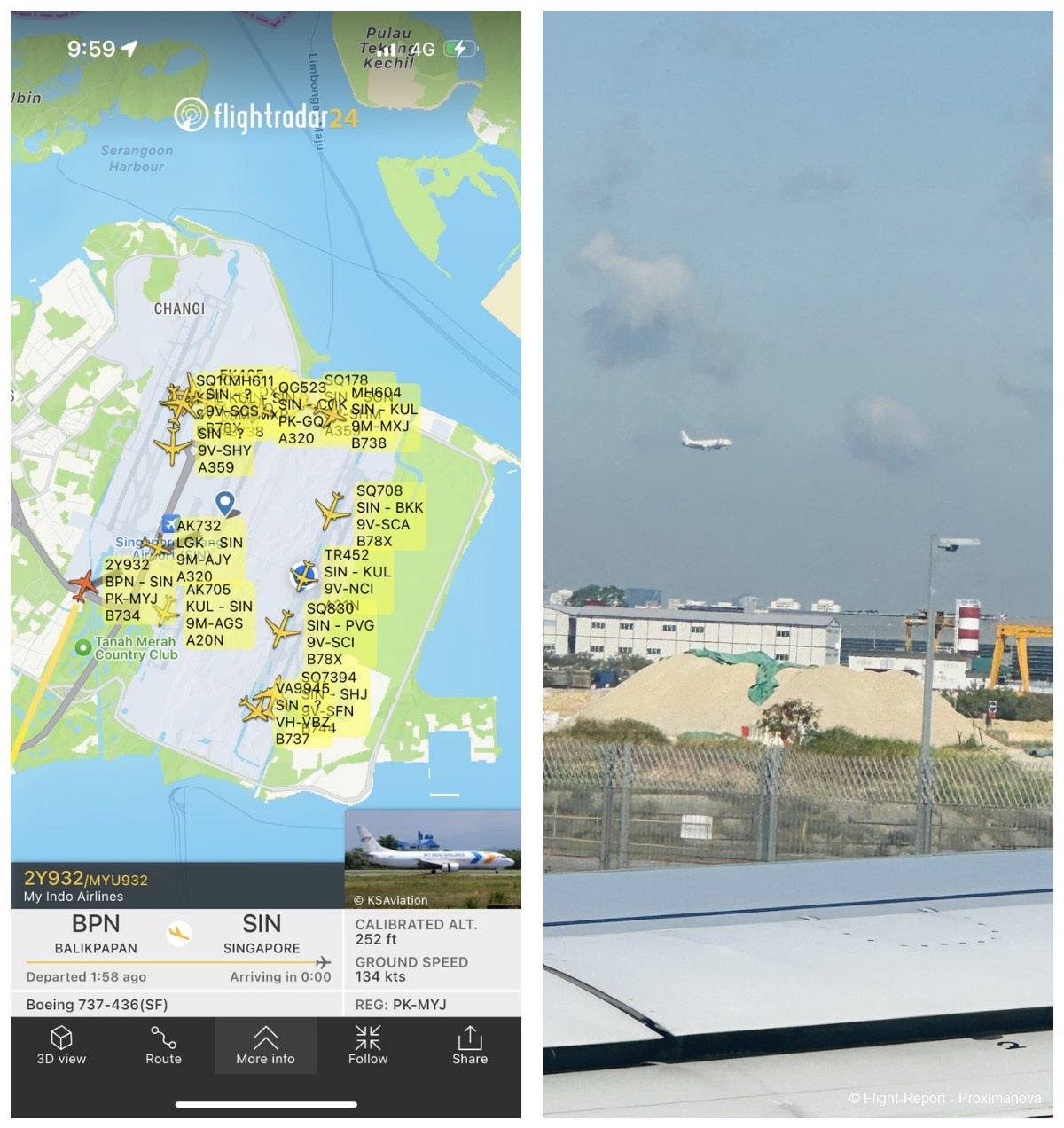
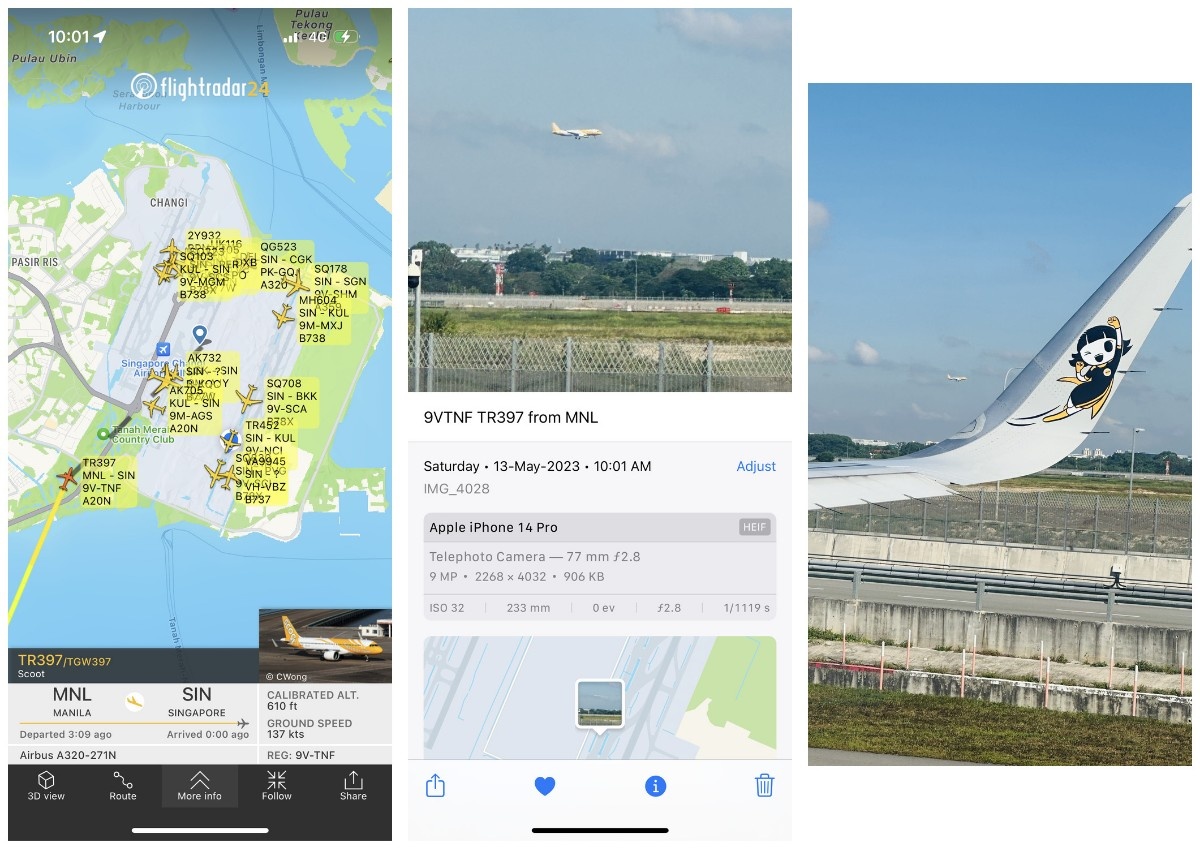
Finally, a pair of Northeast Asian 777s stood in the distance at Terminal 4: the pretty dark green of Cathay Pacific alongside the puke-inducing faded light blue of Korean Air, which in case it isn’t clear is one of my least favourite liveries of all time.
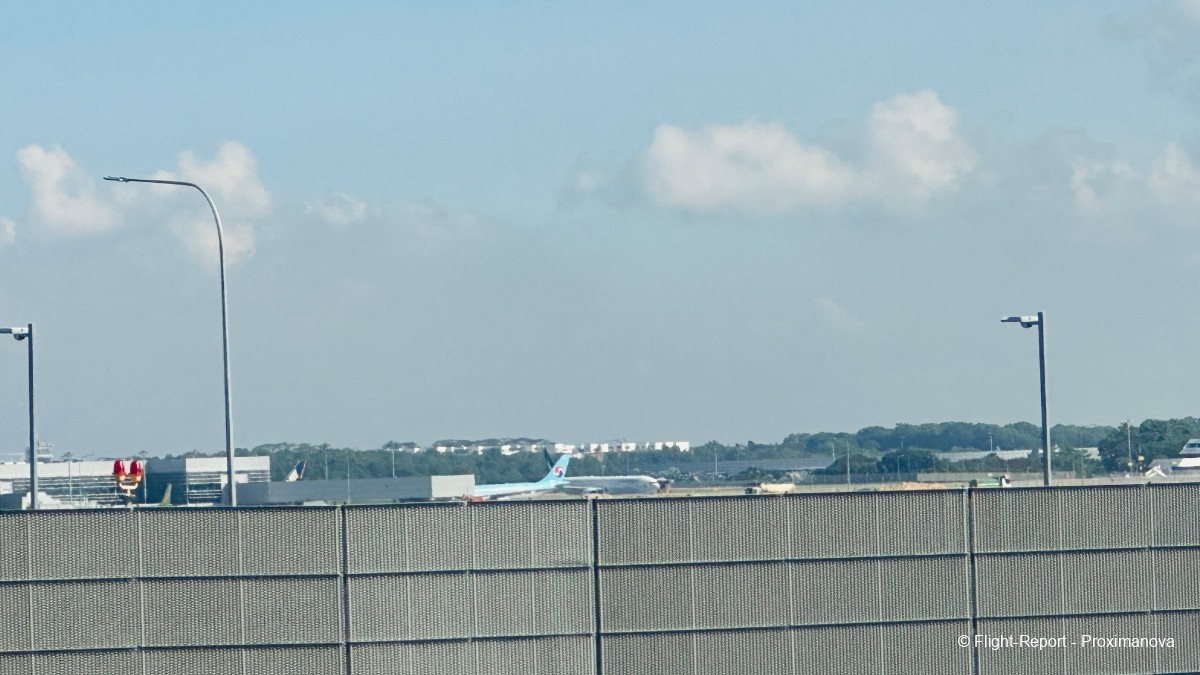
At around ten, with the manual safety demonstration performed, the A321neo turned right and set off over the seas and ships of Singapore.
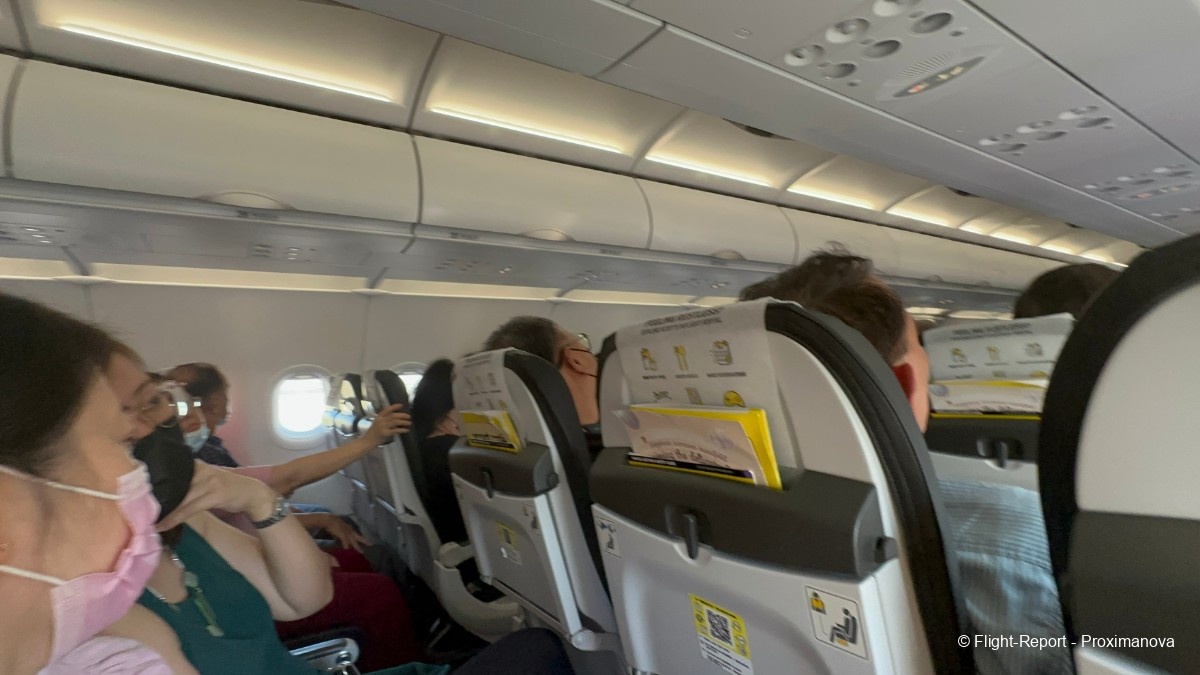
That grey winglet, with a young black-and-yellow woman dancing with gay abandon, was the only thing spoiling an otherwise merry May morning as I soared over to the northern neighbour.
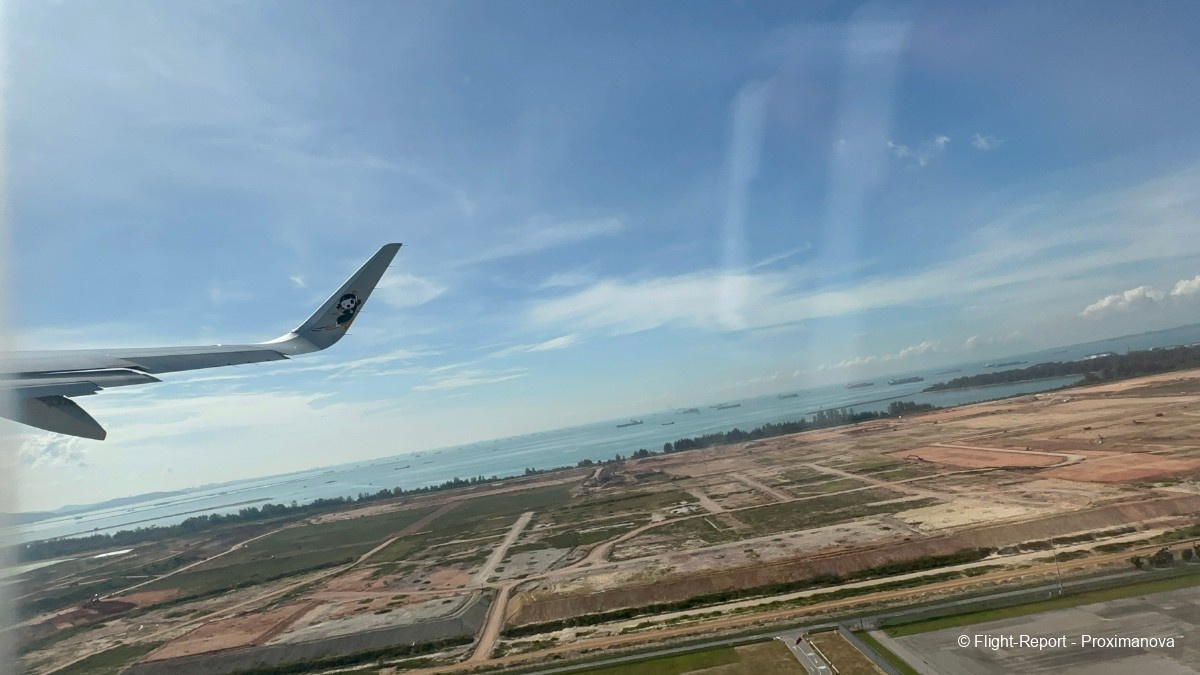
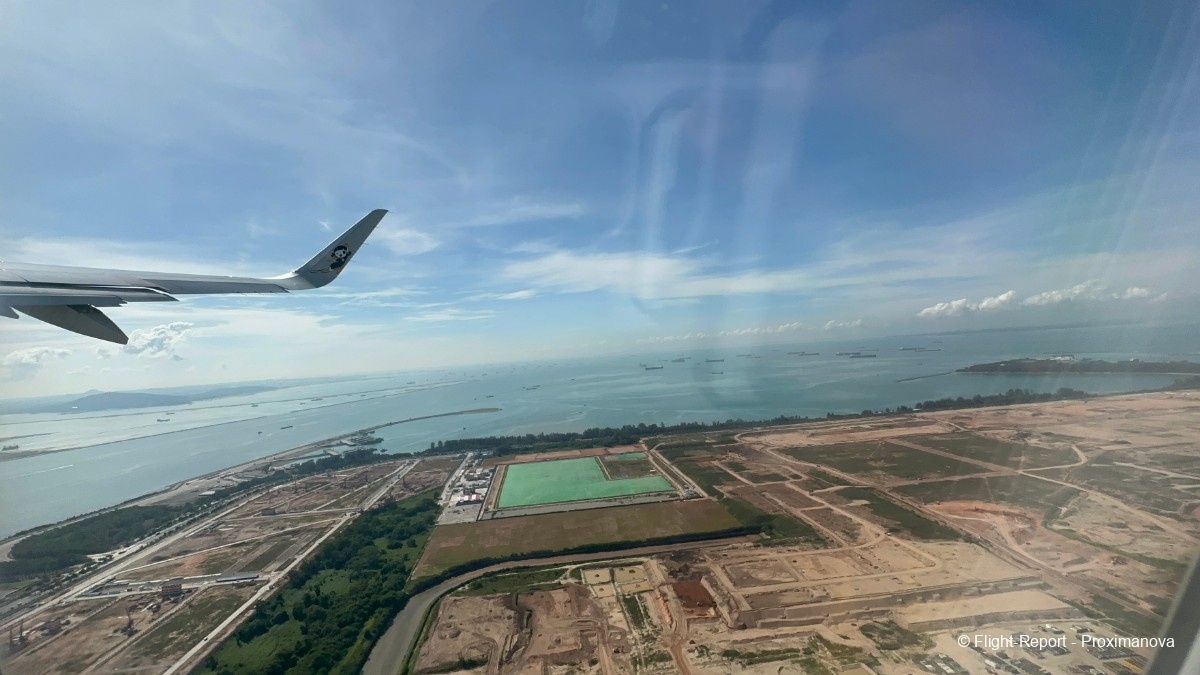
Snacks sans-service
Shortly after takeoff I opened the white shoestring bag, fully expecting to be disappointed once again with the offering, as with almost everything on Scoot. This was as much service as I’d receive from Joyce, even as she rolled out things for the other passengers.

The contents included a can of Coke Classic, a blueberry muffin, a cylinder of Pringles, a sachet of Milo and — most interestingly — a snack from Spain called Almendro Cubits, which I liked much better than the others. Collectively, these should not exceed more than S$10 when bought from a supermarket, and so to charge S$15 for the combo plus the bag felt somewhat too much.
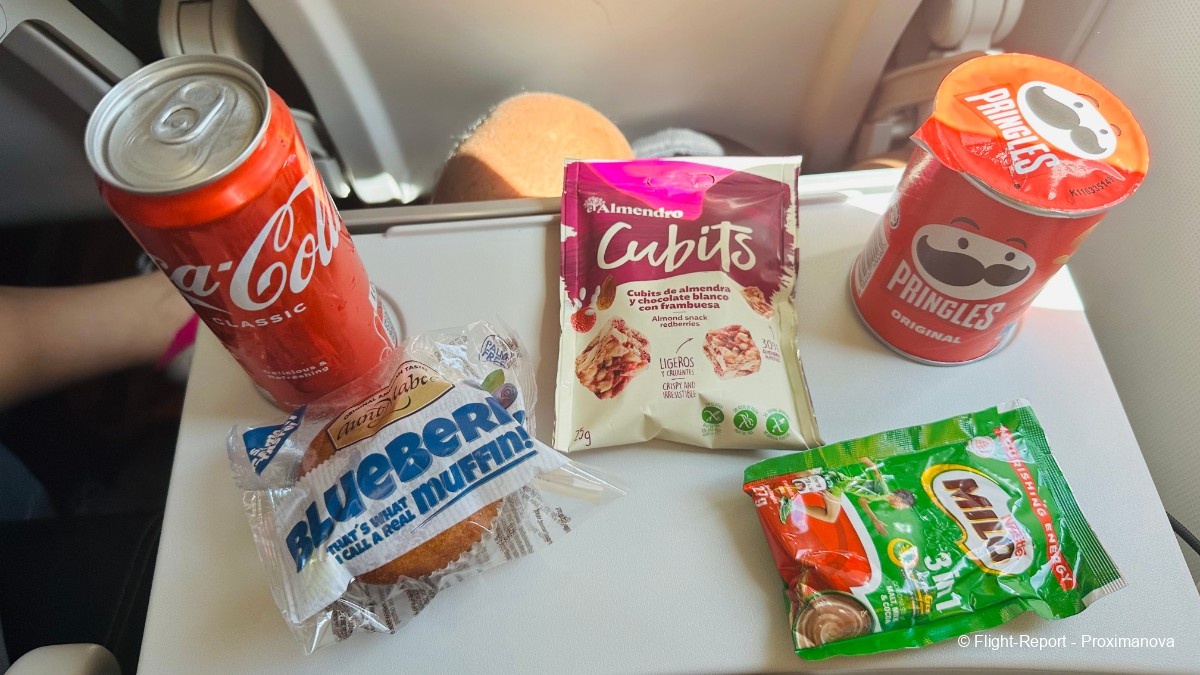
This was how the Cubits looked like, and they were as sweet as they were crunchy; I quite liked them. But would I spend S$15 in order to get them along with a bunch of other snacks? You have your answer.

In the limited flying time left, instead of my proper journal, I squeezed in whatever I could on half an A4 sheet of paper, on the reverse of my printed-out boarding pass. This I juxtaposed against the Asiana A350 brochure I’d got the previous day.
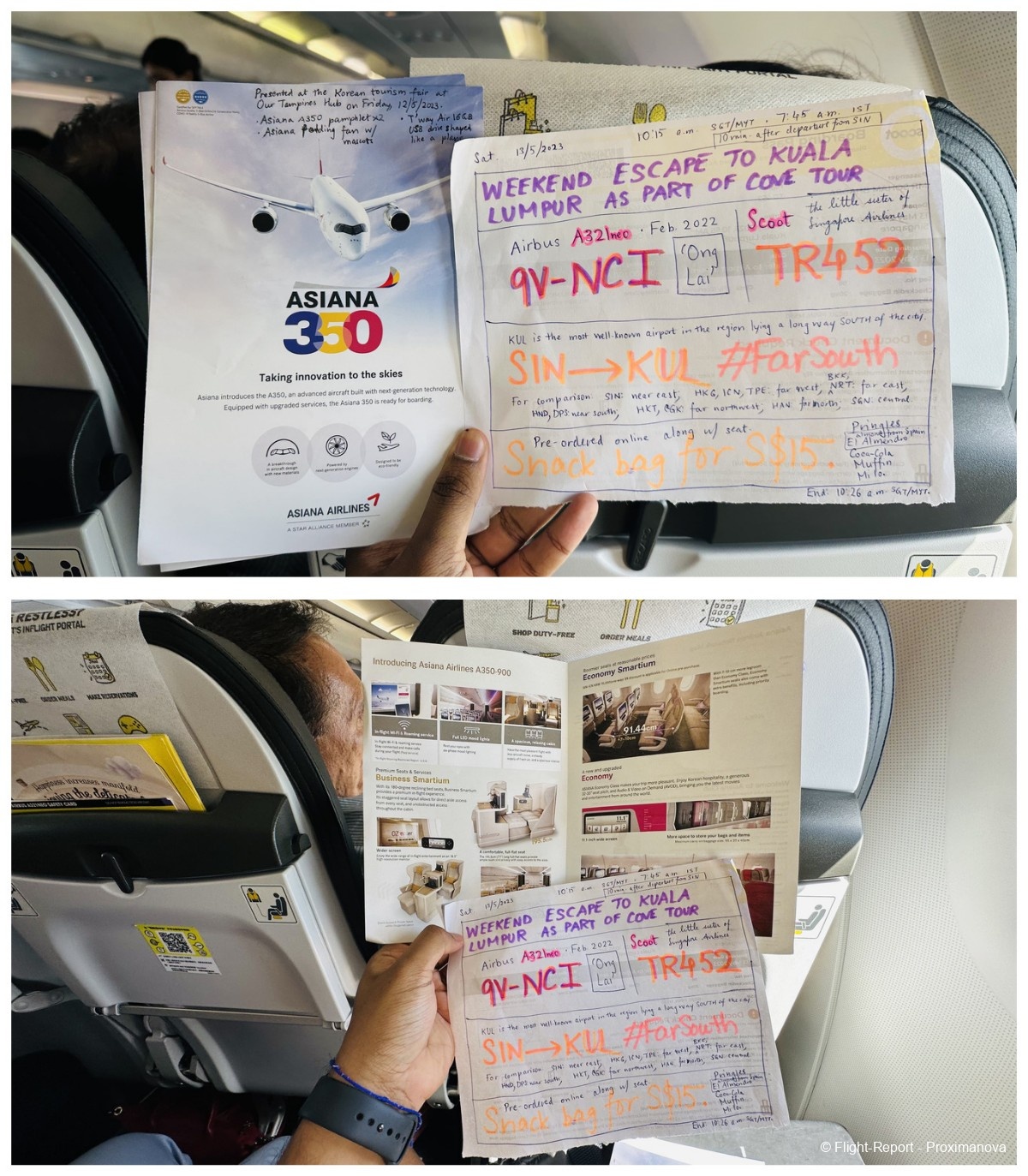
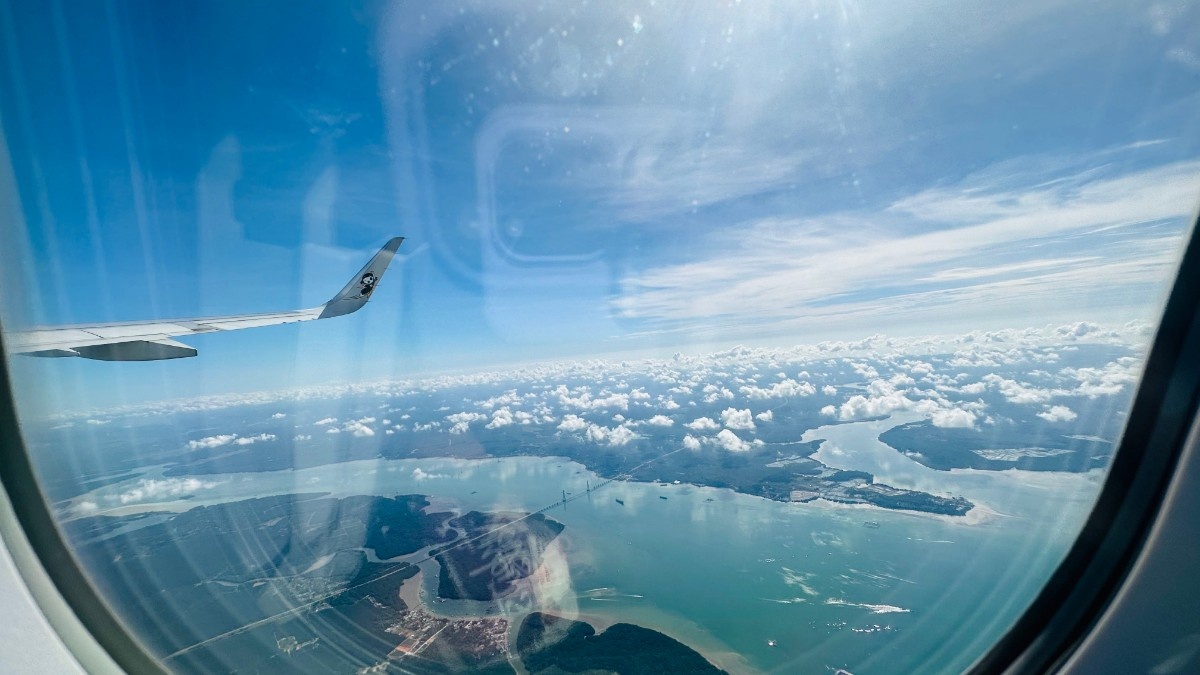
Pangs of Sepang again: Descent at KL
White plumes streaked out from behind the A321neo’s engines, as those behind me chattered about topics all and sundry — there being not many other ways to pass the time on a screenless and IFE-less plane. ‘Do you want to have contrails for breakfast?’, my caption read. (For the record, the ‘ScootHub’ service — which seemed to be designed expressly for contactless food ordering and limited games — refused to connect at all. I was anyway expecting no better: TR is no match for AK’s superb-for-an-LCC catering, Wi-Fi and inflight entertainment, and honestly I shouldn’t be flying any other LCC in ASEAN if I can help it.)
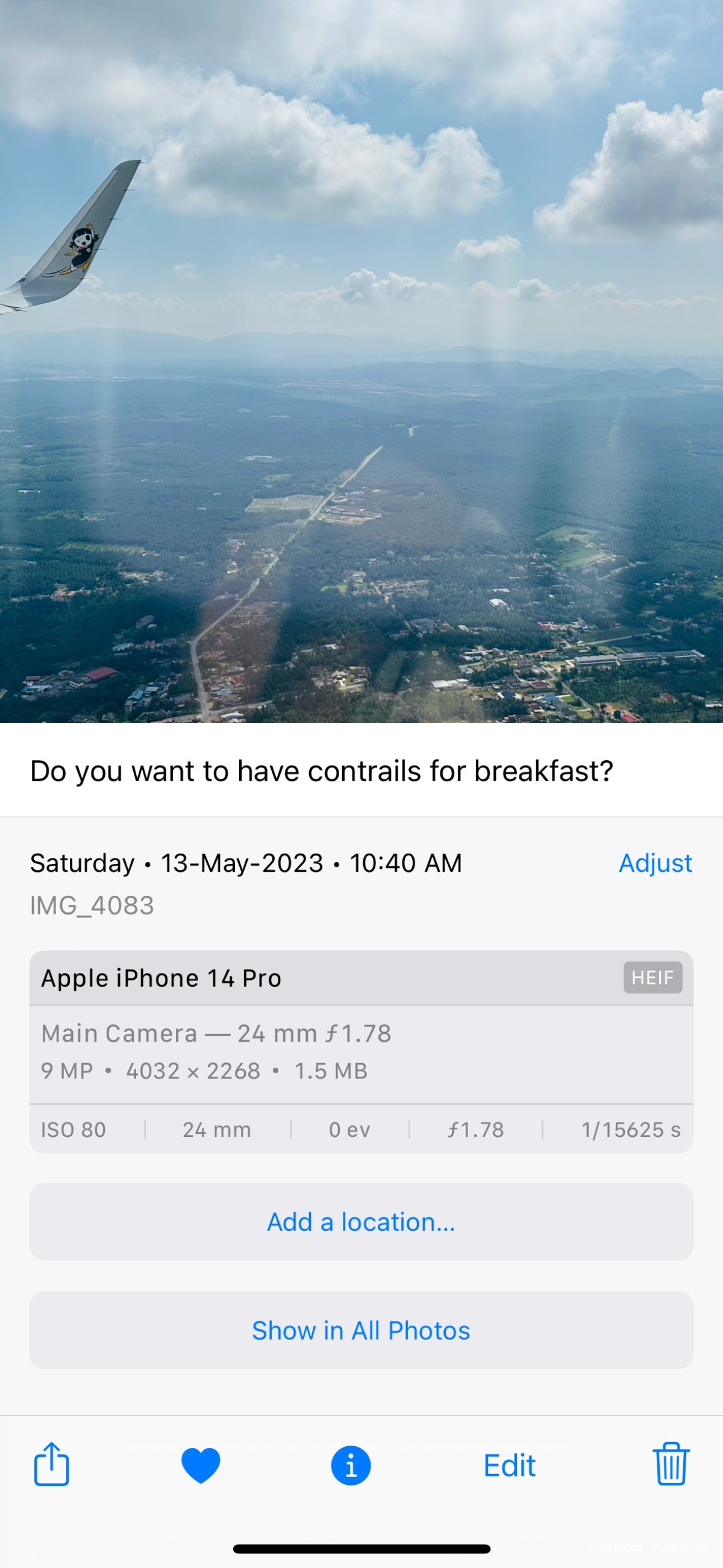
I simply cannot seem to get enough of the lush plantations at Sepang, the southerly suburb of Kuala Lumpur that houses not only KLIA but also the Sepang International Circuit, which hosted the Grand Prix until 2017.
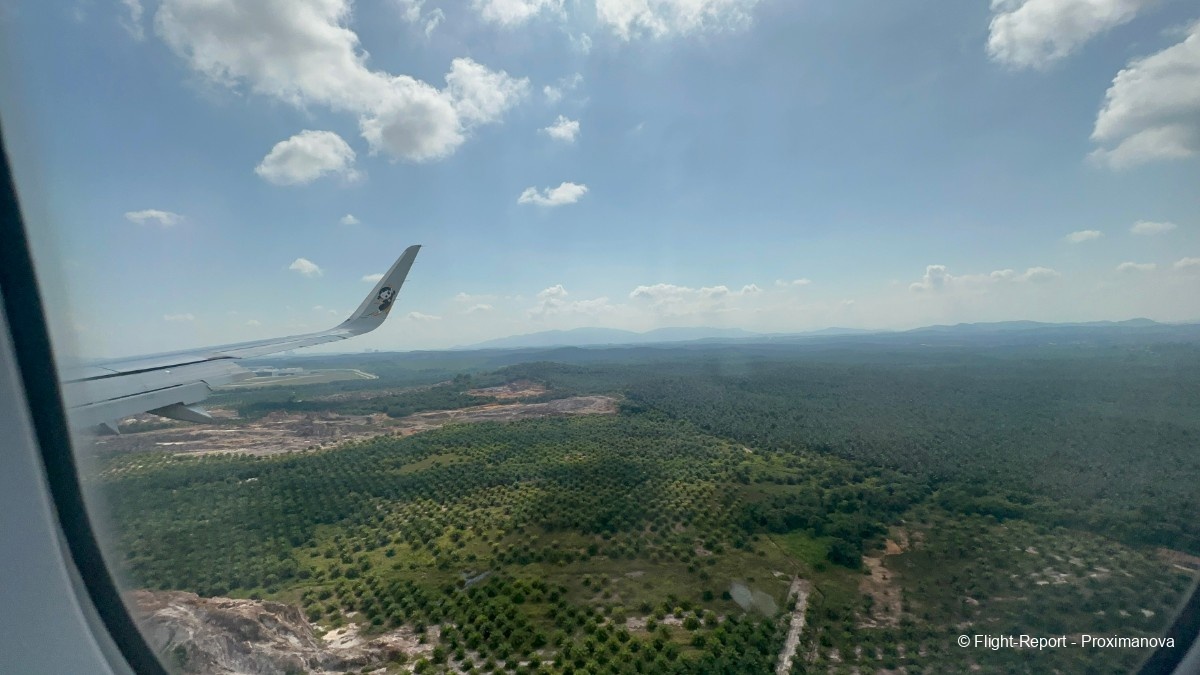
Which is why I keep returning here every so often, but this would be the very first time I’d clear Malaysian imigresen, and finally set foot in the first foreign country I’d ever visited back in 2013.
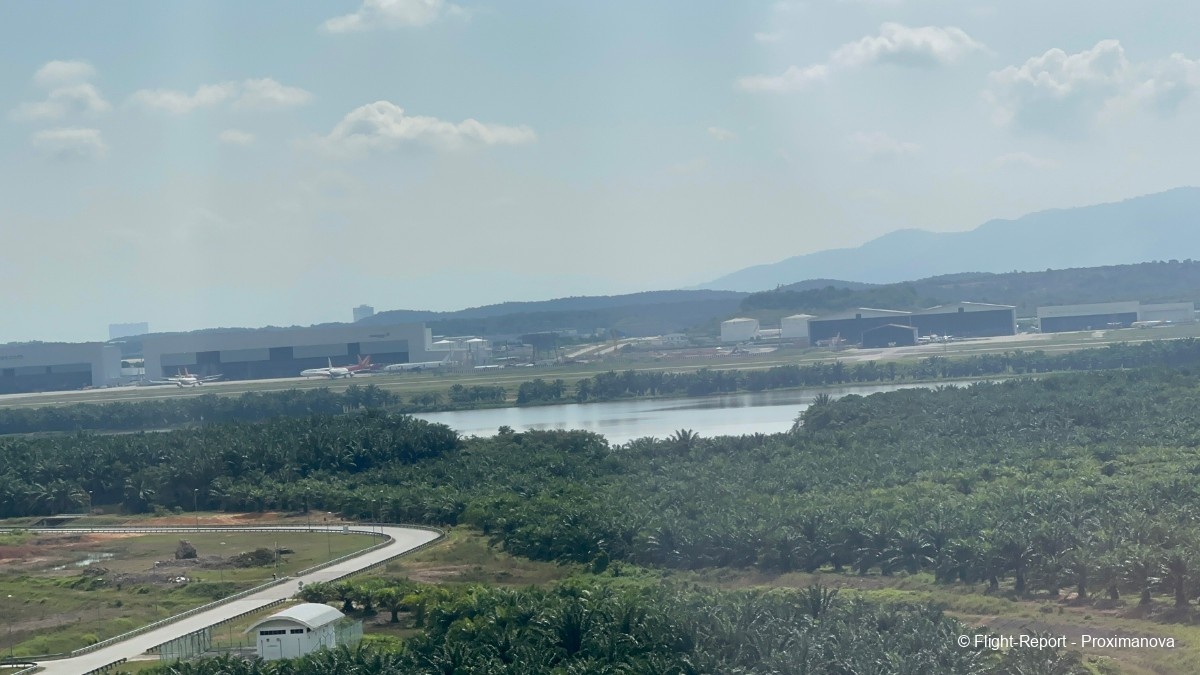
At a quarter to eleven, flight TR452 came to an end, screeching into AirAsiaLand. Like the legendary boxer Muhammad Ali, that black-and-yellow girl on the winglet floats like a butterfly and stings like a bee.
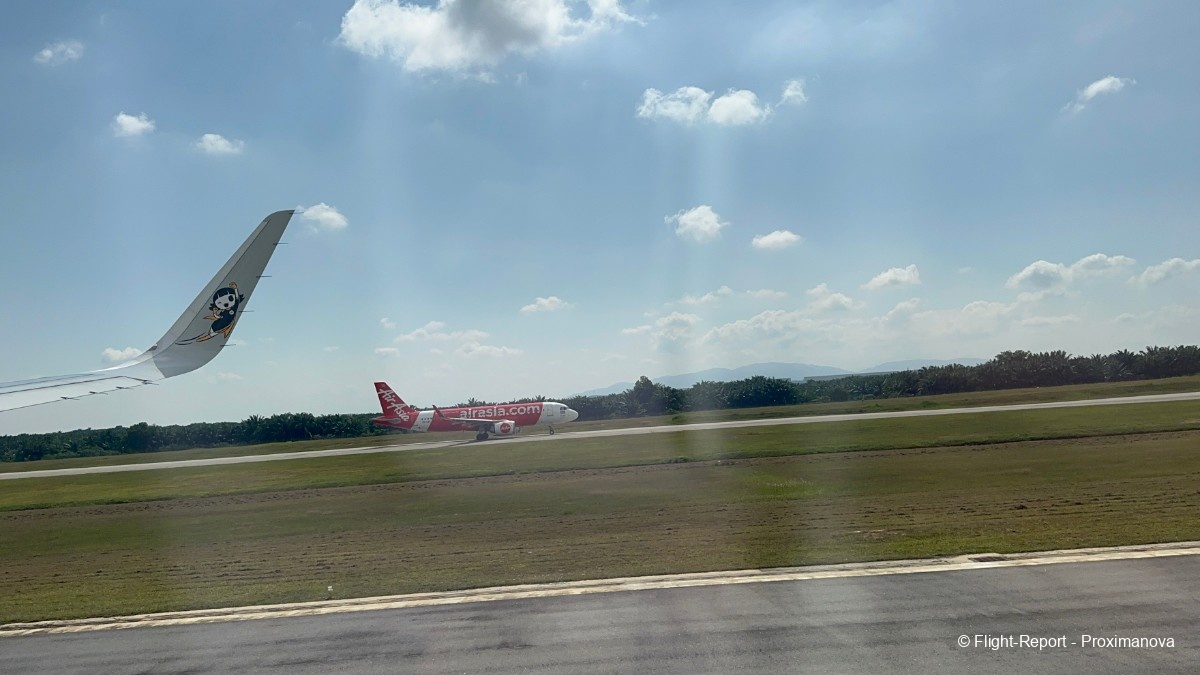
The black Powerpuff-ish Girl with an eye patch sped past the all-white 9M-XBF, an A330-300 of AirAsia X with no titles or paint whatsoever, as I saw during my last visit here in January.

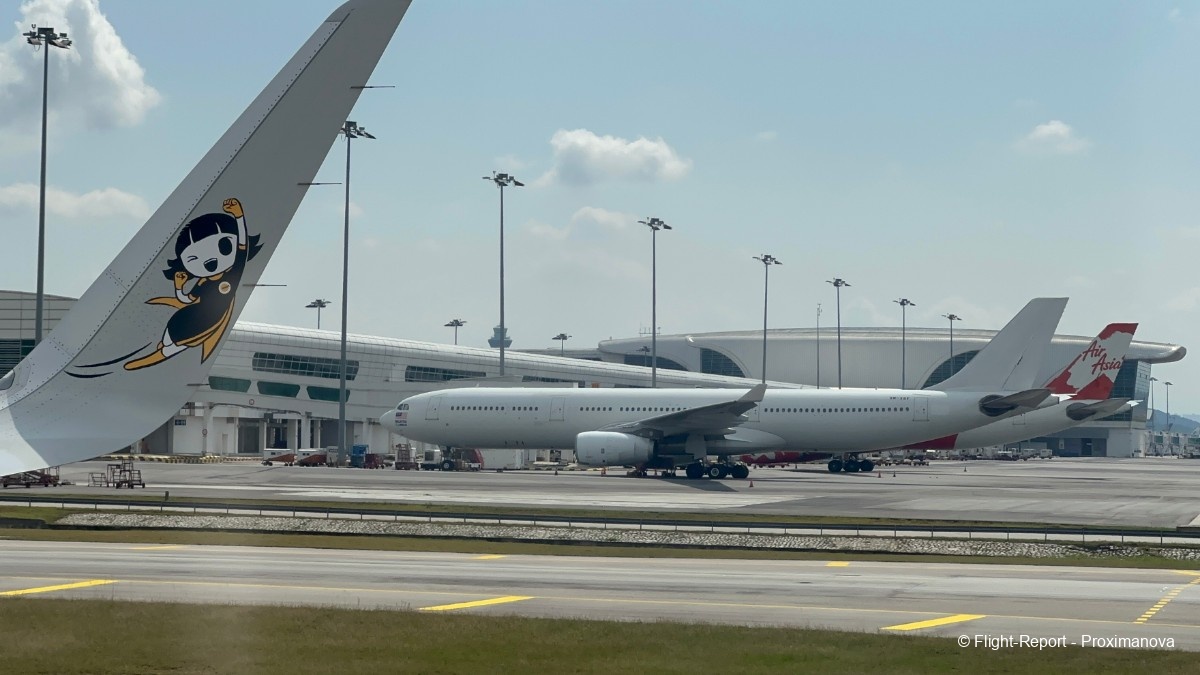
You may think that our yellow jet was an outlier in this red territory, but when seen from out the window, I’d say the grey winglet blended in better with the dull white buildings than the peppy red jets did. Which is about the only compliment I can give for Scoot’s livery.
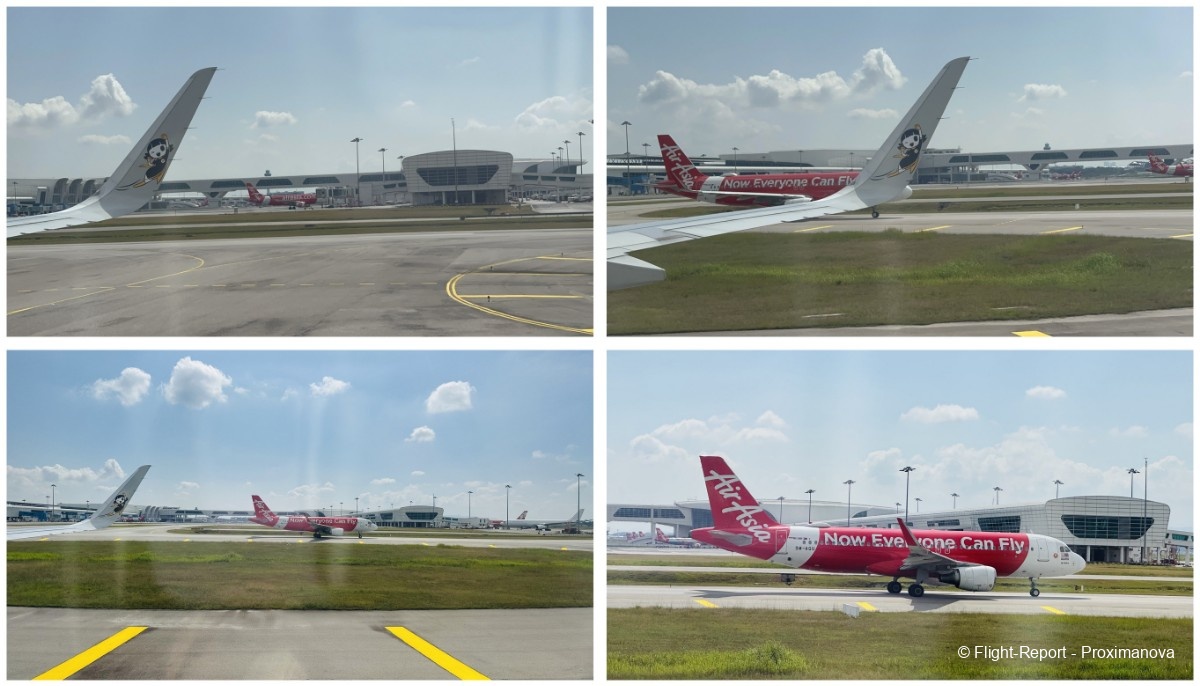
Not many AK special liveries this time — other than the one further below.

At around 10:55, November Charlie India drew up to one of the KLIA2 gates, at which stood a jetbridge with Celcom Axiata 4G branding.
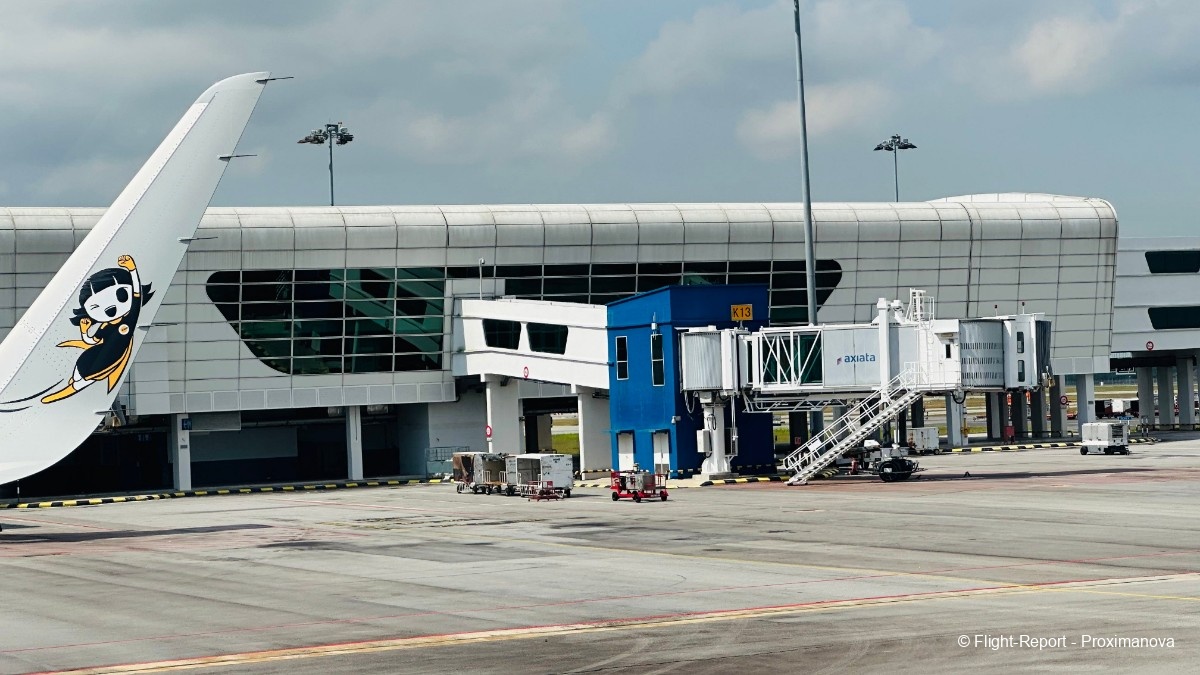
Our neighbour was an exceptional specimen: 9M-AHL — painted in the airasia Super App livery with ‘IT’S SUPER!’ screaming from the fuselage — is perhaps the only AirAsia narrowbody aircraft to sport the newer airasia logo that was introduced in 2020, and is confined only to the app and website. Only two other planes have this logo: A330-300s 9M-XBG and 9M-XBH, also with a white body like PK-AZQ above at Changi, but with the existing AirAsia logo on the tail oddly paired with the new airasia logo on the fuselage. It seems that AirAsia is going to persist with this two-logos-one-brand strategy, and all the better for it, since you can’t get much better for an LCC in this part of the world.
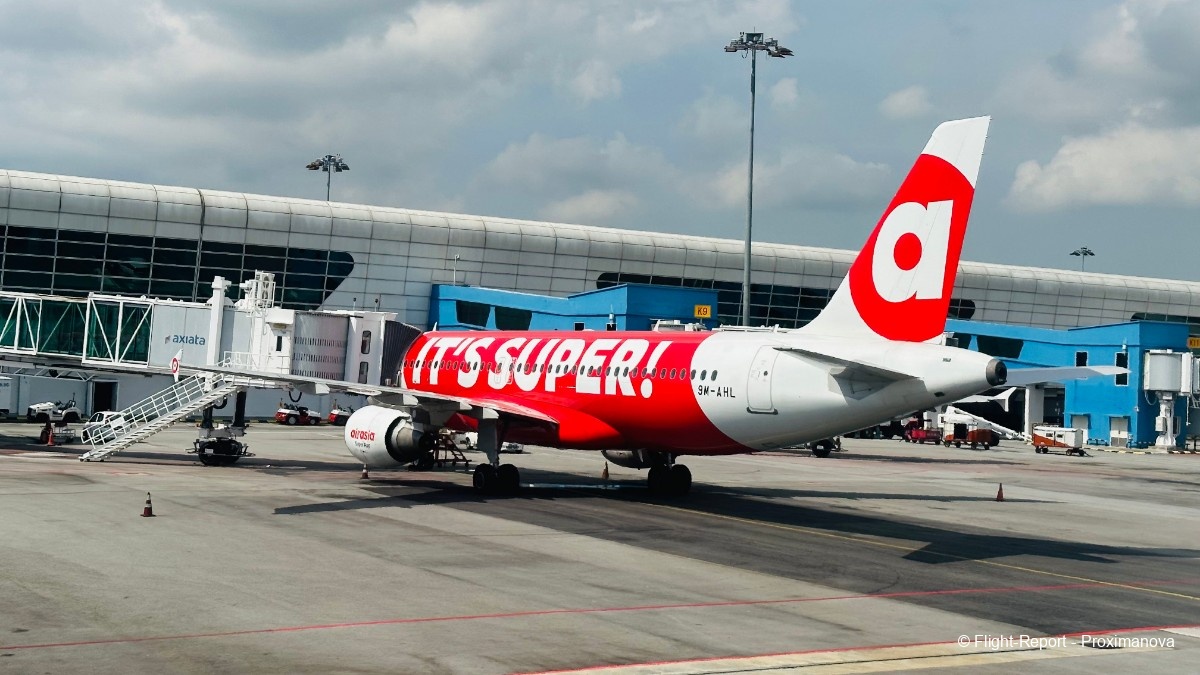
On the other side, 9M-AJN had just arrived, with the Indonesian (not visible below), Malaysian, Thai, Filipino and Japanese flags above the registration, as well as the ’Now Everyone Can Fly’ titles on the right side but not the left. These flags and titles have since been removed, and both sides ought to now have the same ‘airasia.com’ titles.
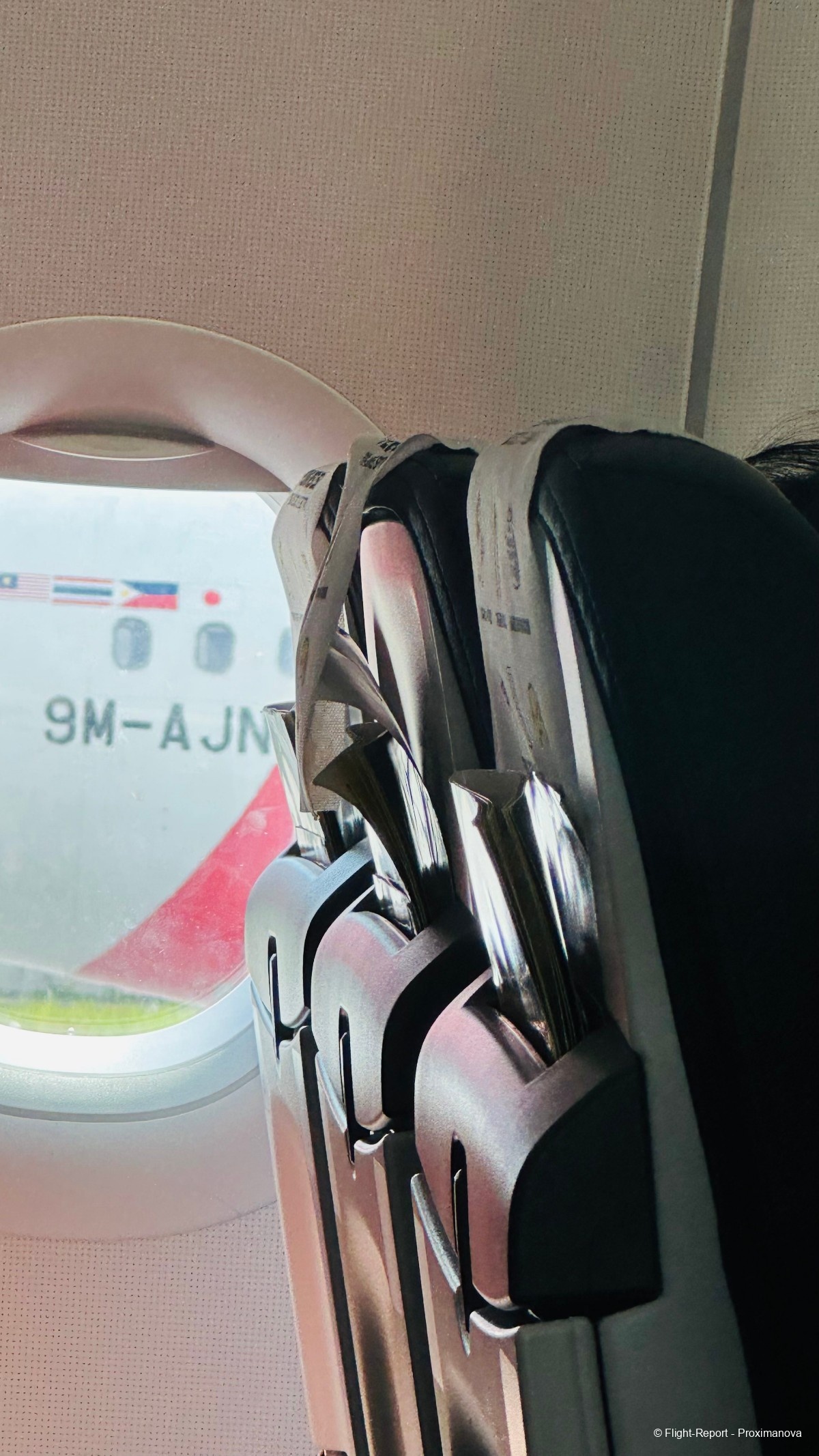
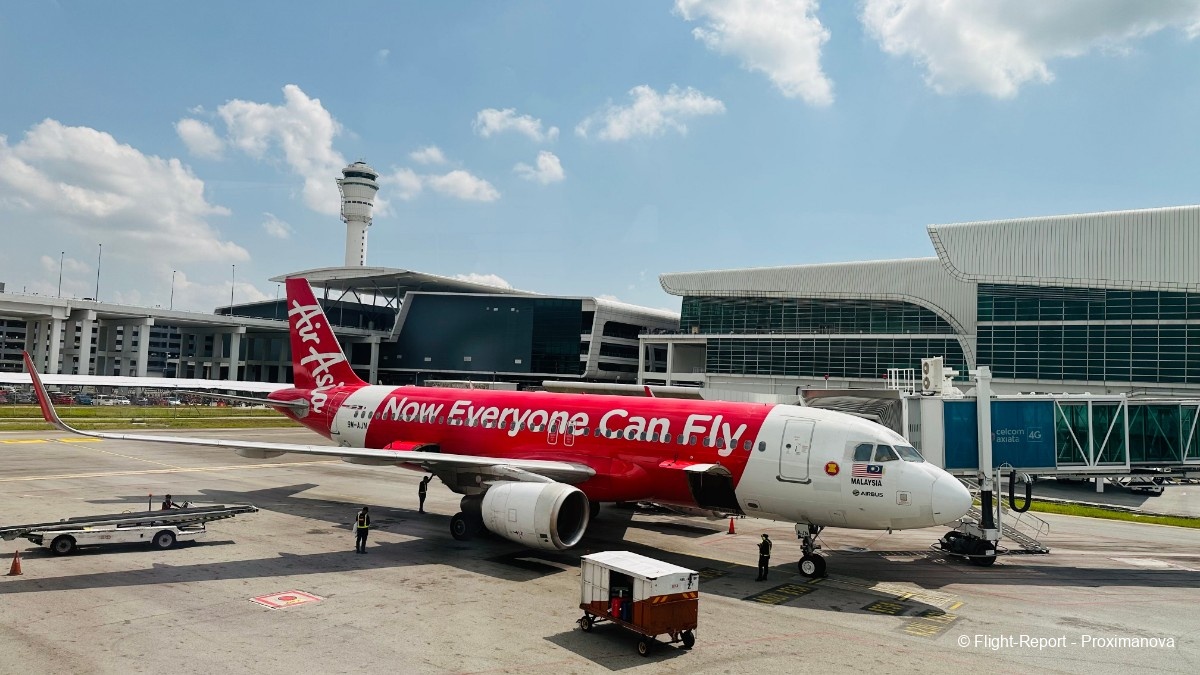
While the passengers behind continued to yak away as they got up to disembark, the sight of the sunglassed cool dude only drove me further up the wall. Not only did TR refuse to do anything special with its inflight portal beyond some food ordering, but it couldn’t even get it to work when airborne. At this point it may just as well do an IndiGo and rip out all semblance of inflight portals and connectivity from the aircraft. (Though, in September 2019, it announced a partnership with Indian streamer SonyLIV in which content could be downloaded to your mobile device before takeoff, this did not catch on, and four years later IndiGo remains the completely streaming-less, zero-entertainment airline it has always been, which is still honestly less infuriating than Scoot.)
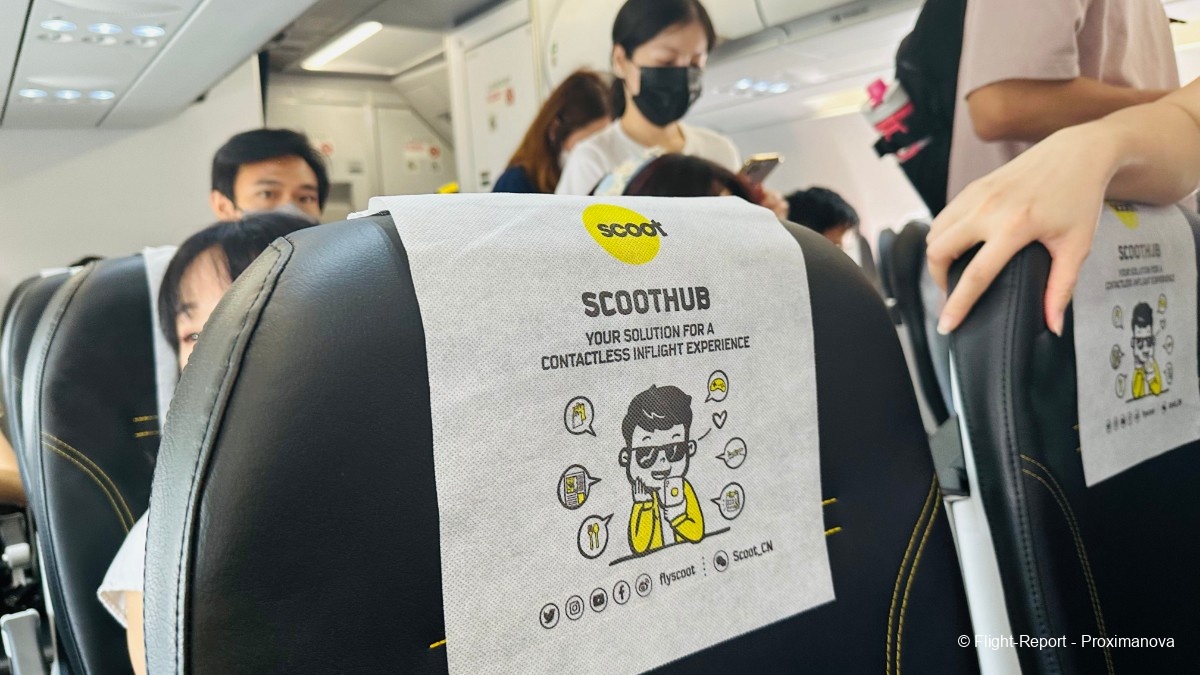
Goodbye and good riddance, Ong Lai! At least IndiGo never promises to upgrade its catering and entertainment options — thereby preventing any disappointment — but Scoot makes big claims with its advertising and service and then doesn’t follow through. Why don’t you learn something from the big red sign behind you, and the plane that’s taking off right above it?
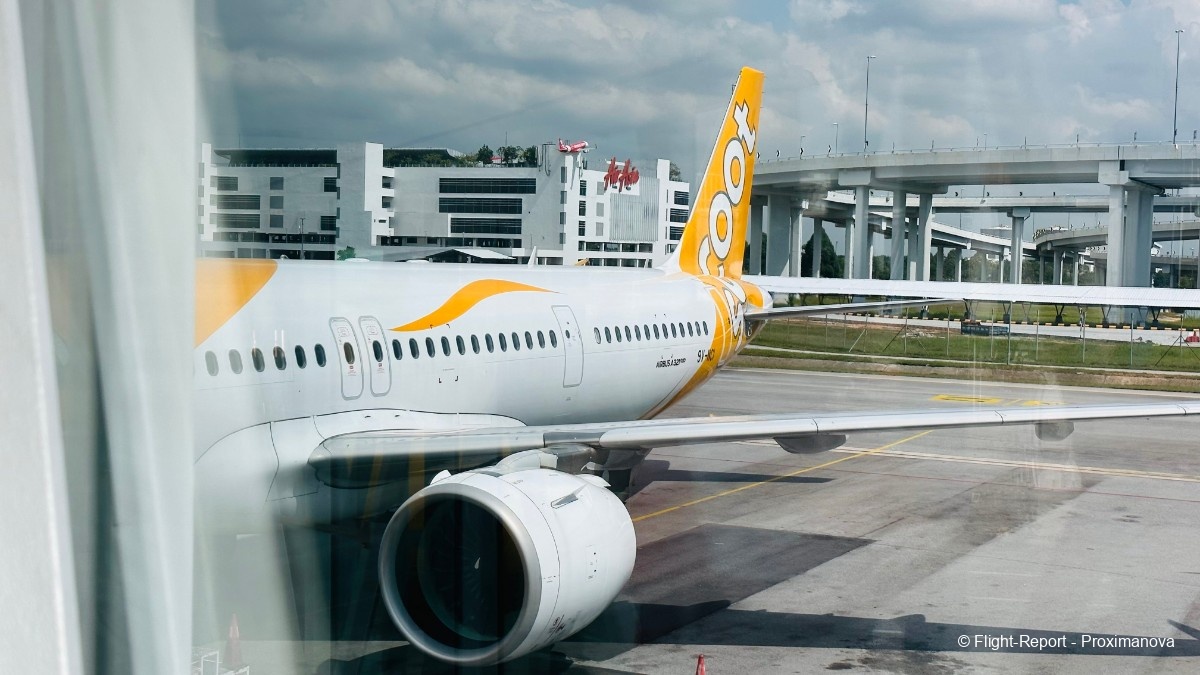
These were the arrivals for the time being, all from within Southeast Asia with the exception of Etihad’s A6-ETQ. I’ve written about 9M-AHE, in the ‘Jannine’ livery, in a previous report when arriving from Hyderabad. There was also a silver-and-red newcomer in town: MYAirline, whose code is Z9 — at the very bottom of the ‘letter–number’ series of IATA codes — and which registers its A320s in the 9M-DA* series, somewhat like Indian all-737-MAX startup Akasa Air going for the VT-YA* series.
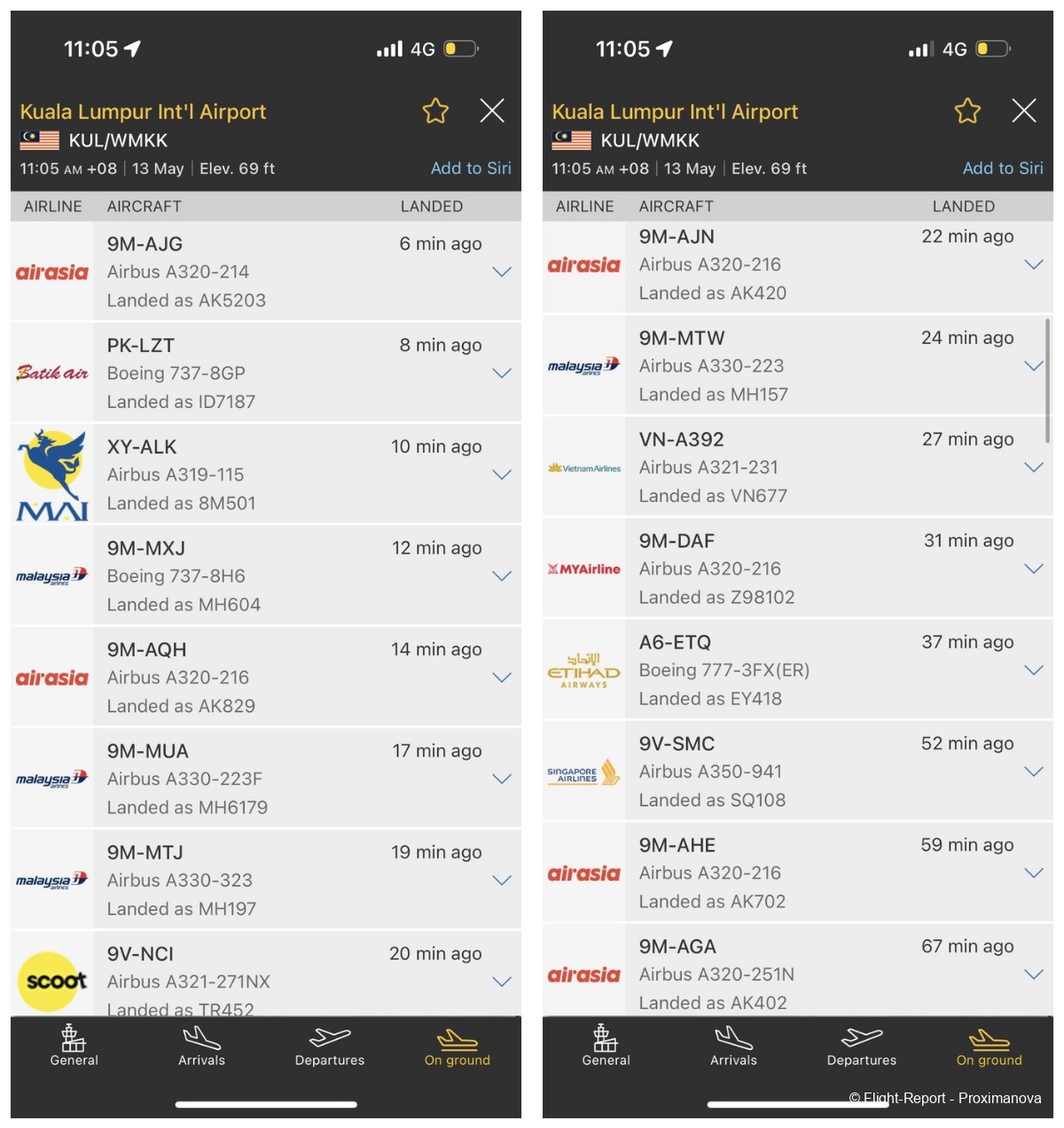
Oddballs all three of them: 9M-AHL, the only A320 with the new airasia logo; 9M-AJN, with big ‘airasia’ titles (without the .com) to the left, which is no longer part of the standard livery; and in between them the white-and-yellow 9V-NCI, which I was only too glad to get the heck away from. I’d much rather fly Hotel Lima or Juliet November than this yellow-and-black stinging wasp of an airline again.
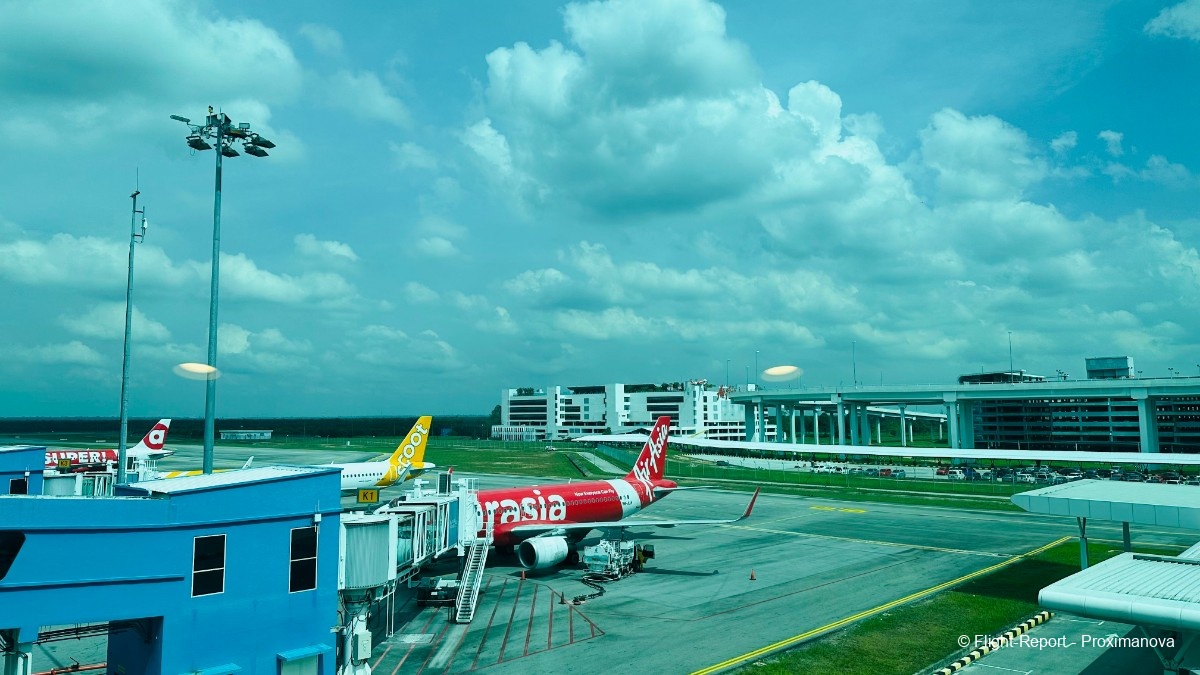
Not far off from them stood 9M-VAA, in the ‘3, 2, 1, take-off’ livery AirAsia uses to promote its A321neos. She is at present one of only four A321neos in the entire AirAsia group: two Malaysian (9M-VAA/VAB) and two Thai (HS-EAA/EAB), and they quite frequently fly to Singapore. Unlike the likes of VietJetAir or Cebu Pacific — let alone IndiGo, the largest A321neo operator in the world — AirAsia hasn’t managed to take delivery of any A321s since late 2019, and it is only in 2024 that it intends to resume A321 deliveries; it has a whopping 362 on order, even more than 6E. Then again, other Southeast Asian countries, and in particular Indonesia and to a large extent Thailand, get by without any A321s at all!

These were the departures at 11 minutes past 11, and they were expectedly all within ASEAN or South Asia — many of them domestic Malaysian routes — as far as KLIA2 was concerned. While it’s still very much AK-dominated, MYAirline, the new kid on the block, has started to be more visible, and over the months you should be seeing more flight numbers beginning with Z9.
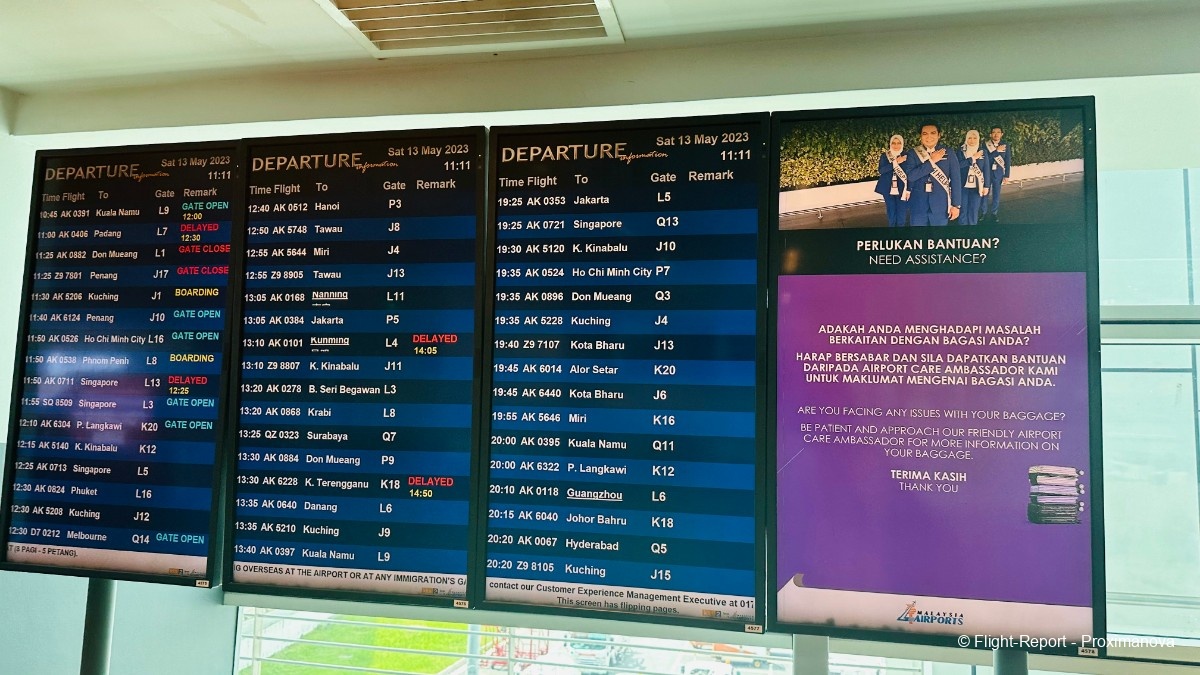
Now I proceeded to the immigration counters, where a North Indian couple and their two teenage kids (bespectacled girl and non-bespectacled boy) were among those waiting patiently in line. As below, the girl had white headphones dangling around her neck, and documents in both hands, while her brother and their parents impatiently continued to mutter at the slow progress.
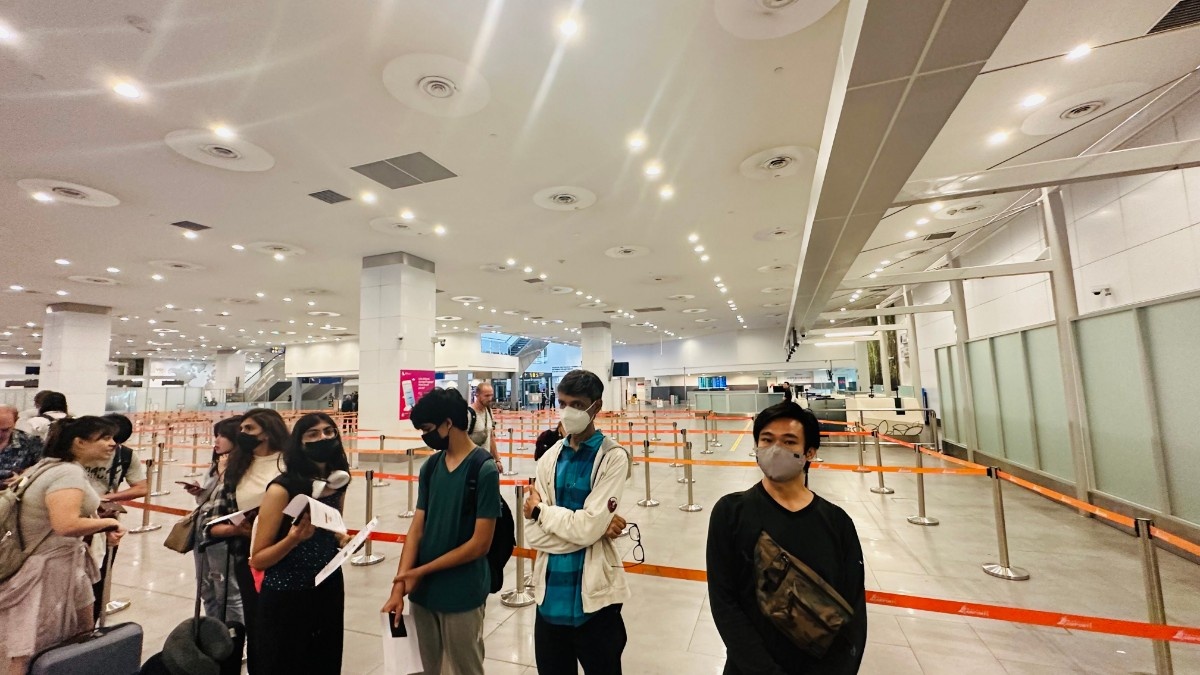
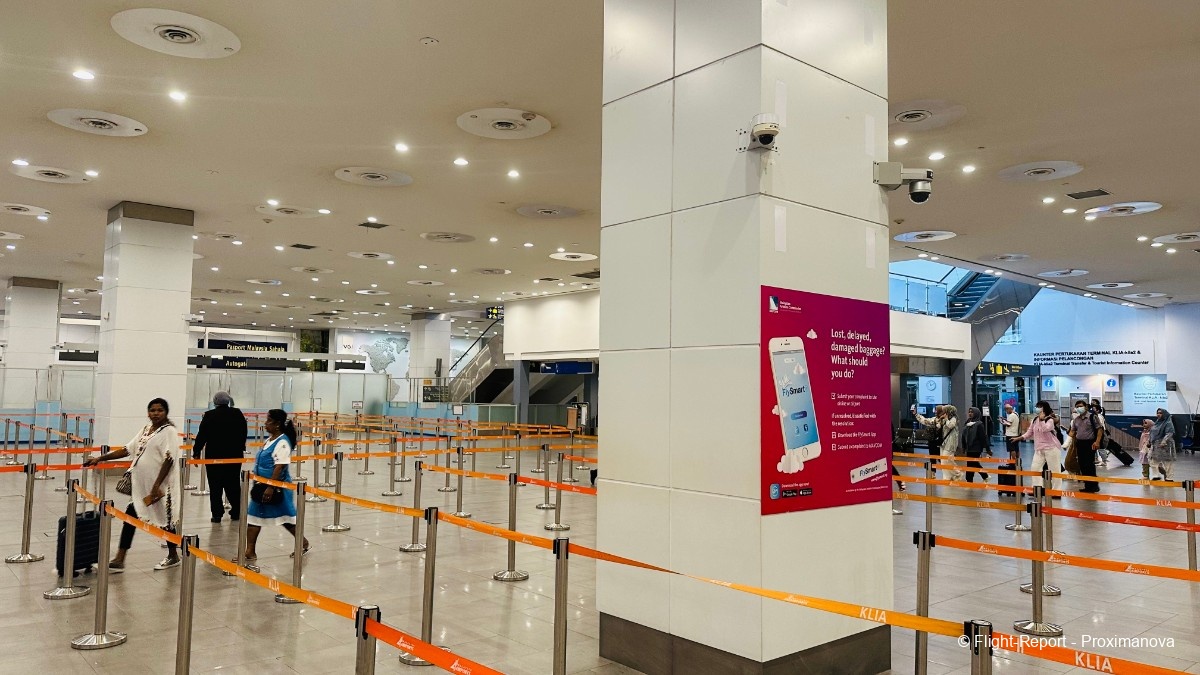
By around half-past eleven I proceeded past both immigration and baggage pick-up, and was now at the KLIA Ekspres counter, with its signage pointing me to the station at Level 2. I’d bought a ticket online the previous day for the somewhat expensive price of RM75, including not only a one-way KLIA Ekspres fare but also a two-day travel pass entitling me to use most of the Rapid KL suburban transit lines around the Klang Valley.
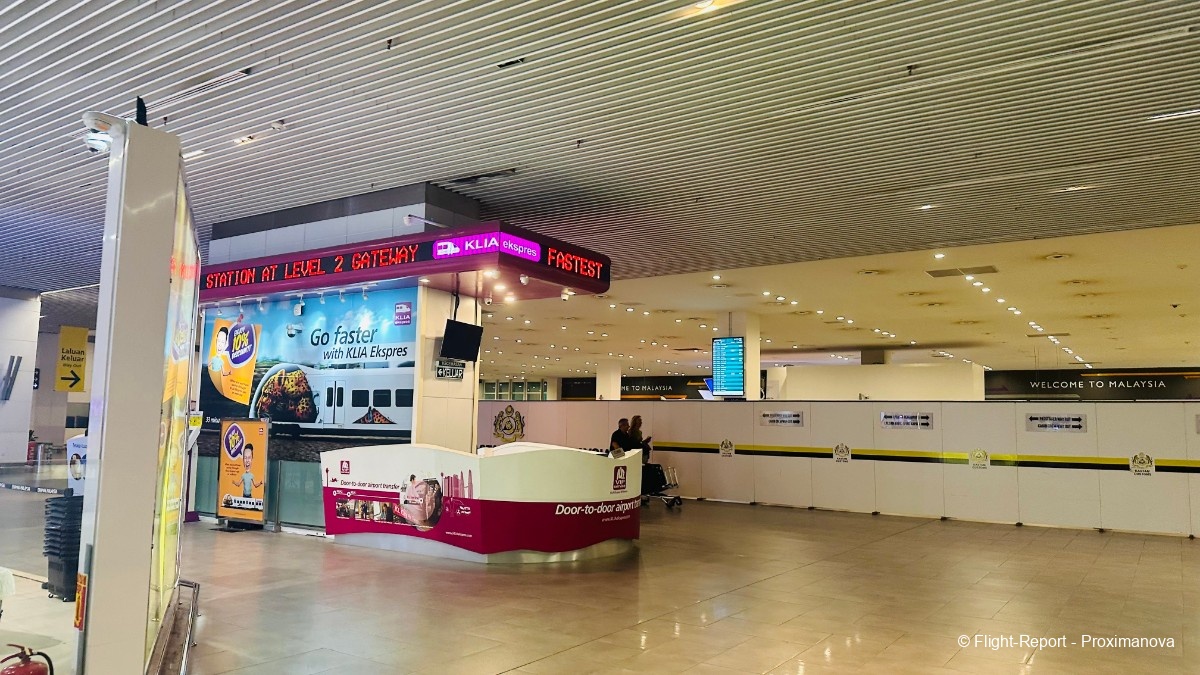
An ad for precisely the same KL TravelPass had been plastered on the information desk, with an electronic ticket-vending machine placed beside.

Selamat datang ke Malaysia, said the sign, and terima kasih for reading my latest ramble, which is less of a report and more of a rant. However, should you click that ‘Travelling Bonus’ button below, you will find a much more pleasant and memorable experience: the KLIA Ekspres journey to KL Sentral, the likes of which you won’t get in Singapore — then again, KLIA is so far from the city that it warrants an express train service, which Changi does not need at all!
